Forums
- Forums
- Axis And Allies Forum
- General Discussion
- Aviation News
Aviation News
Post a reply
- Go to Previous topic
- Go to Next topic
- Go to Welcome
- Go to Introduce Yourself
- Go to General Discussion
- Go to Screenshots, Images and Videos
- Go to Off topic
- Go to Works in Progress
- Go to Skinning Tips / Tutorials
- Go to Skin Requests
- Go to IJAAF Library
- Go to Luftwaffe Library
- Go to RAF Library
- Go to USAAF / USN Library
- Go to Misc Library
- Go to The Ops Room
- Go to Made in Germany
- Go to Campaigns and Missions
- Go to Works in Progress
- Go to Juri's Air-Raid Shelter
- Go to Campaigns and Missions
- Go to Works in Progress
- Go to Skinpacks
- Go to External Projects Discussion
- Go to Books & Resources
-
 Main AdminA U.S. Marine Corps F-35B Lightning II attached to Marine Fighter Attack Squadron (VMFA) 225, 15th Marine Expeditionary Unit, conducts a panel check during an air power demonstration aboard the amphibious assault ship USS Boxer (LHD 4) in the Pacific Ocean Nov. 10, 2024. The demonstration was held to celebrate the 249th Marine Corps birthday. Elements of the 15th MEU are currently embarked aboard Boxer and are conducting routine operations in U.S. 3rd Fleet. (U.S. Marine Corps photo by Cpl. Luis Agostini)
Main AdminA U.S. Marine Corps F-35B Lightning II attached to Marine Fighter Attack Squadron (VMFA) 225, 15th Marine Expeditionary Unit, conducts a panel check during an air power demonstration aboard the amphibious assault ship USS Boxer (LHD 4) in the Pacific Ocean Nov. 10, 2024. The demonstration was held to celebrate the 249th Marine Corps birthday. Elements of the 15th MEU are currently embarked aboard Boxer and are conducting routine operations in U.S. 3rd Fleet. (U.S. Marine Corps photo by Cpl. Luis Agostini)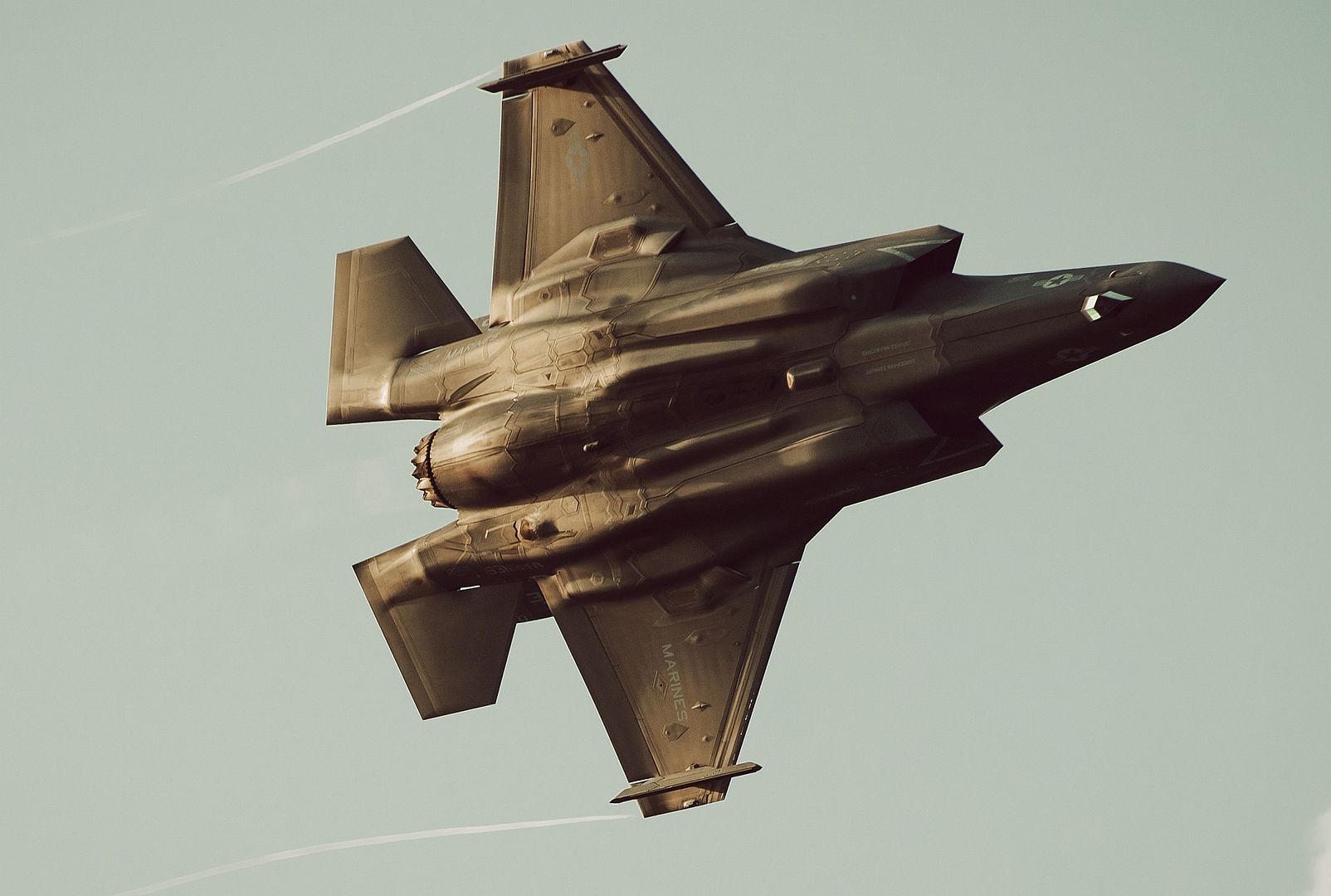
U.S. Marine Corps F-35B Lightning II aircraft attached to Marine Fighter Attack Squadron (VMFA) 225, 15th Marine Expeditionary Unit, conduct a slow pass near the amphibious assault ship USS Boxer (LHD 4) during an air power demonstration aboard Boxer in the Pacific Ocean Nov. 10, 2024. The demonstration was held to celebrate the 249th Marine Corps birthday. Elements of the 15th MEU are currently embarked aboard Boxer and are conducting routine operations in U.S. 3rd Fleet. (U.S. Marine Corps photo by Cpl. Luis Agostini)
11.07.2024
U.S. Air Force F-15E Strike Eagles from the 492nd Fighter Squadron, RAF Lakenheath, England, arrive in the U.S. Central Command area of responsibility. (Photos by Master Sgt. Luke Olson)
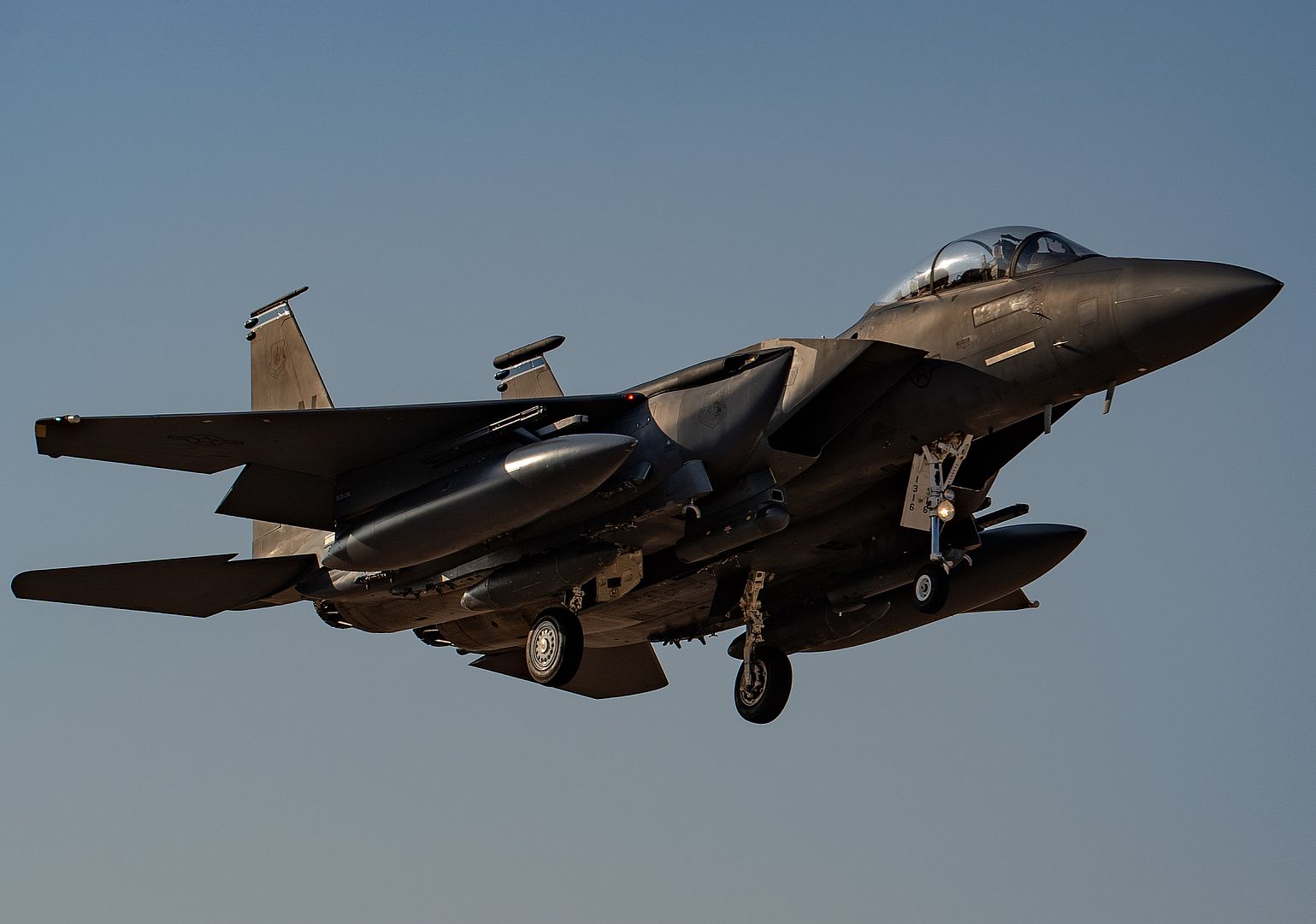
A U.S. Air Force A-10C Thunderbolt II assigned to the 107th Expeditionary Fighter Squadron (EFS) sits on a flightline within the U.S. Central Command (USCENTCOM) area of responsibility (AOR), Nov. 2, 2024. The 107th EFS is deployed to the USCENTCOM AOR to support regional security and stability. (Photo by Airman 1st Class Zeeshan Naeem)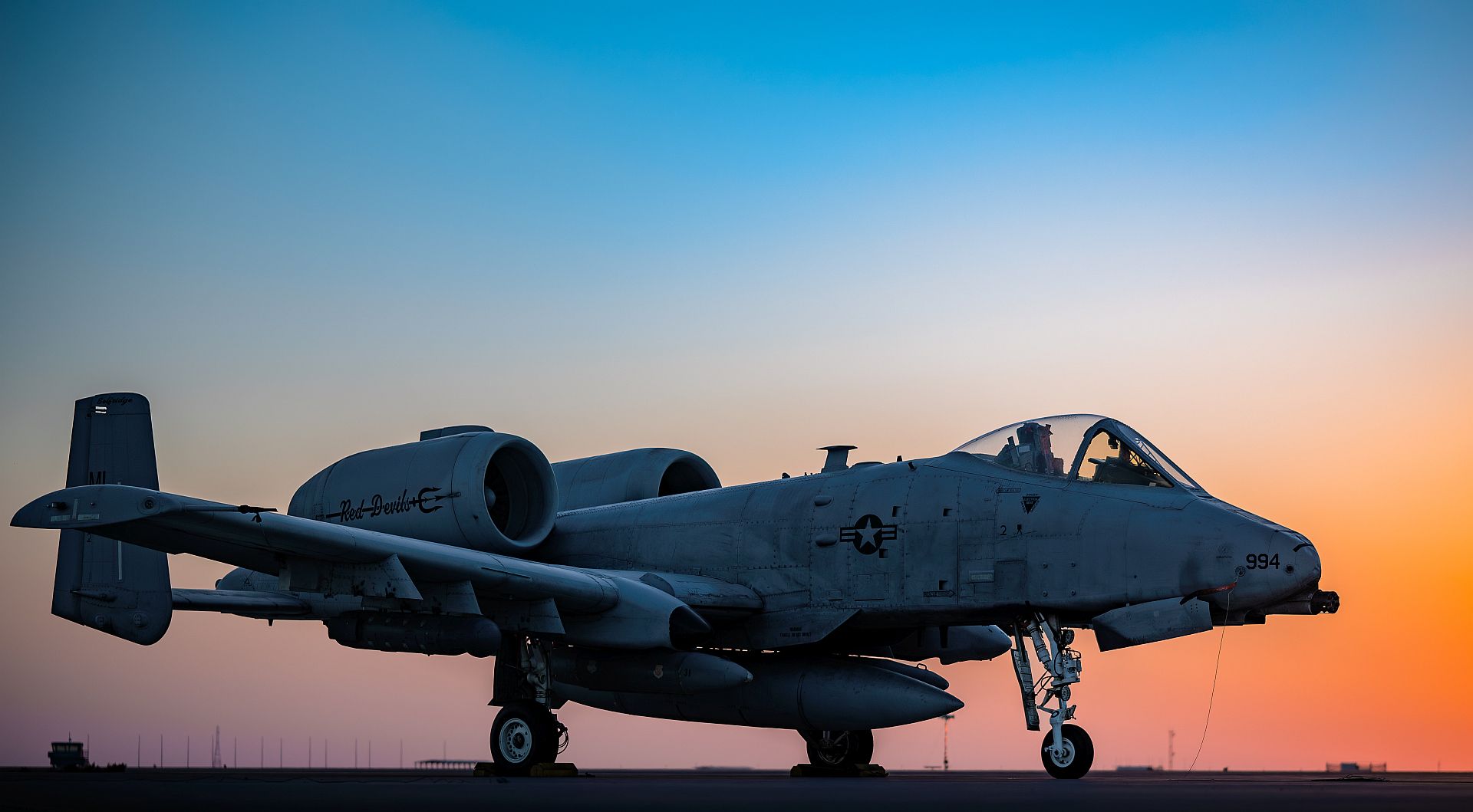
Natal, Brazil, November 09, 2024 – The Swedish Ministry of Defense announced the selection of the Embraer (NYSE: ERJ/B3: EMBR3) C-390 Millennium as Sweden’s new tactical transport aircraft. This strategic decision from another North Atlantic Treaty Organization (NATO) member country marks the first acquisition of the C-390 in Northern Europe, underscoring Sweden’s commitment to enhancing its defense capabilities with state-of-the-art aircraft.
“Embraer is honored with this selection by Sweden. After several European NATO countries selected the C-390, this decision is a testimony that this multi-mission aircraft represents a tremendous operational capability upgrade compared to previous generation tactical transport aircraft,” said Bosco Da Costa Junior, President & CEO of Embraer se & Security. “The aircraft is being recognized, gradually, by the most advanced Air Forces in the world such as the Swedish Air Force. This selection encourages us to offer our customers the aircraft they need to perform their most demanding missions with unparalleled versatility, reliability, and performance.”
Embraer already has a long-term partnership with Sweden, which will be further deepened with the C-390 selection. The company is ready to support the Swedish Armed Forces in order to meet the demanding requirements of their acquisition process, as this decision represents a new chapter in Brazil-Sweden relations.
The C-390’s selection aligns with a growing trend among European NATO member countries recognizing the aircraft’s effectiveness in addressing both current and future defense needs. Sweden is the sixth European nation to select the aircraft, along with Austria, Czech Republic, Hungary, Netherlands and Portugal. Sweden’s acquisition of the C-390 will not only bolster national defense, but also enhance interoperability with allied forces while benefiting from the synergies present in Europe in terms of training facilities, support and logistics.
The C-390 has also been ordered by Brazil and South Korea. Since it entered into service with the Brazilian Air Force in 2019, the fleet in service has accumulated more than 15,000 flight hours, with a mission capability rate of 93% and mission completion rates above 99%, demonstrating exceptional productivity in the category.
-
 Main AdminA CV-22B Osprey from the 352nd Special Operations Wing conducts a flyover at a Veterans Day ceremony at Cambridge American Cemetery and Memorial, Cambridge, England, Nov. 11, 2024. 3,811 U.S. servicemen, women and civilians rest at the cemetery, having paid the ultimate price in defense of freedom. Veterans Day honors all of America's veterans for their quiet courage and exemplary service. (U.S. Air Force photo by Tech. Sgt. Aaron Thomasson)
Main AdminA CV-22B Osprey from the 352nd Special Operations Wing conducts a flyover at a Veterans Day ceremony at Cambridge American Cemetery and Memorial, Cambridge, England, Nov. 11, 2024. 3,811 U.S. servicemen, women and civilians rest at the cemetery, having paid the ultimate price in defense of freedom. Veterans Day honors all of America's veterans for their quiet courage and exemplary service. (U.S. Air Force photo by Tech. Sgt. Aaron Thomasson)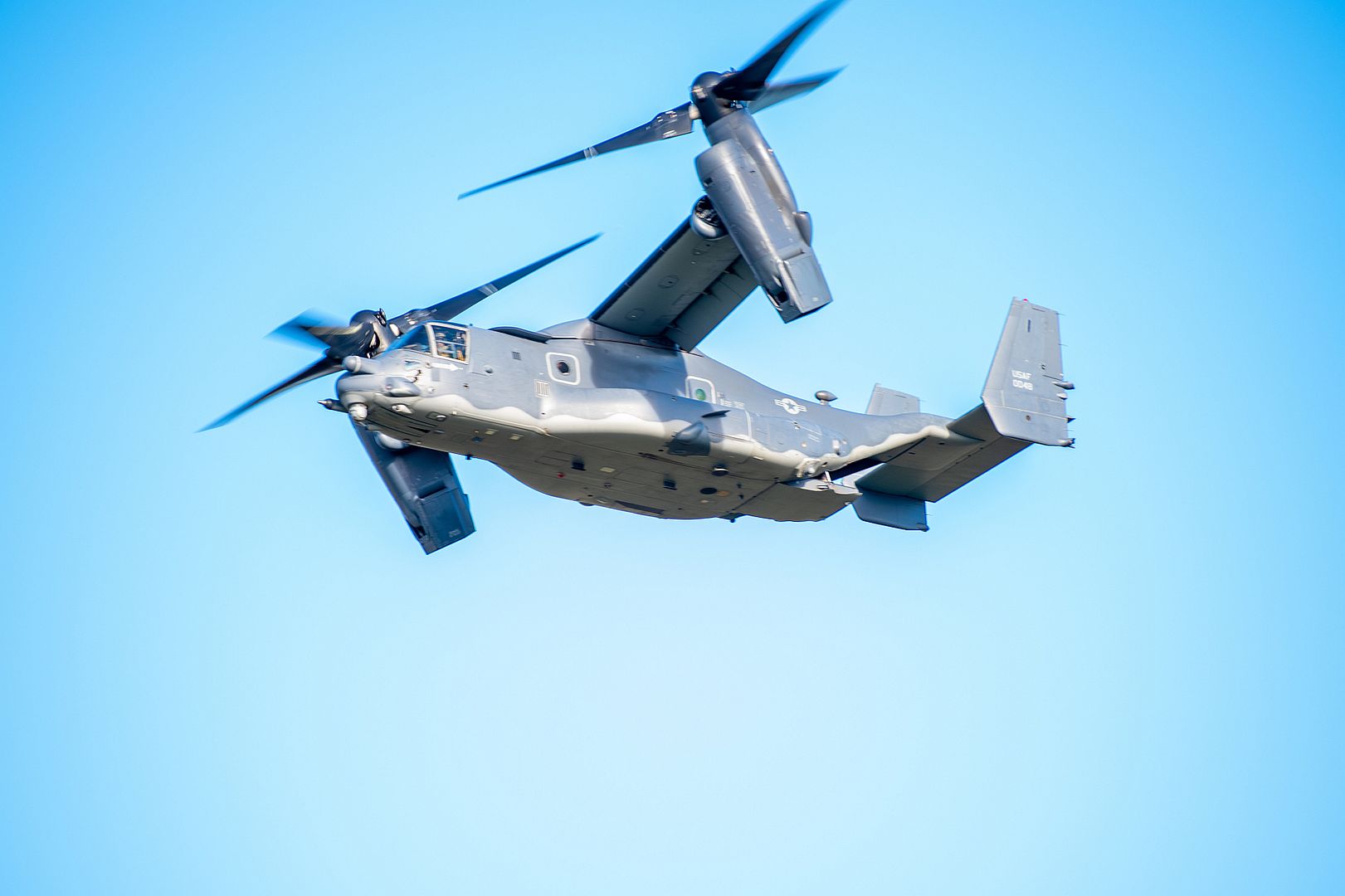
A Brazilian Air Force F-5M Fighter taxis on the flightline during CRUZEX 2024 at Natal Air Force Base, Brazil, Nov. 5, 2024. The USAF remains committed to its enduring promise of readiness, ensuring it can respond to any challenge alongside its partners and allies. (U.S. Air Force photo by Staff Sgt. Madeline Herzog)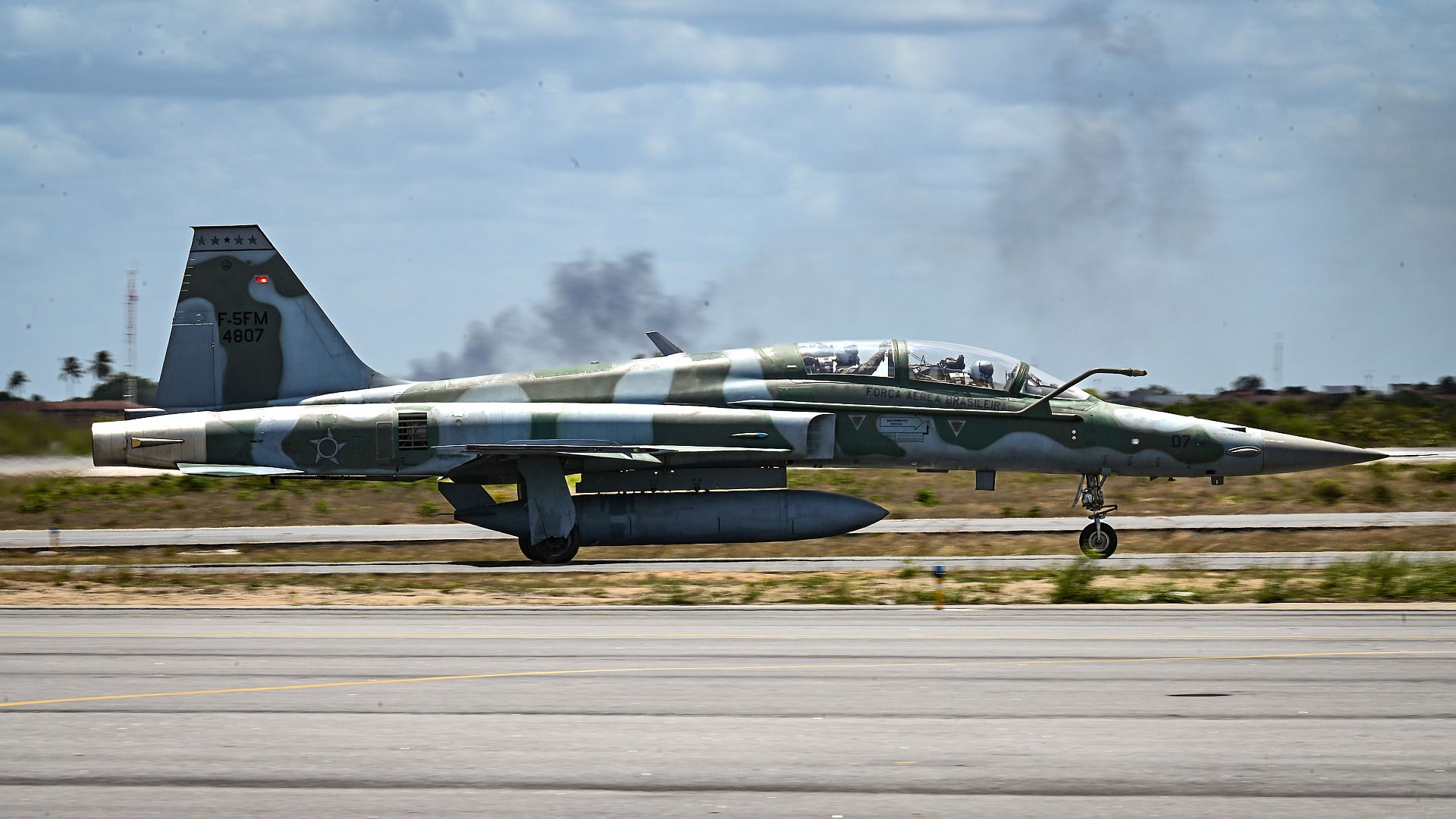
A U.S. Air Force F-15C Eagle assigned to the Louisiana Air National Guard 159th Fighter Wing taxis during CRUZEX 2024 at Natal Air Force Base, Brazil, Nov. 5, 2024. This exercise reinforces the enduring promise of shared security and cooperation among allied air forces in Latin America. (U.S. Air Force photo by Staff Sgt. Madeline Herzog)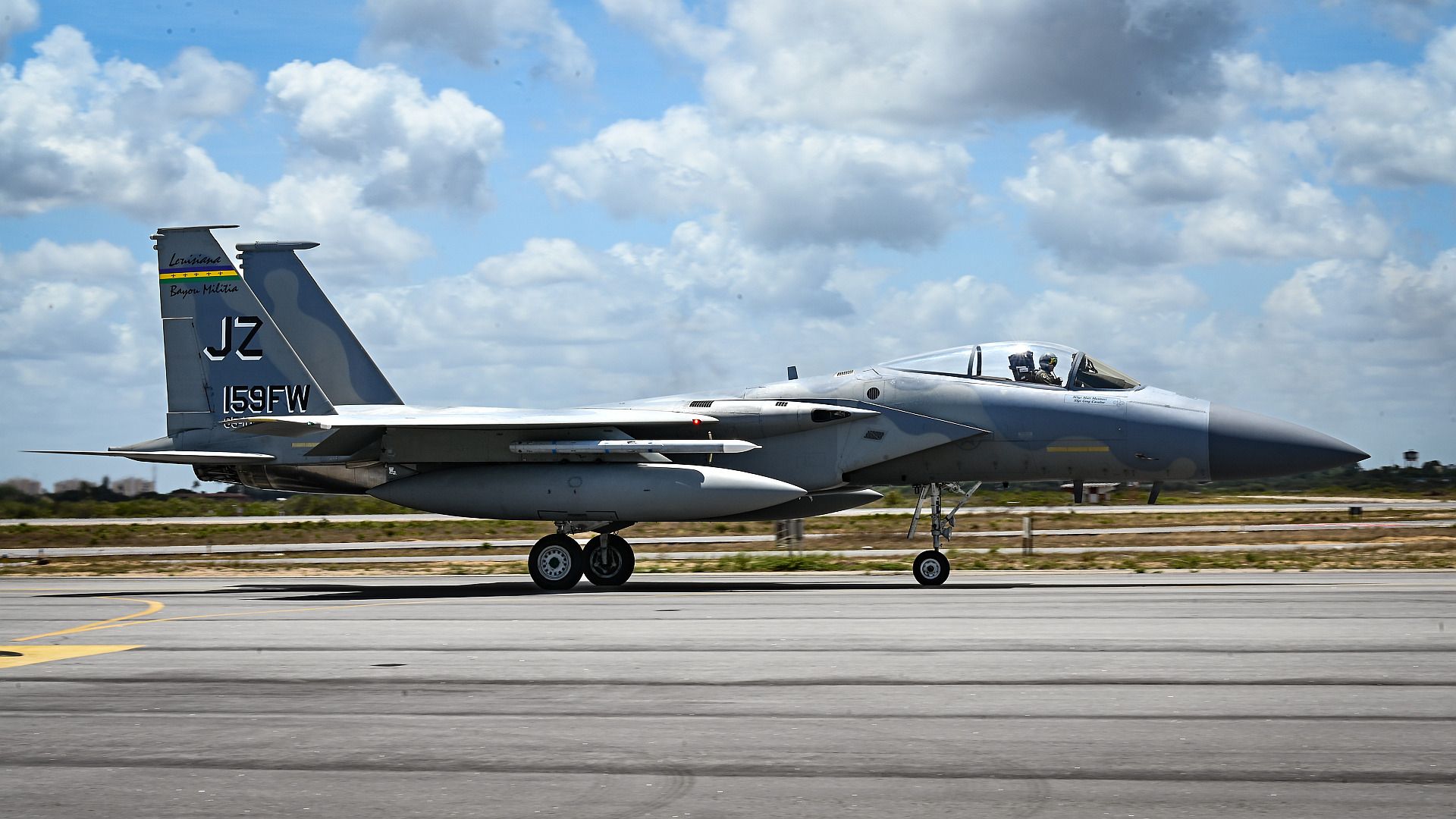
A Kalitta Air Boeing 747 taxis down the flightline at RAF Fairford, England, Nov. 1, 2024. The arrival marks the first cargo movement in support of Bomber Task Force Europe 25-1. Agile logistics and mobility activities, as showcased in operations and exercises, directly strengthen our ability to support our Allies and partners and respond to potential crises. (U.S. Air Force photo by Airman Adam Enbal)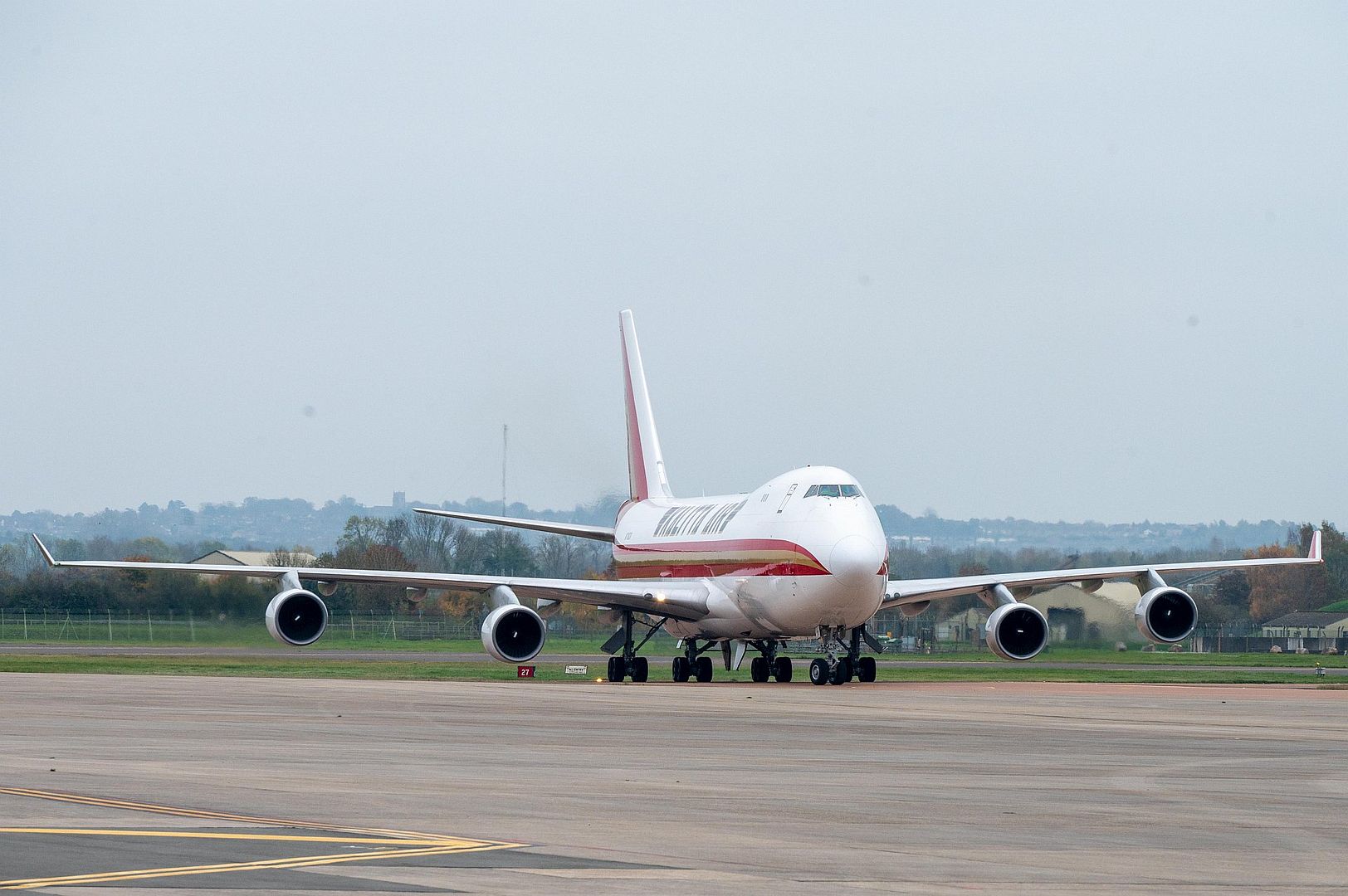
A CMV-22 Osprey tiltrotor aircraft assigned to Fleet Logistics Multi-Mission Squadron (VRM) 30 takes off from the Nimitz-class aircraft carrier USS Ronald Reagan (CVN 76) while underway in the U.S. 3rd Fleet area of operations, Nov. 7, 2024. Ronald Reagan provides a combat-ready force that protects and defends the United States, and supports alliances, partnerships and collective maritime interests in the Indo-Pacific region. (U.S. Navy photo by Mass Communication Specialist 2nd Class Eric Stanton)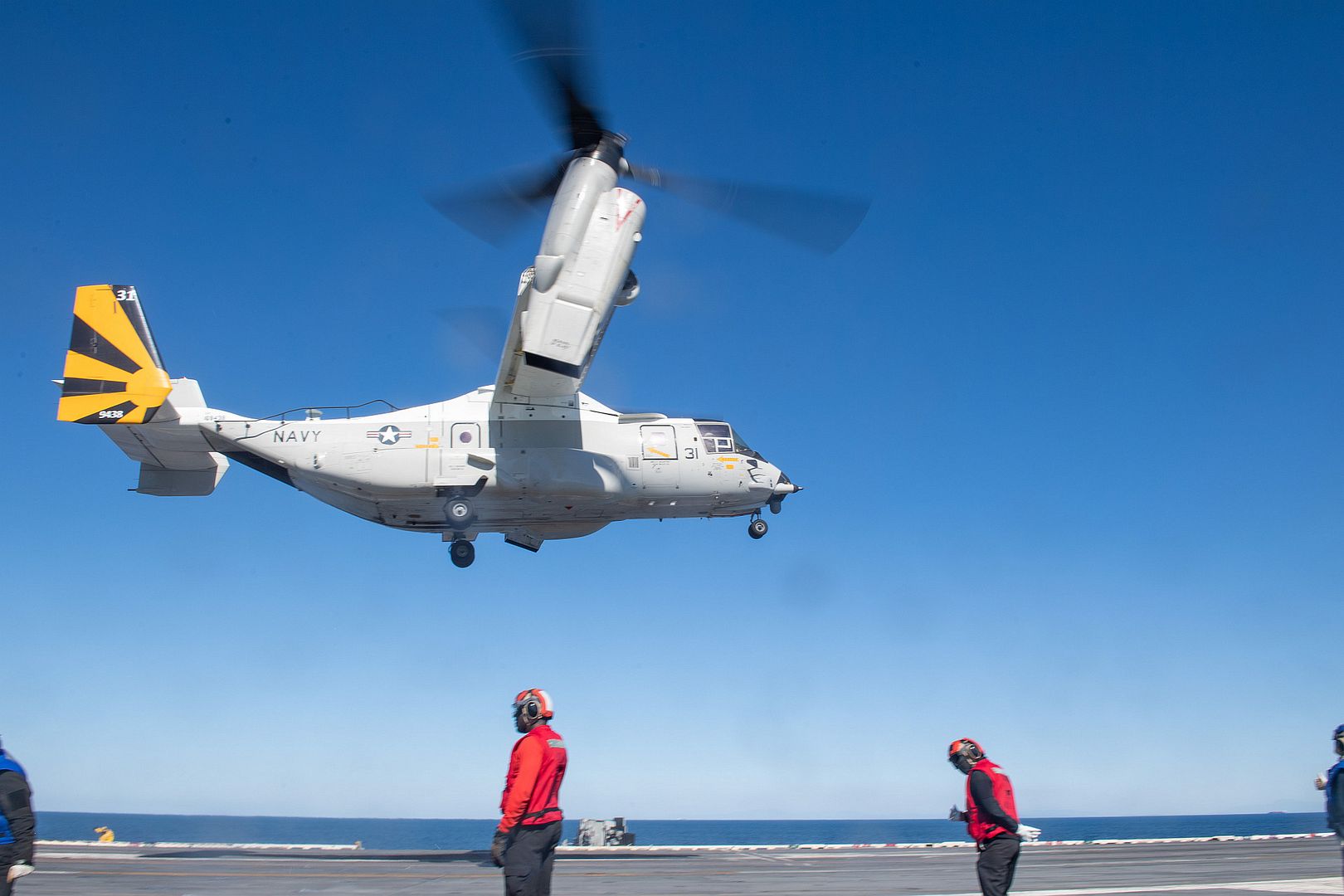
SEATTLE, Nov. 12, 2024 /PRNewswire/ -- Boeing [NYSE: BA] and Avia Solutions Group, the world's largest ACMI (aircraft, crew, maintenance, insurance) provider, today announced its first order with the company for 40 737-8s, with the potential to order 40 more later.
Avia Solutions Group has 11 air operator certificates (AOC) including Avion Express, Smartlynx, Klasjet, Air Explore, BBN, Ascend Airways and Skytrans among others. These AOCs operate year round in over 60 countries on behalf of various scheduled airlines and tour operators.
"As the world's largest ACMI provider, carrying over 35 million passengers annually for our clients, we have committed to a strategic approach of expanding our capacity to meet our customers' seasonal needs, and our first order with Boeing is a key pillar of this," said Gediminas Ziemelis, Chairman of Avia Solutions Group. "This is a proud moment for all of us at Avia Solutions Group and is testament to the fact that Avia Solutions Group is now entering a clear phase of sustained growth. These 737 MAXs will enhance the fleets of our airlines, giving their customers both operational flexibility and greater fuel efficiency."
The 737-8 is the market's most versatile single-aisle airplane, capable of operating profitably on short- and medium-haul routes. This flexibility is crucial for an ACMI operator like Avia Solutions Group, enabling it to provide additional capacity to airlines during peak travel periods or support operations during unexpected aircraft or staff outages.
"ACMI providers such as Avia Solutions Group offer important, flexible capacity to meet the dynamic demand in our industry, and we are honored Avia has selected Boeing airplanes to help meet that demand from its customers," said Brad McMullen, Boeing senior vice president of Commercial Sales and Marketing. "By choosing the 737-8, Avia Solutions Group is aligning with its customers' plans to operate increasingly fuel-efficient fleets that improve the passenger experience."
The 737-8 can seat between 162 and 210 passengers, depending on configuration, and has a range of up to 3,500 nautical miles (6,480 km). In addition to improved environmental performance for operators, 737 MAX passengers experience features designed to create a spacious, relaxing environment, including the Boeing Sky Interior and customizable LED lighting.
About Avia Solutions Group
Avia Solutions Group consists of 250+ companies providing a wide range of aviation services such as aircraft maintenance and repair (MRO) by FL Technics, pilot and crew training by BAA Training and ground handling by Aviator & BGS. The Group's team encompasses 14,000 highly qualified aviation professionals.
For more information: www.aviasg.com
About Boeing
As a leading global aerospace company, Boeing develops, manufactures and services commercial airplanes, defense products and space systems for customers in more than 150 countries. As a top U.S. exporter, the company leverages the talents of a global supplier base to advance economic opportunity, sustainability and community impact. Boeing's diverse team is committed to innovating for the future, leading with sustainability, and cultivating a culture based on the company's core values of safety, quality and integrity. Join our team and find your purpose at boeing.com/careers.
-
 Main AdminA U.S. Air Force B-52H Stratofortress sits on the flightline during the Bahrain International Airshow (BIAS) at Sakhir Air Base, Bahrain, Nov. 13, 2024. This marked the first time the B-52 was a part of the BIAS. (U.S. Air Force photo by Tech. Sgt. Philip Bryant)
Main AdminA U.S. Air Force B-52H Stratofortress sits on the flightline during the Bahrain International Airshow (BIAS) at Sakhir Air Base, Bahrain, Nov. 13, 2024. This marked the first time the B-52 was a part of the BIAS. (U.S. Air Force photo by Tech. Sgt. Philip Bryant)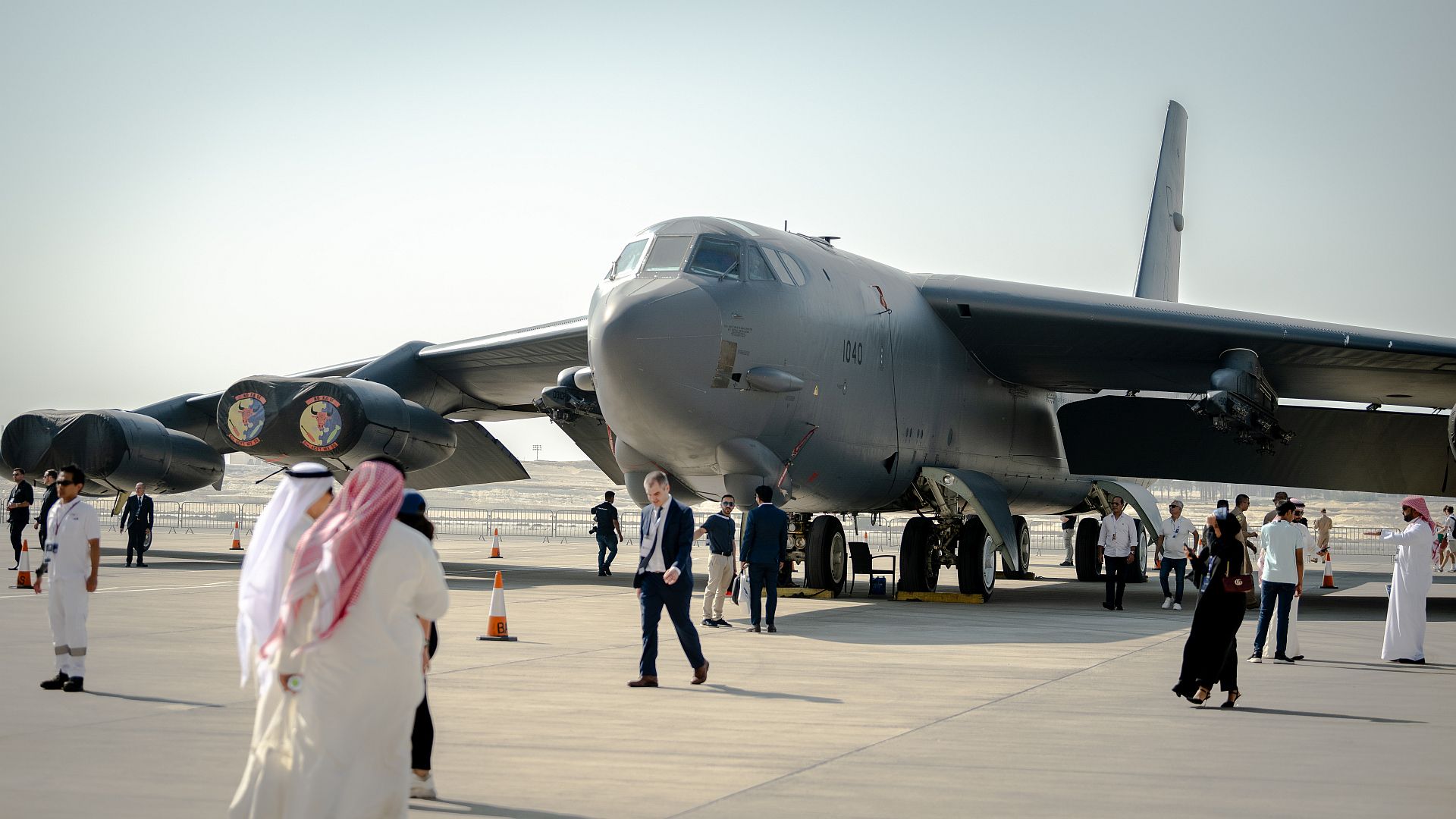
The world's largest aircraft carrier, USS Gerald R. Ford (CVN 78), sails in formation with the Arleigh Burke-class guided missile destroyers USS Winston Churchill (DDG 81), USS Mitscher (DDG 57), USS Mahan (DDG 72), USS Bainbridge (DDG 96), and USS Forrest Sherman (DDG 98) in the Atlantic Ocean, Nov. 12, 2024. The Gerald R. Ford Carrier Strike Group is underway in the Atlantic Ocean completing Group Sail. Group Sail is the first at-sea integrated phase training event during a routine deployment training cycle. It is designed to challenge the Gerald R. Ford CSG’s ability to use the capabilities of the USS Gerald R. Ford (CVN 78), USS Winston S. Churchill (DDG 81), Carrier Air Wing (CVW) 8, Destroyer Squadron (DESRON) 2, and embarked Information Warfare team as a cohesive Strike Group to meet Navy and Joint Warfighting requirements that increases warfighting capability and tactical proficiency across all domains. (U.S. Navy photo by Mass Communication Specialist 2nd Class Maxwell Orlosky)
ELIZABETH RIVER, VA. (Nov. 12, 2024) The Nimitz-class aircraft carrier USS George H.W. Bush (CVN 77), transits the Elizabeth River, Nov. 12, 2024. USS George H.W. Bush departed Norfolk Naval Shipyard to conduct a scheduled underway to test equipment and systems in preparation for future operations. (U.S. Navy photo by Mass Communication Specialist 2nd Class Samuel Wagner)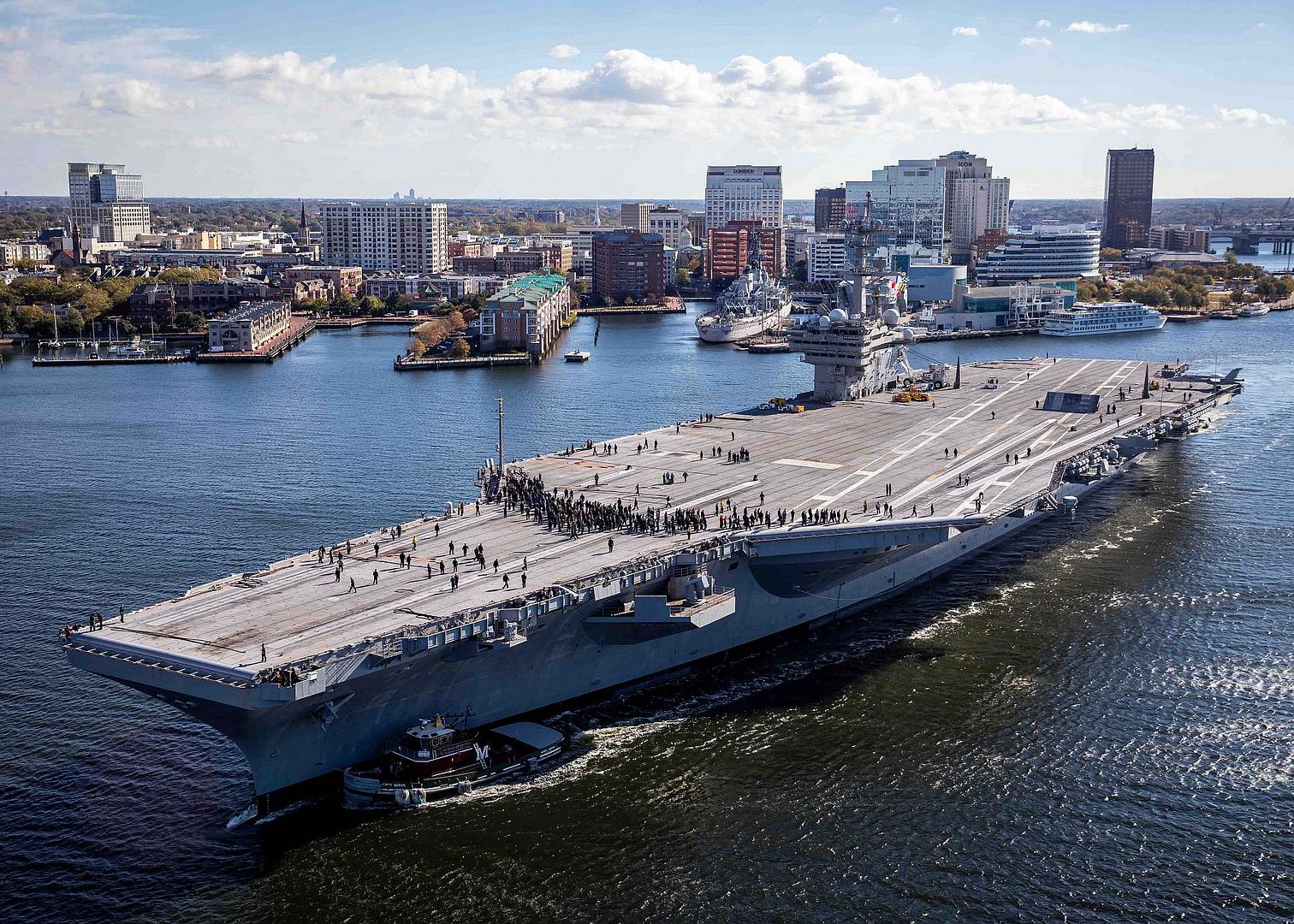
A MiG-29 taxis prior to take off to participate in a memorial flyover for Retired U.S. Air Force Col. Gail Peck at Nellis Air Force Base, Nevada, Nov. 7, 2024. Col. Peck was the first commanding officer of the 4477th TES Red Eagles, a unit that helped rejuvenate air-to-air combat tactics, and helped change dogfighting tactics that played a significant part in the Air Force’s Red Flag program and the US Navy’s Instructor program, more popularly known as TOPGUN. (U.S. Air Force photo by William R. Lewis)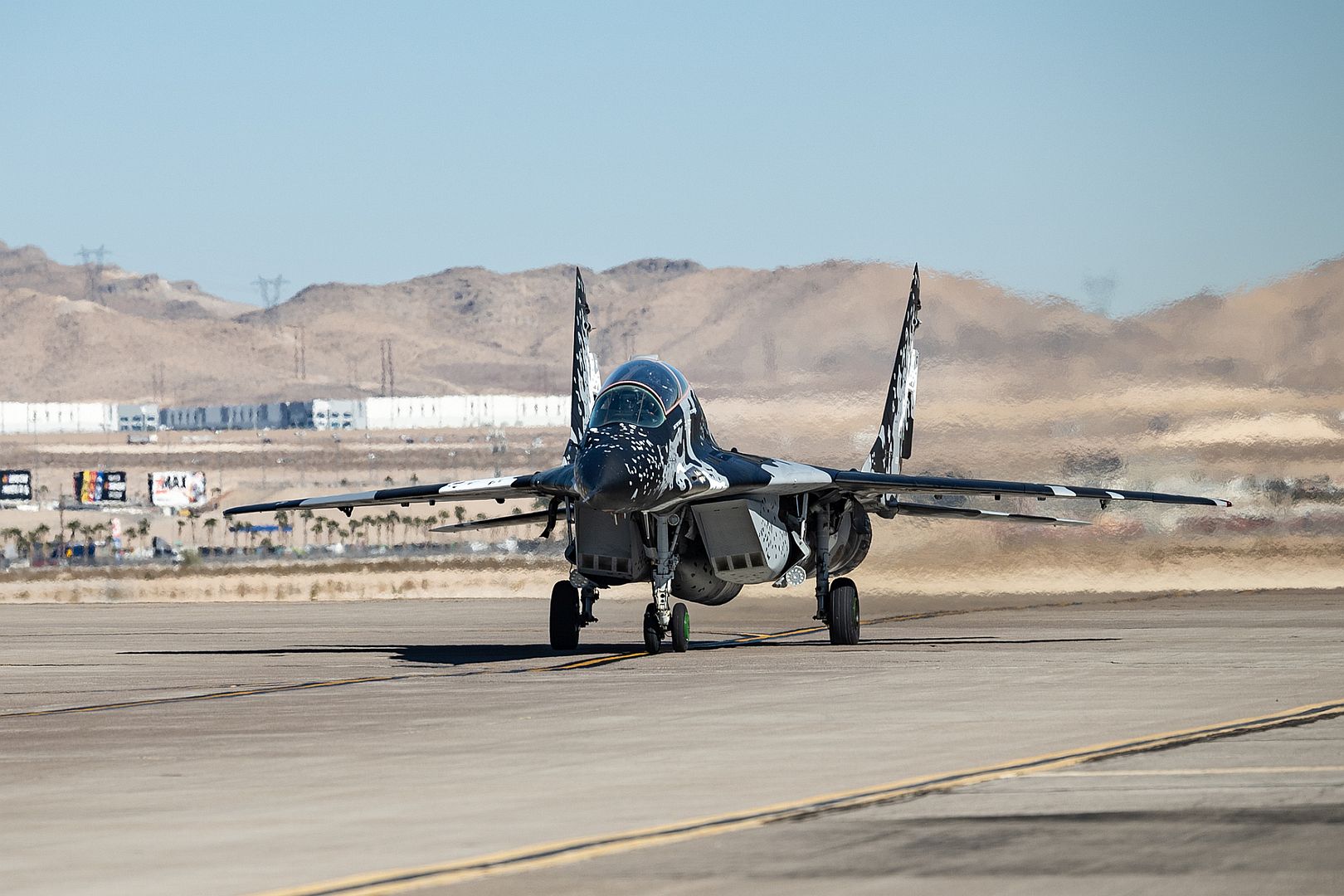
An F-35 Lightning II assigned to the 422nd Test and Evaluation Squadron (TES), takes off for a mission at Nellis Air Force Base, Nevada, Nov. 7, 2024. The 422nd TES is a geographically separated unit of the 53rd Test and Evaluation Group, Eglin AFB, Florida. (U.S. Air Force photo by William R. Lewis)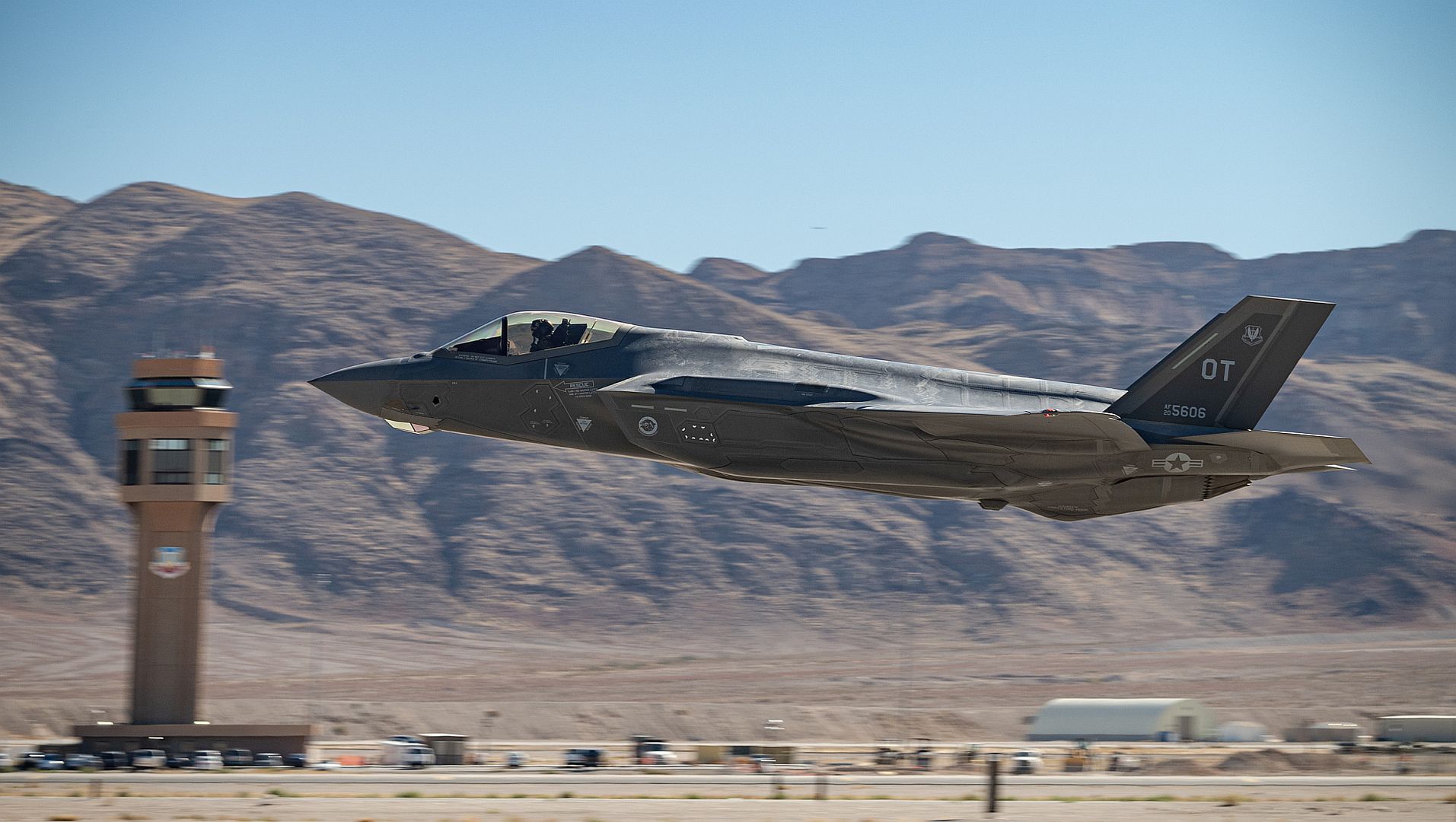
Two U.S. Air Force F-22 Raptors fly alongside a MiG-29 and a MiG-21 during a memorial flyover for Retired U.S. Air Force Col. Gail Peck at Nellis Air Force Base, Nevada, Nov. 7, 2024. Col. Peck was the first commanding officer of the 4477th TES Red Eagles, a unit that operated Soviet MiG-17s, MiG-21s and MiG-23s between 1977 and 1988 to train the US Air Force, Navy and Marine Corps pilots and weapon systems officers in air combat tactics against these foreign aircraft. (U.S. Air Force photo by William R. Lewis)
PALMDALE, Calif., Nov. 12, 2024 /PRNewswire/ -- Lockheed Martin Skunk Works® (NYSE: LMT), in partnership with NASA Aeronautics, started X-59 engine run testing, marking the aircraft's final major system check-out before taxi tests and first flight. The tests also mark the first time the X-59 was powered fully internally.
During the tests, Lockheed Martin is verifying inlet and nozzle performance, aircraft and engine structural and system interfaces, and engine control algorithms. Previously, the X-59 had been powered externally – electrically, hydraulically and pneumatically.
"It was an emotional high to see and hear another innovative, boundary-pushing Skunk Works X-plane come to life," said Pat LeBeau, X-59 program manager, Lockheed Martin Skunk Works. "The team has done an incredible job, and we remain focused on the path forward to a safe and successful first flight."
Engine runs are the last, critical system check-out prior to first flight that verifies proper functionality of the X-59 as an integrated system operating on its own power. The tests ensure the engine can be controlled through the vehicle management system and engine computer. They also verify management of the fuel system, vibration and temperature interactions and more.
Following these successful engine runs, the X-59 will be evaluated for electromagnetic interference effects, simulated in-flight failure modes and validation of the emergency power system. Once those are complete, the aircraft will undergo low-speed and high-speed taxi tests in preparation for first flight.
The X-59 is a one-of-a-kind test aircraft designed to achieve quiet supersonic flight and transform future commercial air travel. It is a singularly unique, national asset. Lockheed Martin and NASA are taking every precaution in a paced, systematic and disciplined approach to ensure safety and success of the mission.
About Lockheed Martin
Lockheed Martin is a global defense technology company driving innovation and advancing scientific discovery. Our all-domain mission solutions and 21st Century Security® vision accelerate the delivery of transformative technologies to ensure those we serve always stay ahead of ready. More information at Lockheedmartin.com.
SAN DIEGO – 13 November 2024 – General Atomics Aeronautical Systems, Inc. (GA-ASI) logged another aviation milestone on Nov. 12, 2024, when its Gray Eagle STOL aircraft took off from a South Korean warship and landed at a ground base – the first-ever such mission for an aircraft of this type. Working with our GA-ASI’s in-country partner, Hanwha Aerospace, Gray Eagle STOL launched from the South Korean navy’s amphibious landing ship Dokdo underway at sea off the coast of Pohang, South Korea. The Unmanned Aircraft System (UAS) then flew to Pohang Navy Airfield and landed normally.
Gray Eagle STOL – which stands for short takeoff and landing – is the only medium-altitude, long-endurance aircraft of its kind with the ability to operate from large-deck warships such as amphibious ships and aircraft carriers, as well as short and unimproved fields on land. The test with the South Korean military further validates the aircraft’s capability and versatility.
“We applaud the South Korean navy for its foresight in examining the unique capability of GE STOL for its fleet. This demonstration illustrates the ability of the GE STOL to safely operate on many types of aircraft-capable ships, which opens myriad new ways our allies can use this UAS to support multi-domain naval operations,” said GA-ASI CEO Linden Blue.
Hanwha Aerospace is engaged with General Atomics to support national defense with proven, state-of-the-art technology suited for a multi-domain warfare environment, contributing to global security alongside allied nations in response to rapidly growing threats.
“The demonstration is a crucial step in verifying how the GE STOL can contribute to defense capabilities, and I am honored to witness this alongside the Republic of Korea Navy, to whom I extend my deepest gratitude for conducting the test,” said Hanwha Aerospace CEO and President Jae-il Son. “Hanwha is fully committed to making bold investments, fostering collaboration, and providing steadfast support in the Unmanned Aerial Vehicle (UAV) business.”
The Ministry of National Defense for the Republic of Korea is initially evaluating GE STOL for its ability to meet its emerging military requirements. South Korean navy, army and other officials were asked to evaluate Gray Eagle STOL and supported the test.
“The demo highlighted the versatility of STOL aboard a warship, in the Dokdo, designed not for fixed-wing aircraft but solely for helicopters. Gray Eagle STOL’s flight proves that navies can add significant new capability without costly major modifications to their existing warships,” said South Korean Chief of Naval Operations, Admiral Yang Yong-mo.
Gray Eagle STOL is highly common with the classic Gray Eagle aircraft, substituting a different engine, wings, control surfaces and landing gear. Gray Eagle STOL is General Atomics’ name for the production variant of the historic aircraft demonstrator known as Mojave.
In November 2023, GA-ASI and Mojave performed a demonstration of STOL takeoff and return landing aboard an aircraft carrier in an event with the UK Royal Navy’s HMS Prince of Wales, which is smaller than a typical U.S. aircraft carrier at 932 feet long (284m) and 240 feet wide (73m). The Dokdo class is considerably smaller than the Prince of Wales, only 653 feet long (199m) and 102 feet wide (31m).
About GA-ASI
General Atomics Aeronautical Systems, Inc. (GA-ASI), an affiliate of General Atomics, is a leading designer and manufacturer of proven, reliable RPA systems, radars, and electro-optic and related mission systems, including the Predator® RPA series and the Lynx® Multi-mode Radar. With more than eight million flight hours, GA-ASI provides long-endurance, mission-capable aircraft with integrated sensor and data link systems required to deliver persistent situational awareness. The company also produces a variety of sensor control/image analysis software, offers pilot training and support services, and develops meta-material antennas.
For more information, visit www.ga-asi.com
-
1 week agoThu Nov 14 2024, 09:25pmDuggy
 Main AdminA U.S. Air Force T-38 Talon assigned to the 13th Bomb Squadron taxis on the flight line at Whiteman Air Force Base, Mo., Nov. 13, 2024. Pilots assigned to the 13th BS and 393d BS fly the T-38 in addition to the B-2 Spirit stealth bomber to obtain required flight hours each month. (U.S. Air Force photo by Senior Airman Joshua Hastings)
Main AdminA U.S. Air Force T-38 Talon assigned to the 13th Bomb Squadron taxis on the flight line at Whiteman Air Force Base, Mo., Nov. 13, 2024. Pilots assigned to the 13th BS and 393d BS fly the T-38 in addition to the B-2 Spirit stealth bomber to obtain required flight hours each month. (U.S. Air Force photo by Senior Airman Joshua Hastings)
A B-52H Stratofortress assigned to the 20th Expeditionary Bomb Squadron takes off from Royal Air Force Base Fairford, England during Bomber Task Force 25-1, Nov. 13, 2024. Bomber Task Force 25-1 is a demonstration of cooperation, collaboration, integration, and solidarity to promote peace and security. (U.S. Air Force Photo by Airman 1st Class Laiken King)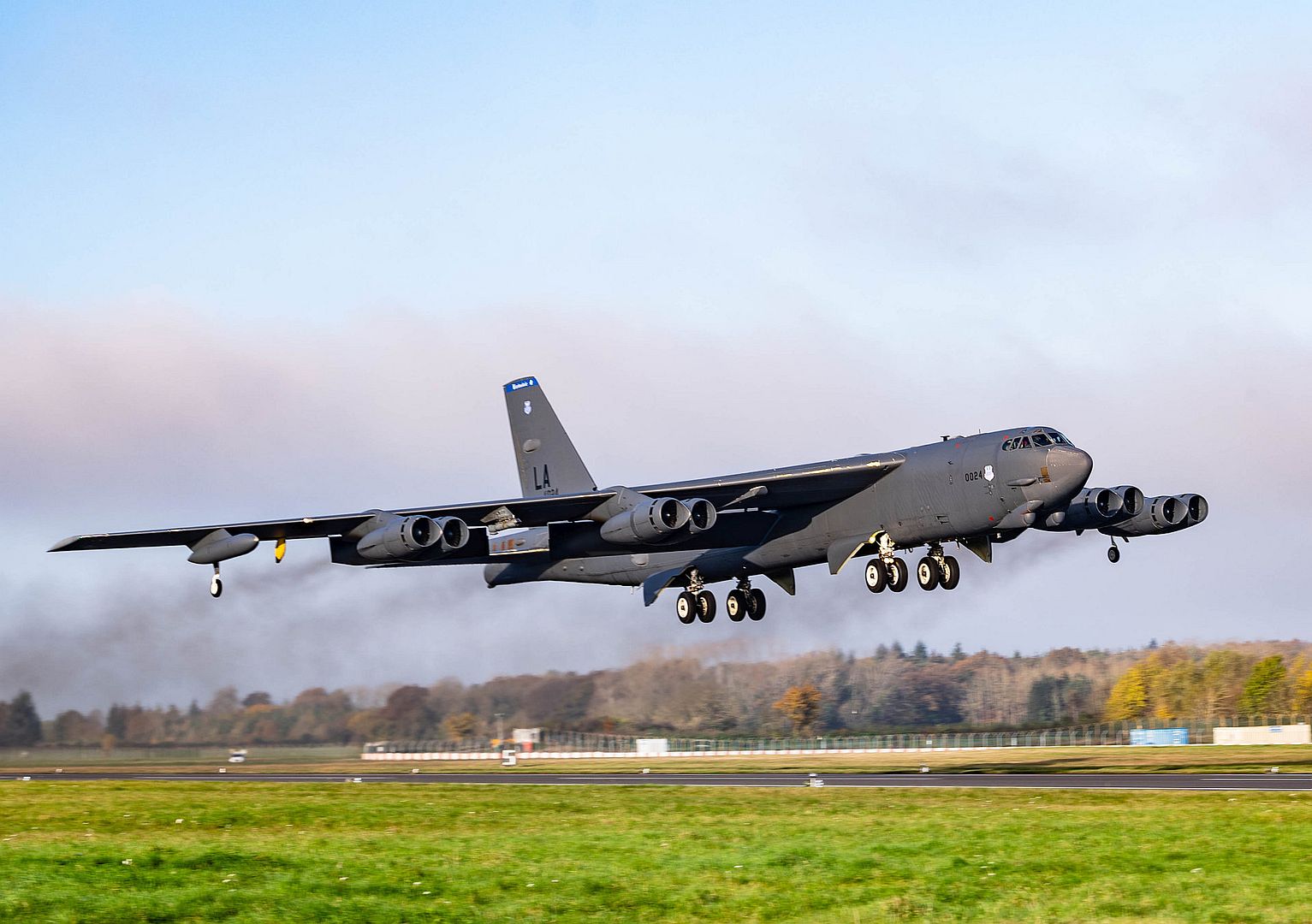
An F-35A Lightning II assigned to the 355th Fighter Squadron awaits takeoff in a weather shelter at Eielson Air Force Base, Alaska, Nov. 13, 2024. During the winter months temperatures in interior Alaska will often reach 20 below zero, challenging crew chiefs to maintain and sustain one of the U.S. Air Force’s most valuable assets in one of the world’s coldest regions. (U.S Air Force photo by Airman 1st Class Spencer Hanson)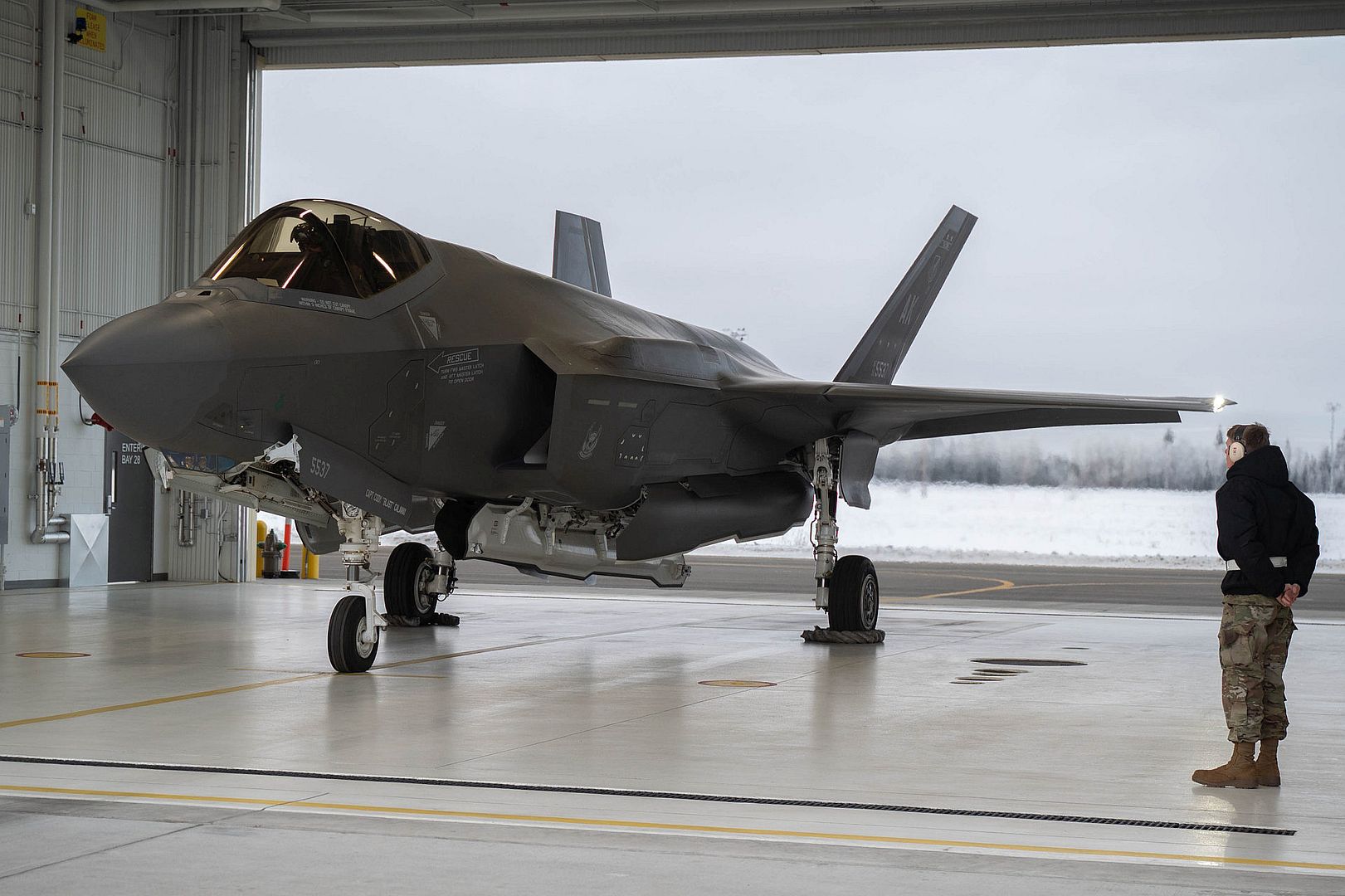
A U.S. Navy E-2D Advanced Hawkeye aircraft assigned to the VAW-121 Bluetails prepares to receive fuel from an HC-130J Combat King II aircraft during a fixed-wing air-to-air refueling training mission conducted by the 39th Rescue Squadron over the coast of Florida, Oct. 22, 2024. FWAAR enables aircraft to refuel at higher altitudes, extending mission range and endurance during critical operations. (U.S. Air Force photo by Tech. Sgt. Darius Sostre-Miroir)
A U.S. Navy E-2D Advanced Hawkeye aircraft assigned to the VAW-121 Bluetails receives fuel from an HC-130J Combat King II aircraft during a fixed-wing air-to-air refueling training mission conducted by the 39th Rescue Squadron over the coast of Florida, Oct. 22, 2024. FWAAR enables aircraft to refuel at higher altitudes, extending mission range and endurance during critical operations. (U.S. Air Force photo by Tech. Sgt. Darius Sostre-Miroir)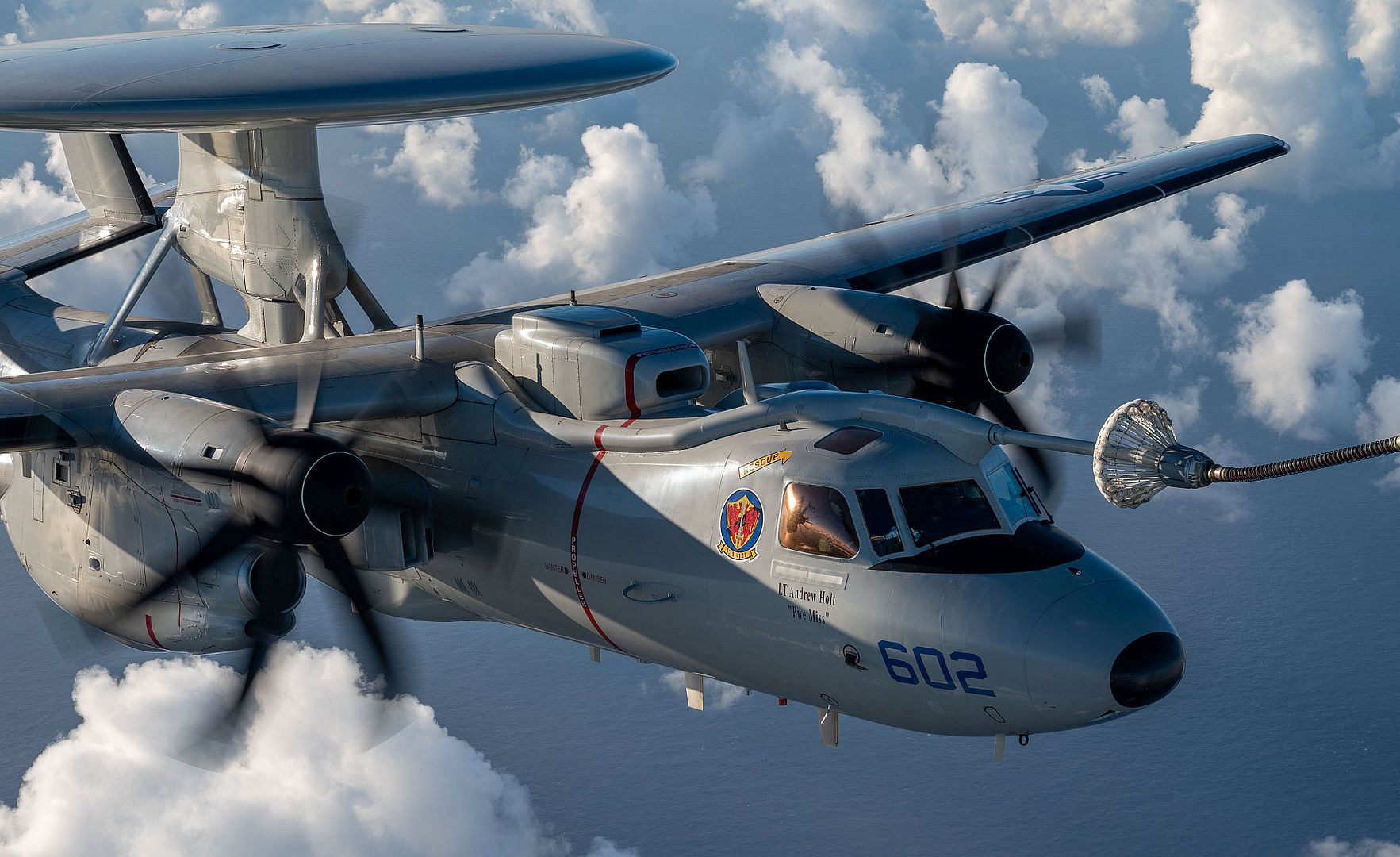
A U.S. Air Force B-52 Stratofortress from the 2nd Bomb Wing, Barksdale Air Force Base, La., receives fuel from a KC-135 Stratotanker from the 100th Air Refueling Wing, Royal Air Force Mildenhall, England, during a Bomber Task Force mission over the North Sea, Nov. 5, 2024. Conducting routine readiness training such as the BTF missions allows NATO Allies and partners to synchronize capabilities and assure NATO’s security commitment across the globe. (U.S. Air Force photo by Senior Airman Christopher Campbell)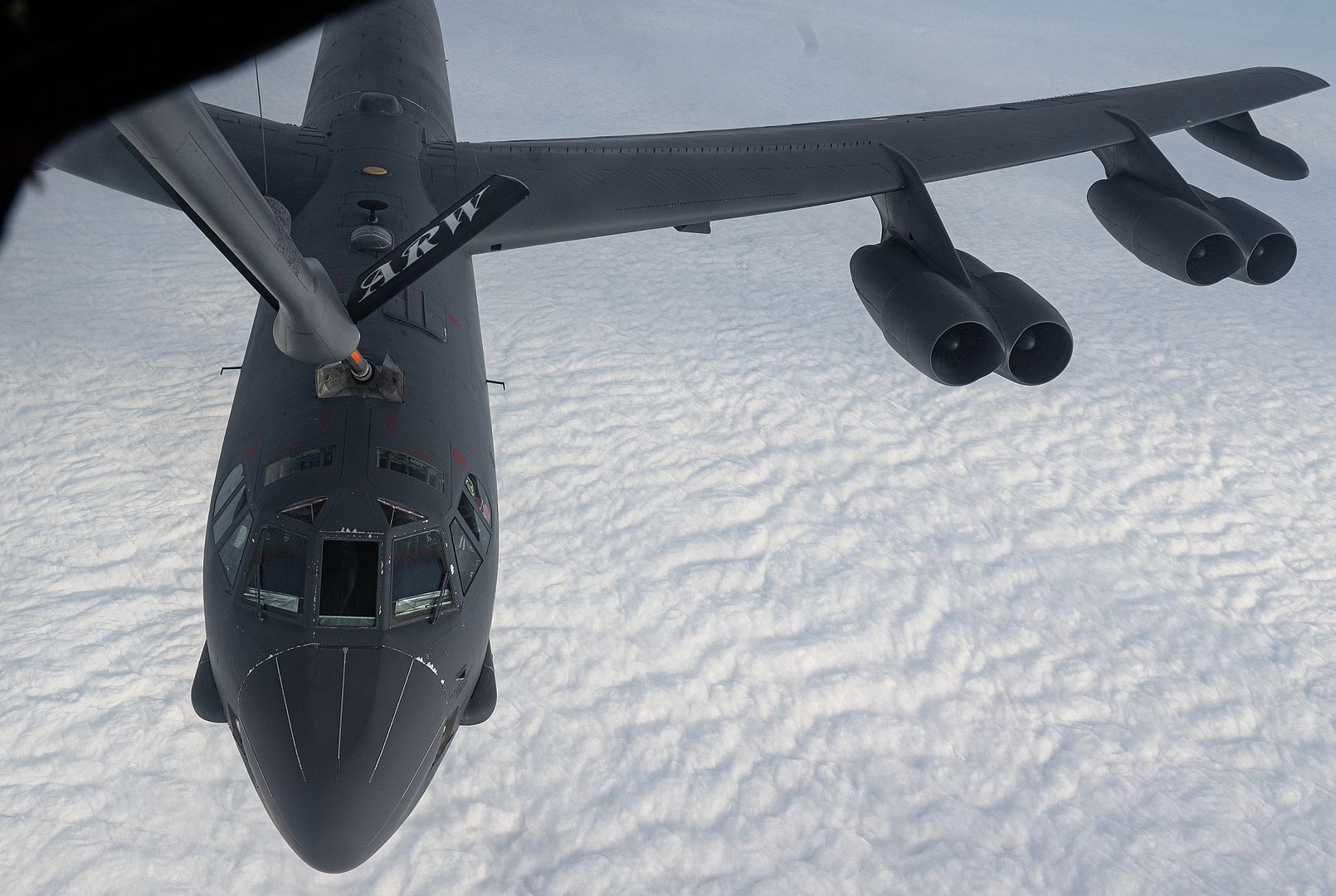
The 10th anniversary of the delivery of the first Atlas C.1 (A400M) transport aircraft has been marked at RAF Brize Norton.
Since the first of the 22-strong fleet of aircraft was delivered to the Oxfordshire station on the 17th November 2014, Atlas has proven itself on a range of operations. It has become a vital asset across the globe, demonstrating its versatility and resilience in support of military and humanitarian missions.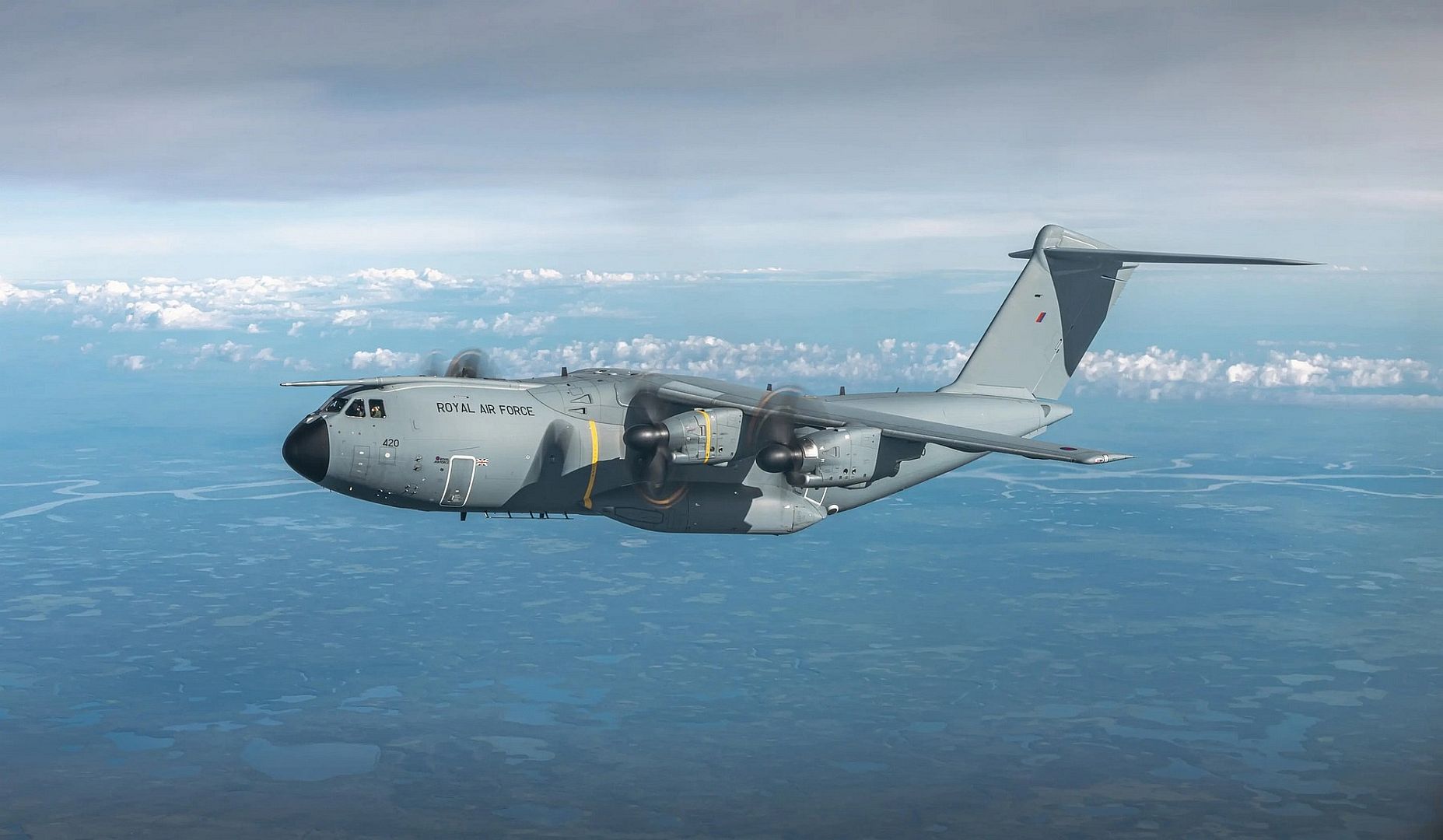
Atlas has excelled during relief operations in the Caribbean and contributed to the military response to COVID, transporting patients, equipment, and; vaccines. It played a pivotal role evacuating people from Afghanistan and Sudan, and most recently delivered humanitarian supplies by air drop in Gaza.
(Photos courtesy of the RAF)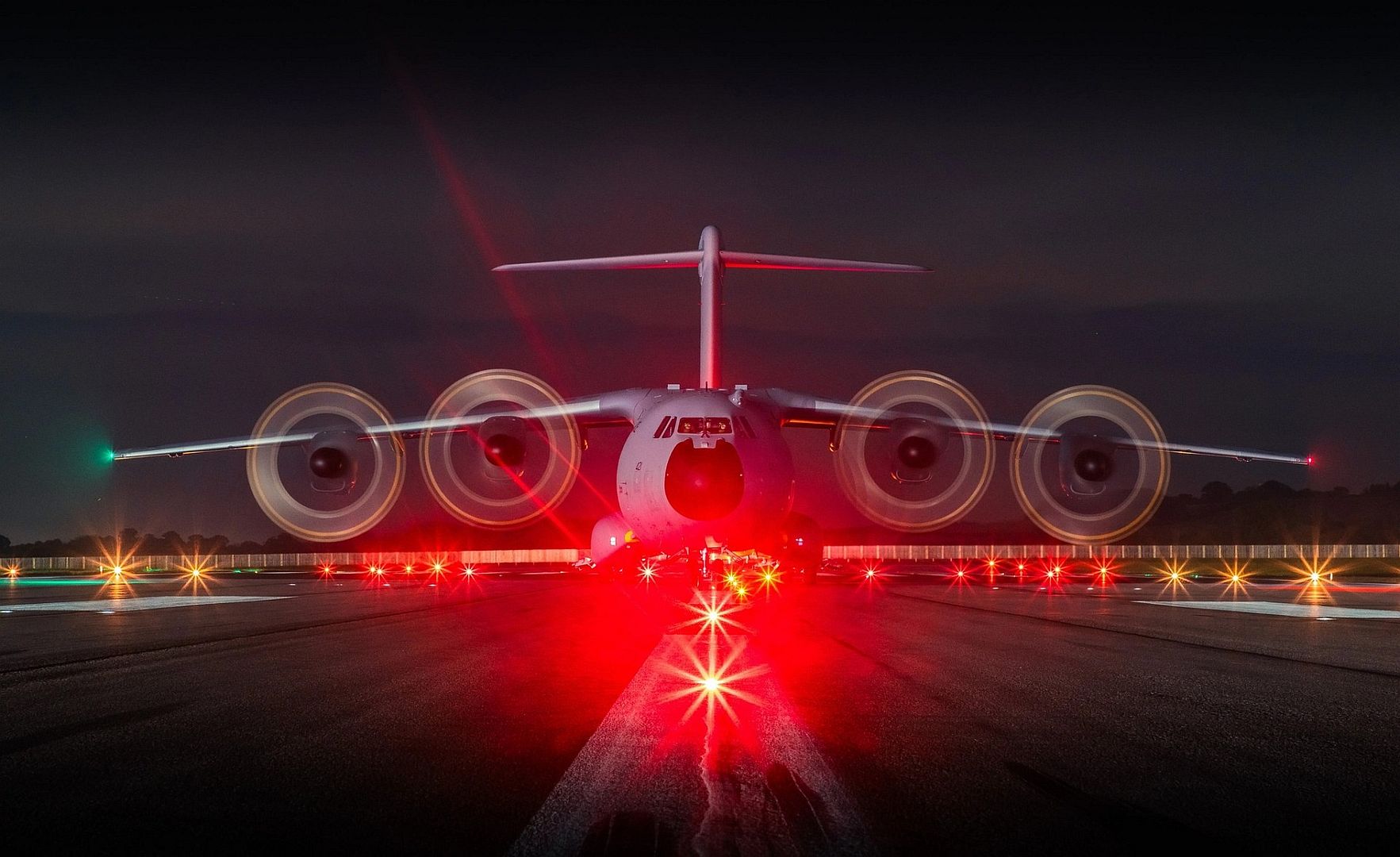
The skies over RAAF Base Tindal buzzed with innovation as No. 6 Squadron's EA-18G Growlers partnered with the F-35A Lightning IIs from No. 75 Squadron for Trial Swagman.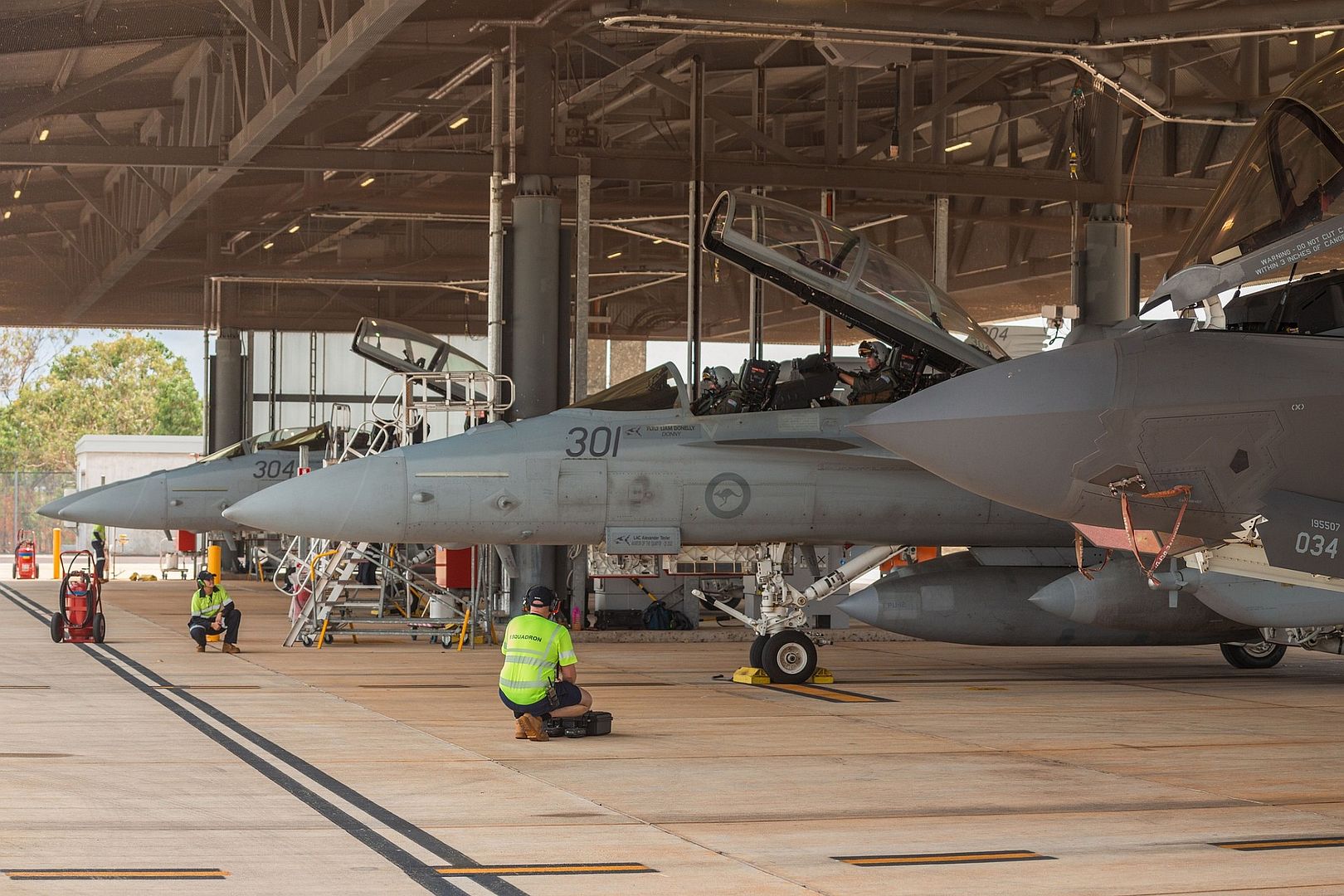
Coordinated by the Air Warfare Centre’s Spectrum Warfare Directorate, utilising the vast NT airspace, including the Delamere Air Weapons Range, the trial tested new Electronic Warfare countermeasures for air combat aircraft.
Commanding Officer 75 Squadron Wing Commander Andrew Nilson said the evaluation of Trial Swagman’s data would improve the survivability of Air Force’s air combat aircraft in contested environments.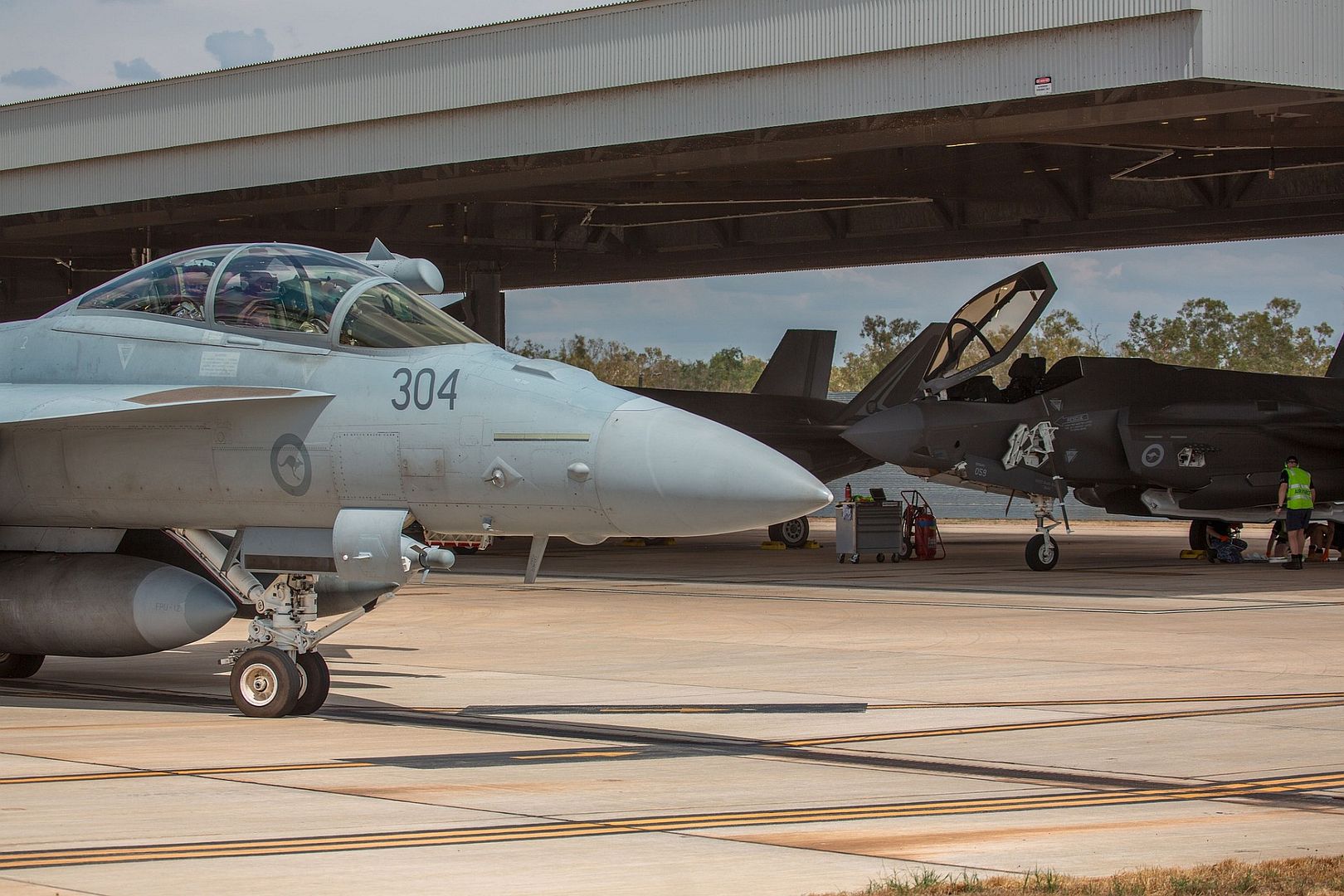
“Trial Swagman was an excellent opportunity for 75 Squadron to contribute to the advancement of F-35A survivability, in particular when integrated with the capabilities the EA-18G offers,” he said.
“The outcomes will give us a greater understanding of how we best integrate to achieve maximum survivability.”
(Photos courtesy of the RAAF)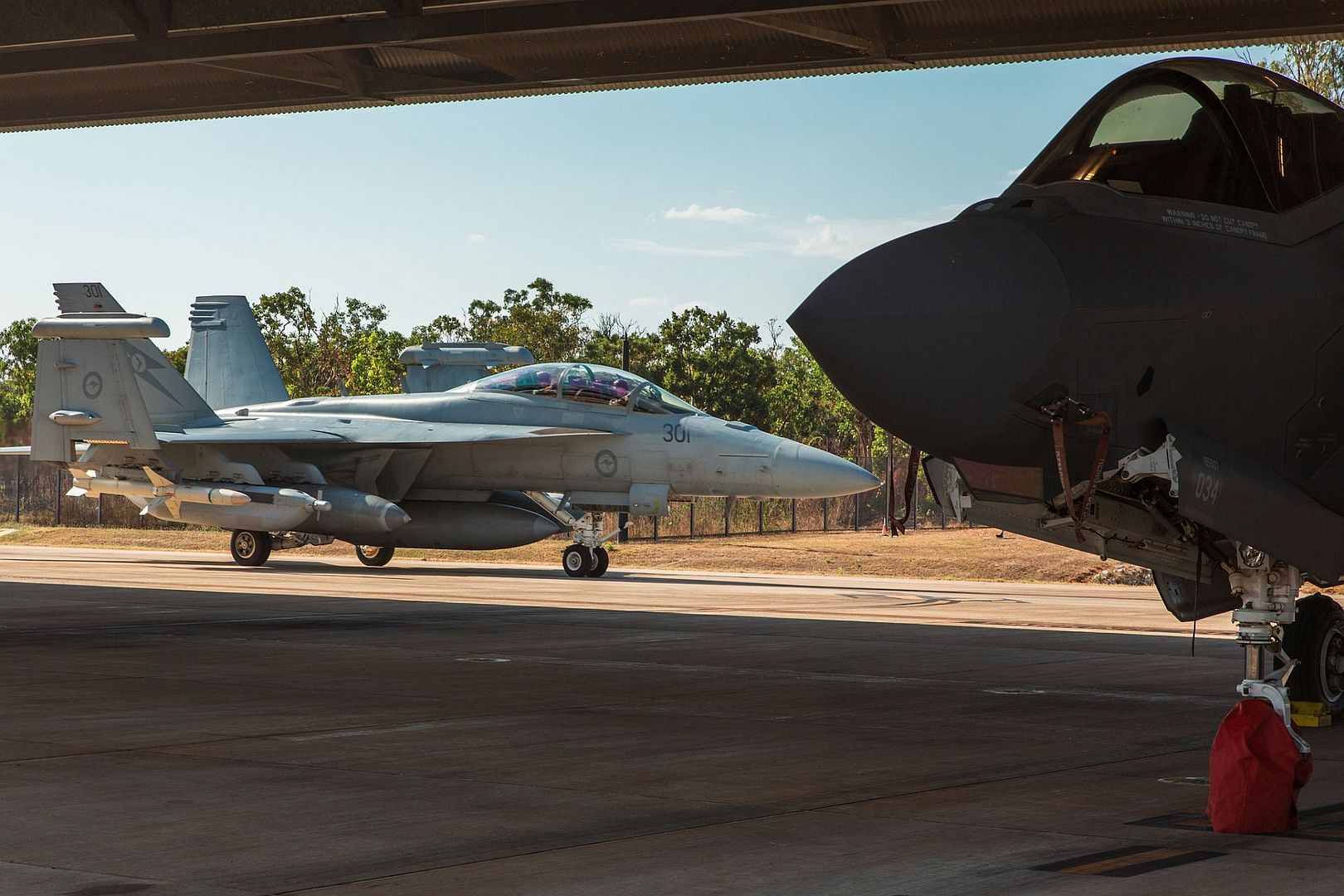
A Dutch navy NH90 helicopter launches from HNLMS Van Amstel (F831), assigned to Standing NATO Maritime Group 1, to take part in a Combined Anti-Submarine Exercise during #NATO's Anti-Submarine Warfare (ASW) Playbook Merlin.
(Photo courtesy of NATO)
-
 Main AdminU.S. AIR FORCE ACADEMY, Colo. -- A MiG-29 performs a flyover in honor of Col. (ret) Gaillard Peck's funeral ceremony at the U.S. Air Force Academy in Colorado Springs, Colo. on Nov. 14, 2024. Col. (ret) Peck flew 163 missions in Vietnam and was instrumental in the creation of the 4477th Red Eagles Squadron which flew MiG-21s and MiG-23s to help train American military aviators on how to better fight enemy aircraft.(U.S. Air Force photo/Dylan Smith)
Main AdminU.S. AIR FORCE ACADEMY, Colo. -- A MiG-29 performs a flyover in honor of Col. (ret) Gaillard Peck's funeral ceremony at the U.S. Air Force Academy in Colorado Springs, Colo. on Nov. 14, 2024. Col. (ret) Peck flew 163 missions in Vietnam and was instrumental in the creation of the 4477th Red Eagles Squadron which flew MiG-21s and MiG-23s to help train American military aviators on how to better fight enemy aircraft.(U.S. Air Force photo/Dylan Smith)
U.S. AIR FORCE ACADEMY, Colo. -- Three F-22 Raptors from Eglin Air Force Base and a MiG-29 perform a missing man formation during Col. (ret) Gaillard Peck's funeral ceremony at the U.S. Air Force Academy in Colorado Springs, Colo. on Nov. 14, 2024. Col. (ret) Peck flew 163 missions in Vietnam and was instrumental in the creation of the 4477th Red Eagles Squadron which flew MiG-21s and MiG-23s to help train American military aviators on how to better fight enemy aircraft. - (U.S. Air Force photo/Trevor Cokley)
A B-52H Stratofortress sits on the flightline at RAF Fairford, England, Nov. 13, 2024. The B-52H Stratofortress will be employed during Bomber Task Force 25-1 as aircrews integrate with NATO Allies to reinforce the strength and commitment of the Alliance. (U.S. Air Force photo by Senior Airman Mary Bowers)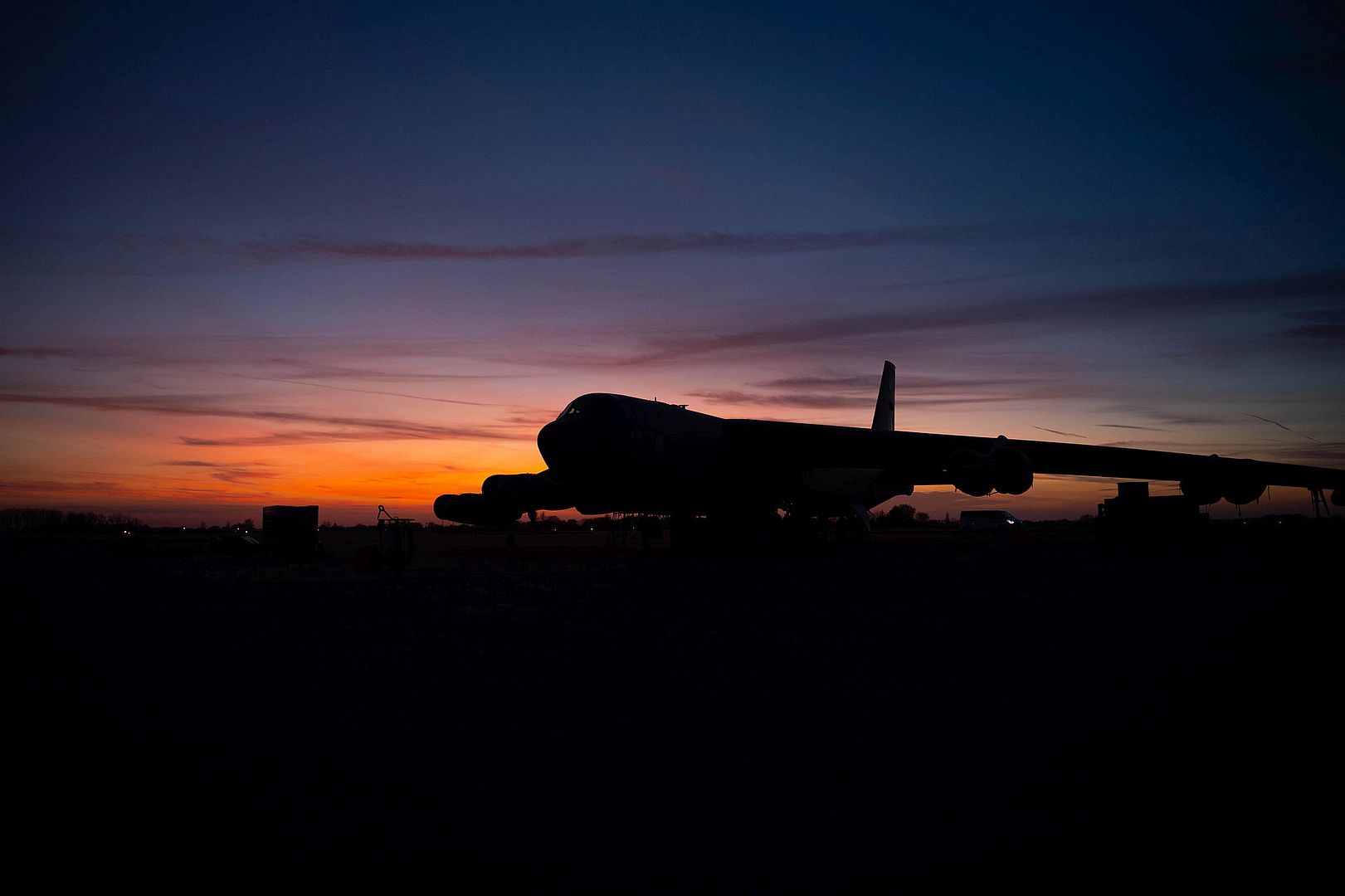
Royal Saudi Air Force Saudi Hawks Aerobatic Team BAE Hawk Mk.65A aircraft taxi toward parking spots after conducting an aerobatic demonstration during the Bahrain International Airshow, Nov. 14, 2024. The airshow is one of the region’s most prominent aviation and aerospace defense expositions showcasing coalition airpower established through regional cooperation. (U.S. Air Force courtesy photo by Senior Airman Ashley Dillon)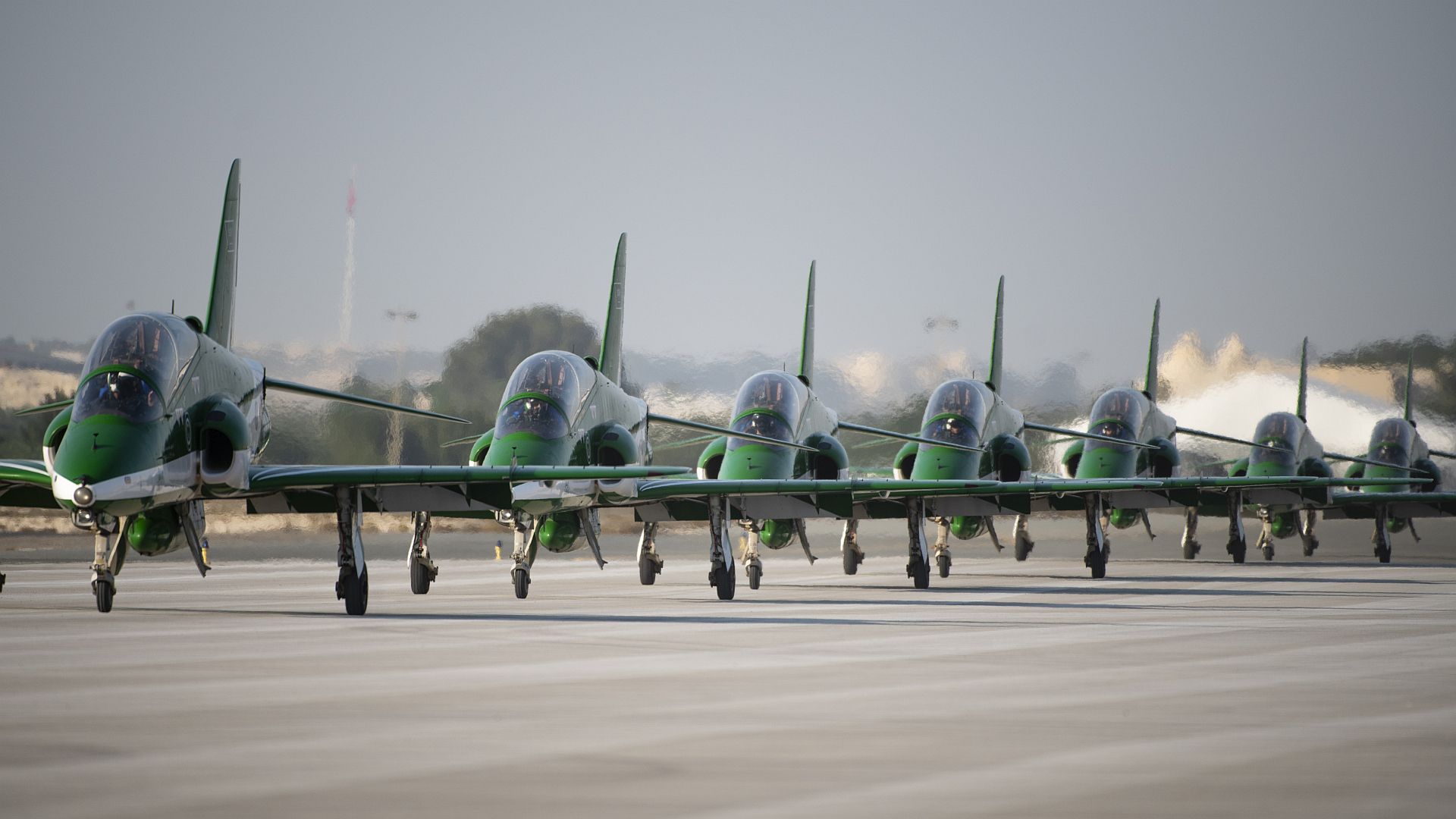
An F/A-18E Super Hornet, attached to the "Golden Warriors" of Strike Fighter Squadron (VFA) 87, launches from the flight deck of the world's largest aircraft carrier, USS Gerald R. Ford (CVN 78), during flight operations, Nov. 14, 2024. The Gerald R. Ford Carrier Strike Group is underway in the Atlantic Ocean completing Group Sail. Group Sail is the first at-sea integrated phase training event during a routine deployment training cycle. It is designed to challenge the Gerald R. Ford CSG’s ability to use the capabilities of the USS Gerald R. Ford (CVN 78), USS Winston S. Churchill (DDG 81), Carrier Air Wing (CVW) 8, Destroyer Squadron (DESRON) 2, and embarked Information Warfare team as a cohesive Strike Group to meet Navy and Joint Warfighting requirements that increases war-fighting capability and tactical proficiency across all domains. (U.S. Navy photo by Mass Communication Specialist Seaman Tajh Payne)
A U.S. Air Force KC-135 Stratotanker assigned to the Iowa Air National Guard’s 185th Air Refueling Wing on the flight line in Sioux City, Iowa surrounded by clear skies, calm winds and warm fall temperatures November 15, 2024. U.S. Air National Guard photo Senior Master Sgt. Vincent De Groot
11.12.2024
A U.S. Air Force C-17 Globemaster III assigned to the 62d Airlift Wing prepares to land at Christchurch International Airport, New Zealand, to kick off a new rotation of Antarctic airlift missions going on from Christchurch, NZ, to Phoenix Airfield, Antarctica. As one of the world’s five Antarctic gateway cities, Christchurch is an official Antarctic hub and welcomes all national Antarctic programs to use Christchurch as their gateway to Antarctica. (Photo by Airman Colleen Coulthard)
-
 Main AdminA German Air Force Eurofighter Typhoon escorts a U.S. Air Force B-52H Stratofortress, assigned to the 20th Expeditionary Bomb Squadron, during Bomber Task Force Europe 25-1 over the U.S. European Command area of responsibility, Nov. 15, 2024. Joint and multilateral exercises reaffirm the United States' unwavering commitment to collective defense and mutual security. (U.S. Air Force photo by Staff Sgt. Emily Farnsworth)
Main AdminA German Air Force Eurofighter Typhoon escorts a U.S. Air Force B-52H Stratofortress, assigned to the 20th Expeditionary Bomb Squadron, during Bomber Task Force Europe 25-1 over the U.S. European Command area of responsibility, Nov. 15, 2024. Joint and multilateral exercises reaffirm the United States' unwavering commitment to collective defense and mutual security. (U.S. Air Force photo by Staff Sgt. Emily Farnsworth)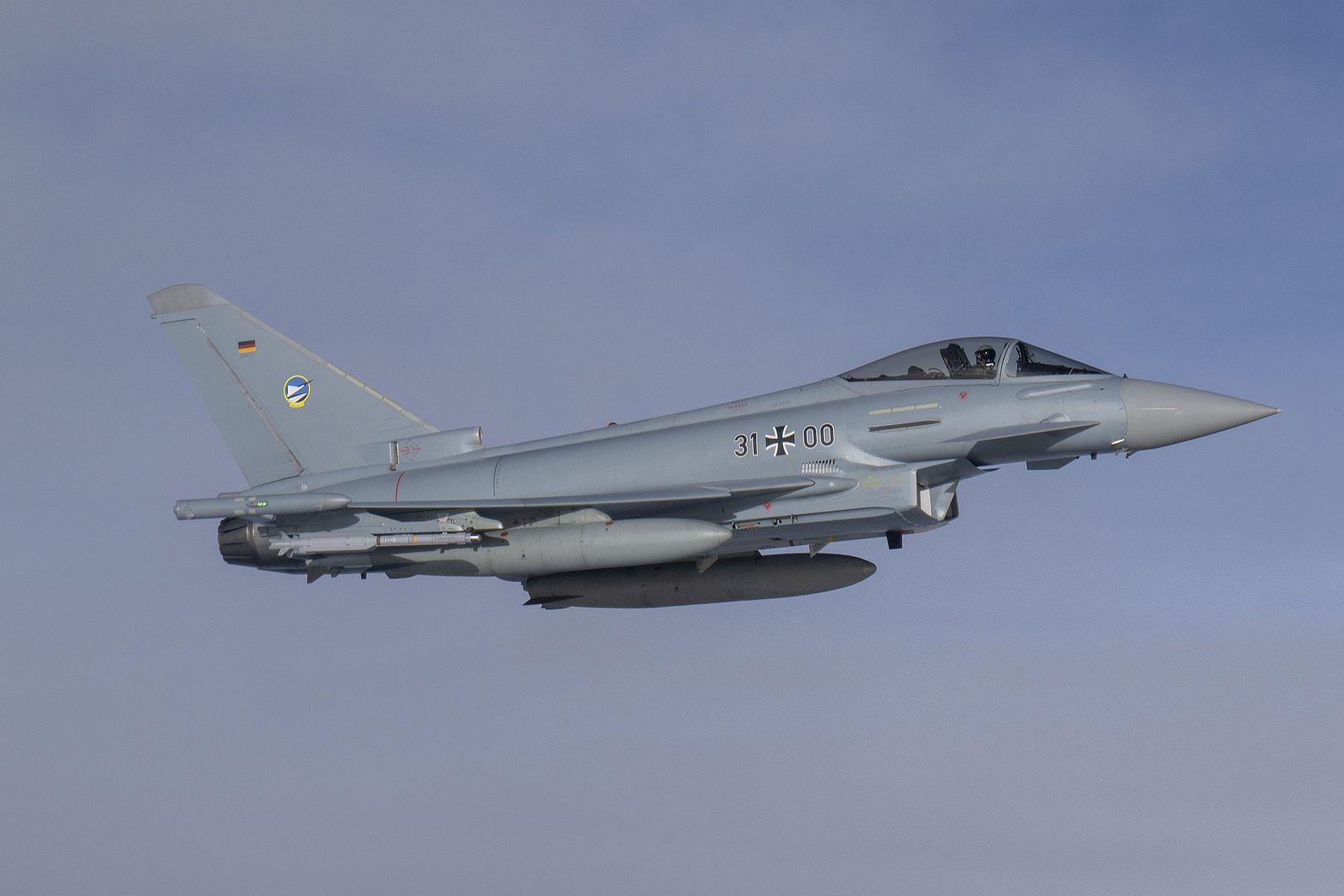
A Royal Danish Air Force F-16 Fighting Falcon flies off the wing of a U.S. Air Force B-52H Stratofortress, assigned to the 20th Expeditionary Bomb Squadron, during a Bomber Task Force Europe 25-1 mission over the U.S. European Command area of responsibility, Nov. 15, 2024. The continuous military cooperation with NATO partners exemplifies the United States’ dedication to mutual defense and strategic stability. (U.S. Air Force photo by Staff Sgt. Emily Farnsworth)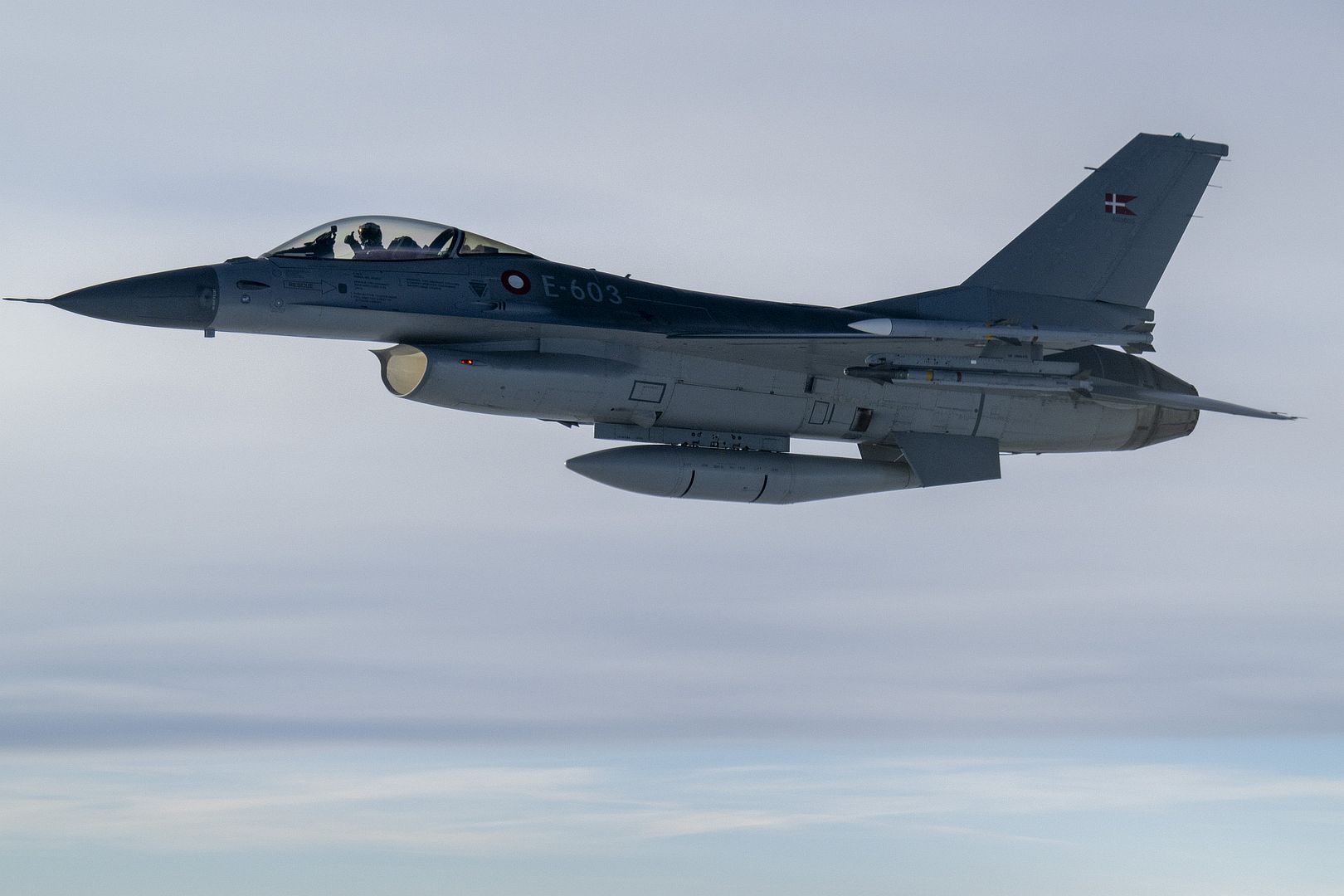
A U.S. Air Force B-52H Stratofortress assigned to the 20th Expeditionary Bomb Squadron is escorted by German Air Force and Italian Air Force Eurofighter Typhoons above the Baltic Sea during Bomber Task Force 25-1, Nov. 15, 2024. The U.S. is dedicated to working alongside our NATO Allies and partners in the Baltic Sea area to ensure all parties have the combined skills and coordination capabilities necessary to maintain regional safety and security. (U.S. Air Force photo by Senior Airman Jacob Cabanero)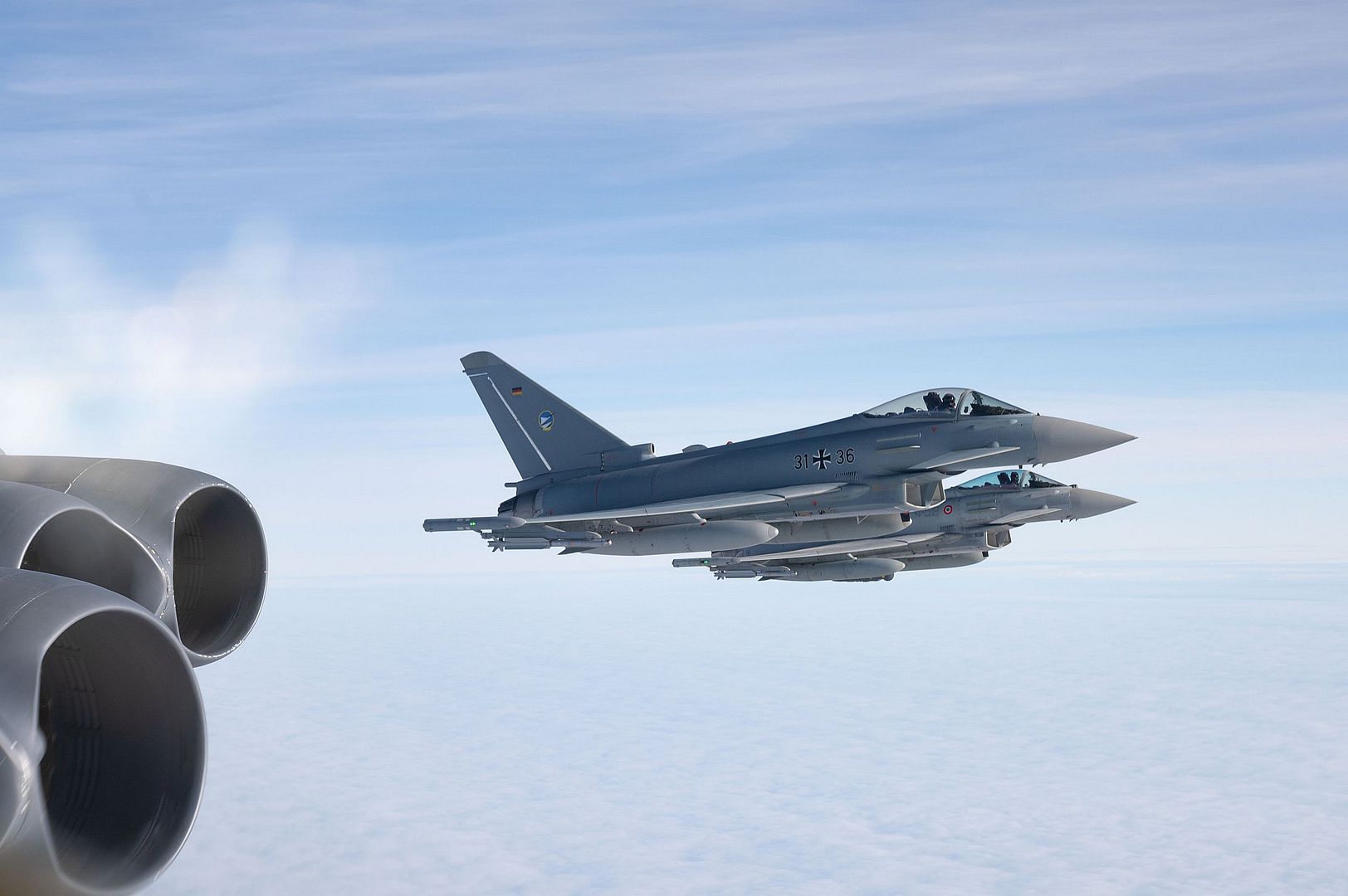
A U.S. Air Force B-1B Lancer assigned to the 37th Bomb Squadron taxis off the runway at Ellsworth Air Force Base, S.D., after completing a CONUS-to-CONUS mission, Nov. 03, 2024. All missions are closely planned with the appropriate Geographic Combatant Commands, Allies, and partners to ensure maximum training and integration opportunities as well as compliance with all national and international requirements and protocols. (U.S. Air Force photo by Airman Alec Carlberg)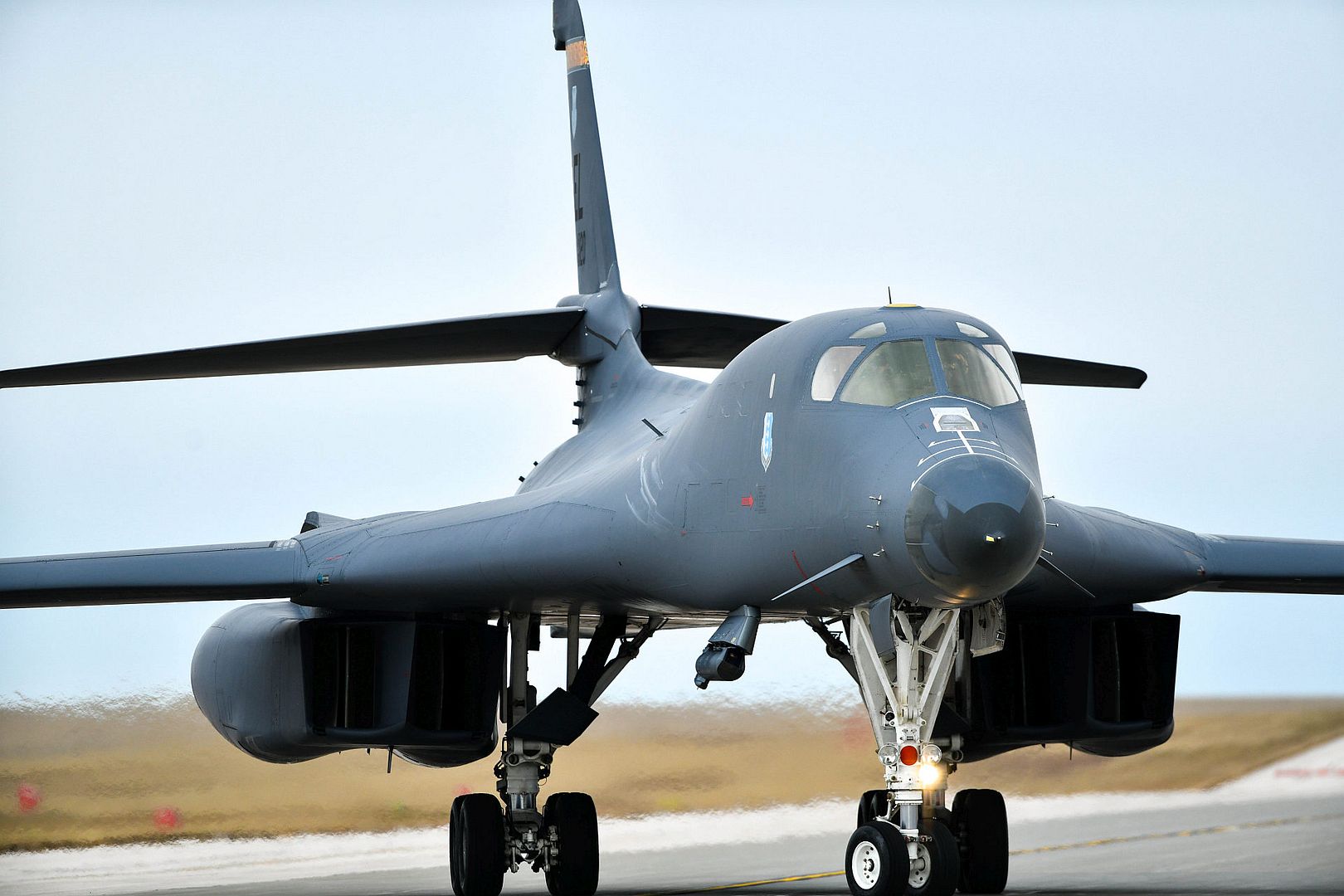
A Chilean Air Force F-16 Fighting Falcon takes off from the runway during CRUZEX 2024 at Natal Air Force Base, Brazil, Nov. 9, 2024. CRUZEX strengthens the ties that help ensure regional and global security by working together during training scenarios to build on partnerships. (U.S. Air Force photo by Staff Sgt. Madeline Herzog)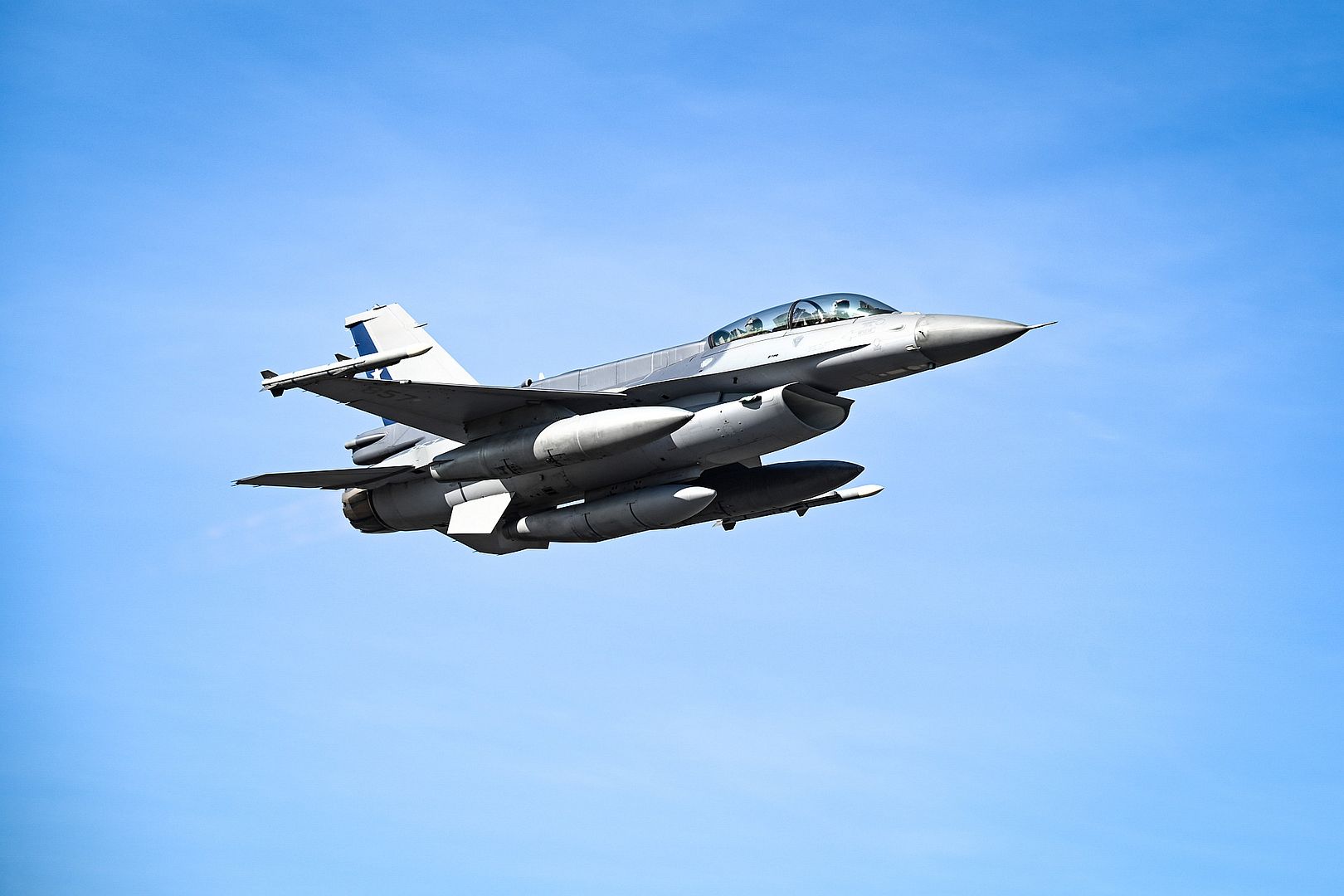
A U.S. Air Force F-15C Eagle assigned to the Louisiana Air National Guard 159th Fighter Wing takes off during CRUZEX 2024 at Natal Air Force Base, Brazil, Nov. 9, 2024. This exercise reinforces the enduring promise of shared security and cooperation among allied air forces in Latin America. (U.S. Air Force photo by Staff Sgt. Madeline Herzog)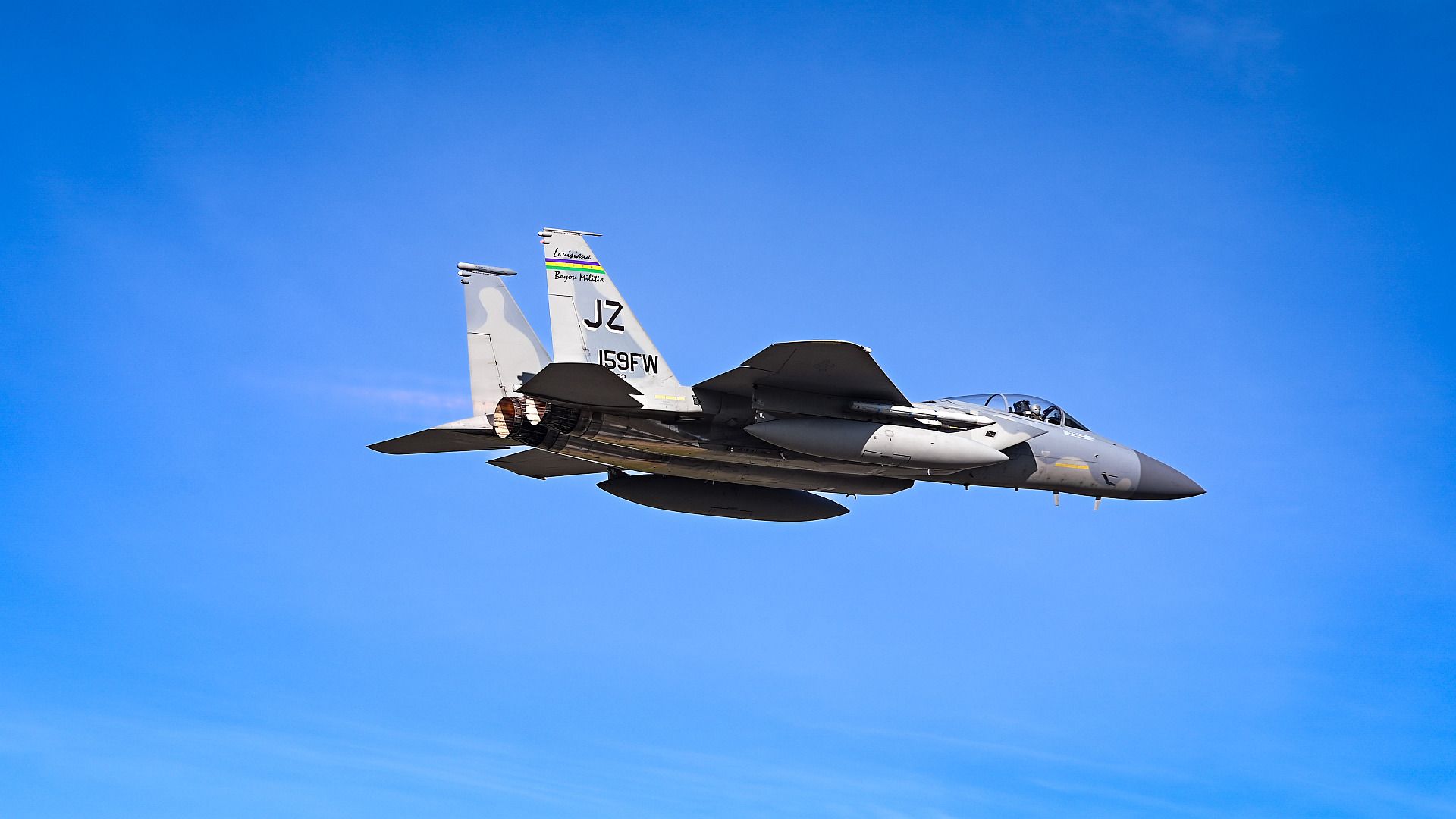
A Peruvian Air Force KT-1P takes off from the runway during CRUZEX 2024 at Natal Air Force Base, Brazil, Nov. 9, 2024. CRUZEX strengthens the ties that help ensure regional and global security by working together during training scenarios to build on partnerships. (U.S. Air Force photo by Staff Sgt. Madeline Herzog)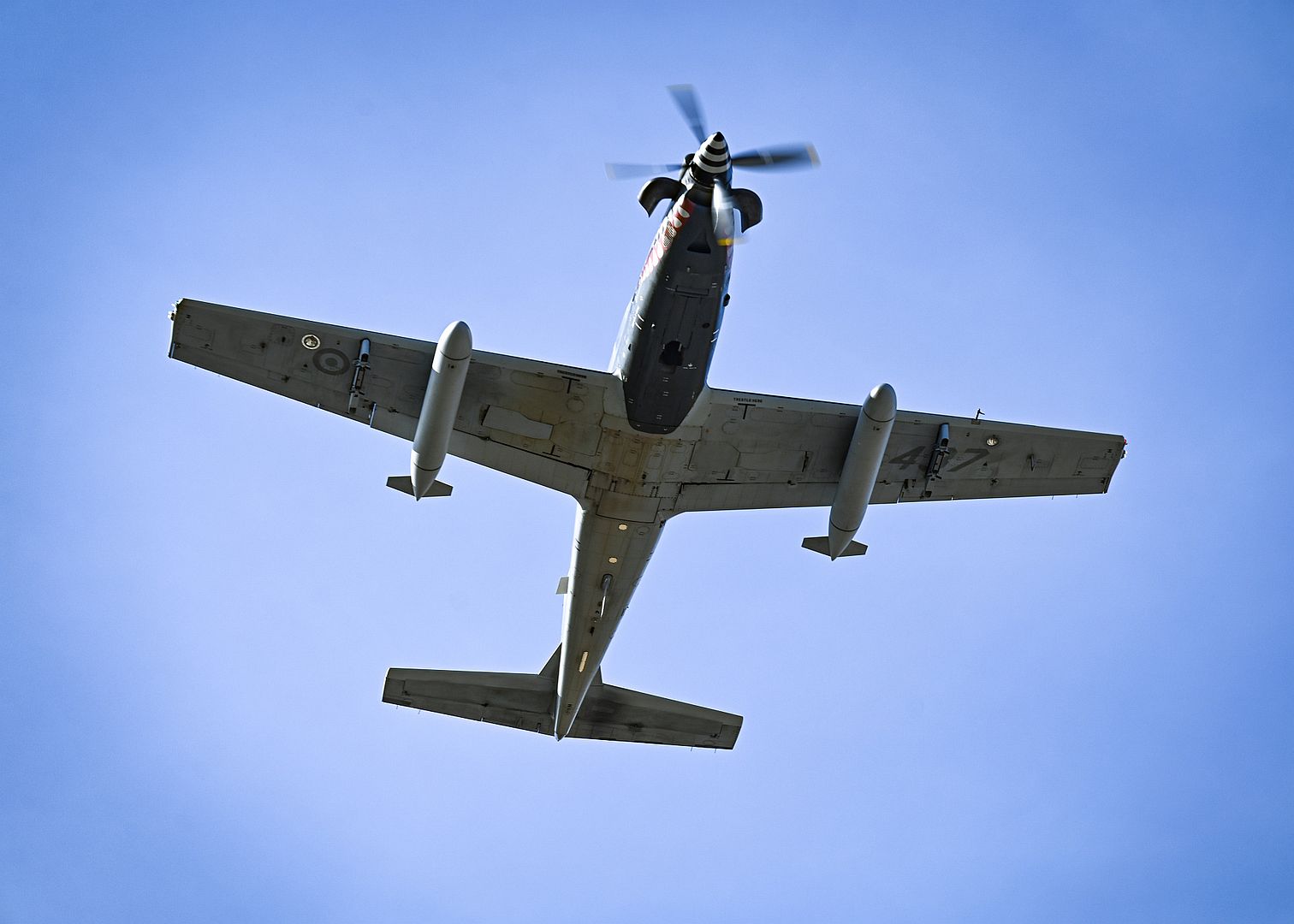
A B-52H Stratofortress sits on the flightline while aircrew go through a pre-flight checklist at Barksdale Air Force Base, La., Nov. 14, 2024. Pre-flight inspections are conducted before every flying mission to ensure the aircraft's operational readiness. (U.S. Air Force photo by Senior Airman Hailey Farrell)
A U.S. Air Force RC-135 Rivet Joint assigned to the 84th Reconnaissance Squadron conducts aerial refueling with a KC-135 Stratotanker assigned to the 909th Air Refueling Squadron over the coast of Japan, Nov. 8, 2024. The RC-135 supports theater and national level consumers with near real-time, on-scene intelligence collection, analysis and dissemination capabilities. (U.S. Air Force photo by Senior Airman Cedrique Oldaker)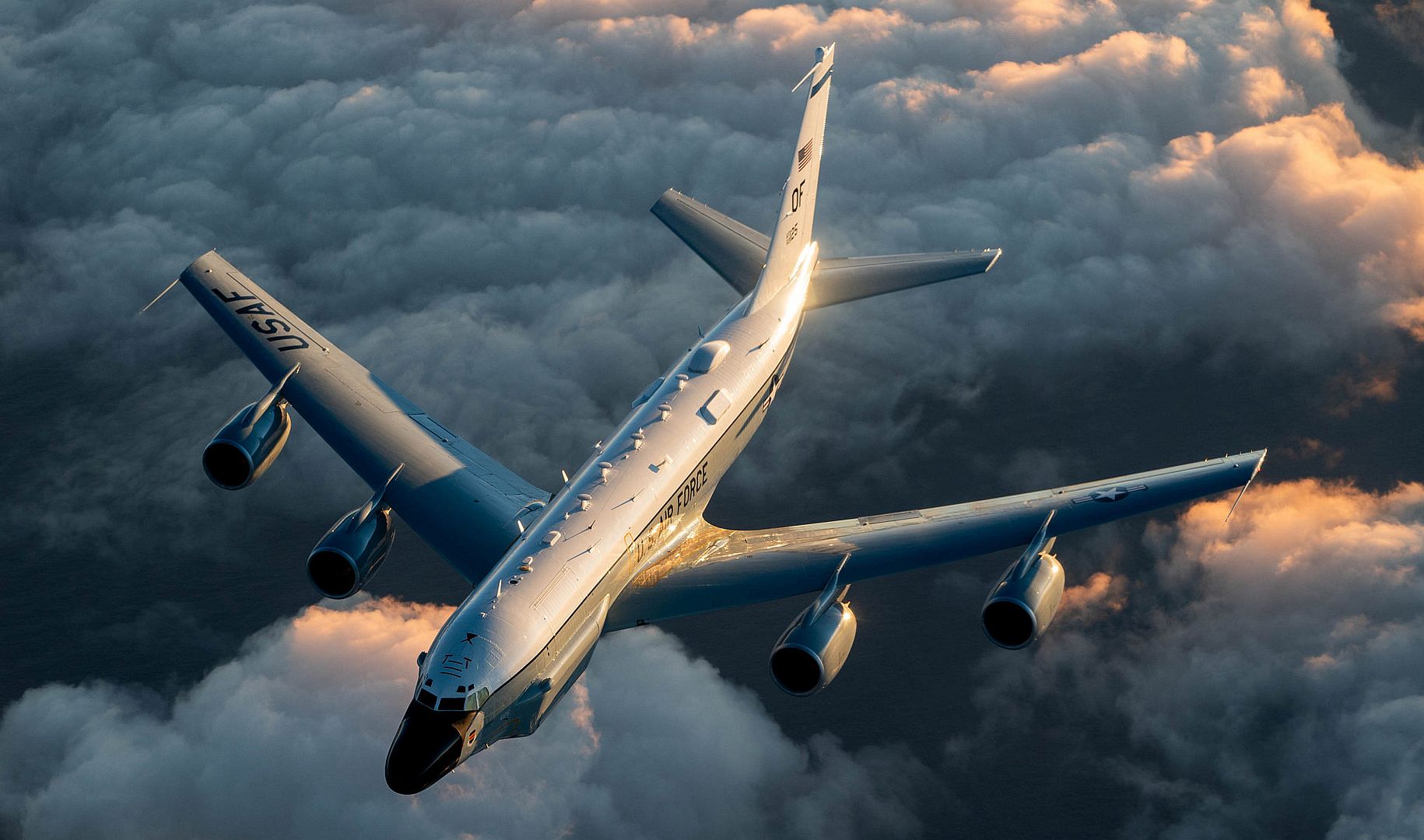
Donauwörth, Germany, 18 November 2024 – Less than a year after the contract was signed, Airbus Helicopters has delivered the first of up to 82 H145Ms ordered by Germany at its Donauwörth site. The Bundeswehr (German Armed Forces) have named their new H145Ms “Leichter Kampfhubschrauber” (light combat helicopter), or LKH for short. The helicopter's missions include training, reconnaissance, special forces operations and light attack.
“We remain a reliable partner of the German Bundeswehr. Delivering the first H145M LKH in less than a year after the contract signature demonstrates our commitment. The H145M LKH will be a true multi-mission asset for the German Armed Forces, supporting their crucial missions,” said Stefan Thomé, Managing Director of Airbus Helicopters in Germany.
This first helicopter is dedicated to training operations and will be used at the German Army's Bückeburg base. The first delivery of an H145M LKH in the light attack role to the German customer is scheduled for 2025, as contracted. The training of the Bundeswehr’s pilots started already in August this year.
In December 2023, the Bundeswehr and Airbus Helicopters signed a contract for the purchase of up to 82 multi-role H145M helicopters (62 firm orders plus 20 options), the largest order ever placed for the H145M and consequently the largest for the HForce weapon management system. The contract also includes seven years of support and services, ensuring optimal entry into service and support. The German Army will receive 57 helicopters, while the Luftwaffe's special forces will receive five.
The H145M is a multi-role military helicopter that provides a broad range of mission capabilities. Within minutes, the helicopter can be reconfigured from a light attack role with axial ballistic and guided weapons and a state-of-the-art self-protection system into a special operations version with fast rappelling equipment. The comprehensive mission packages include hoisting and external cargo capabilities.
The standard version of the ordered H145Ms is equipped with fixed provisions, including HForce, the weapon management system developed by Airbus Helicopters. This allows the Bundeswehr to train its pilots on the same type of helicopter that is used for operation and combat. Costly type transfers are eliminated and the highest level of professionalism will be achieved.
The H145M is the military version of the tried-and-tested, light twin-engine H145 helicopter. The global fleet of the H145 family has accumulated close to eight million flight hours. It is used by armed and law enforcement forces around the world for the most demanding missions. The Bundeswehr already operates 24 H145 helicopters for special forces operations and search and rescue missions. The US Army employs almost 500 helicopters from the H145 family under the name of UH-72 Lakota which have clocked more than 1.5 million flight hours. Military operators of the H145 family are Hungary, Serbia, Luxembourg, Thailand, Ecuador and Honduras. Recent orders include Cyprus, signing for six aircraft, Belgium for 17 and Brunei for six.
Powered by two Turbomeca Arriel 2E engines, the H145M is fitted with a full authority digital engine control (FADEC). In addition, the helicopter is equipped with the Helionix digital avionics suite which, alongside innovative flight data management, includes a high-performance 4-axis autopilot, reducing pilot workload during missions. Its particularly low acoustic footprint makes the H145M the quietest helicopter in its class.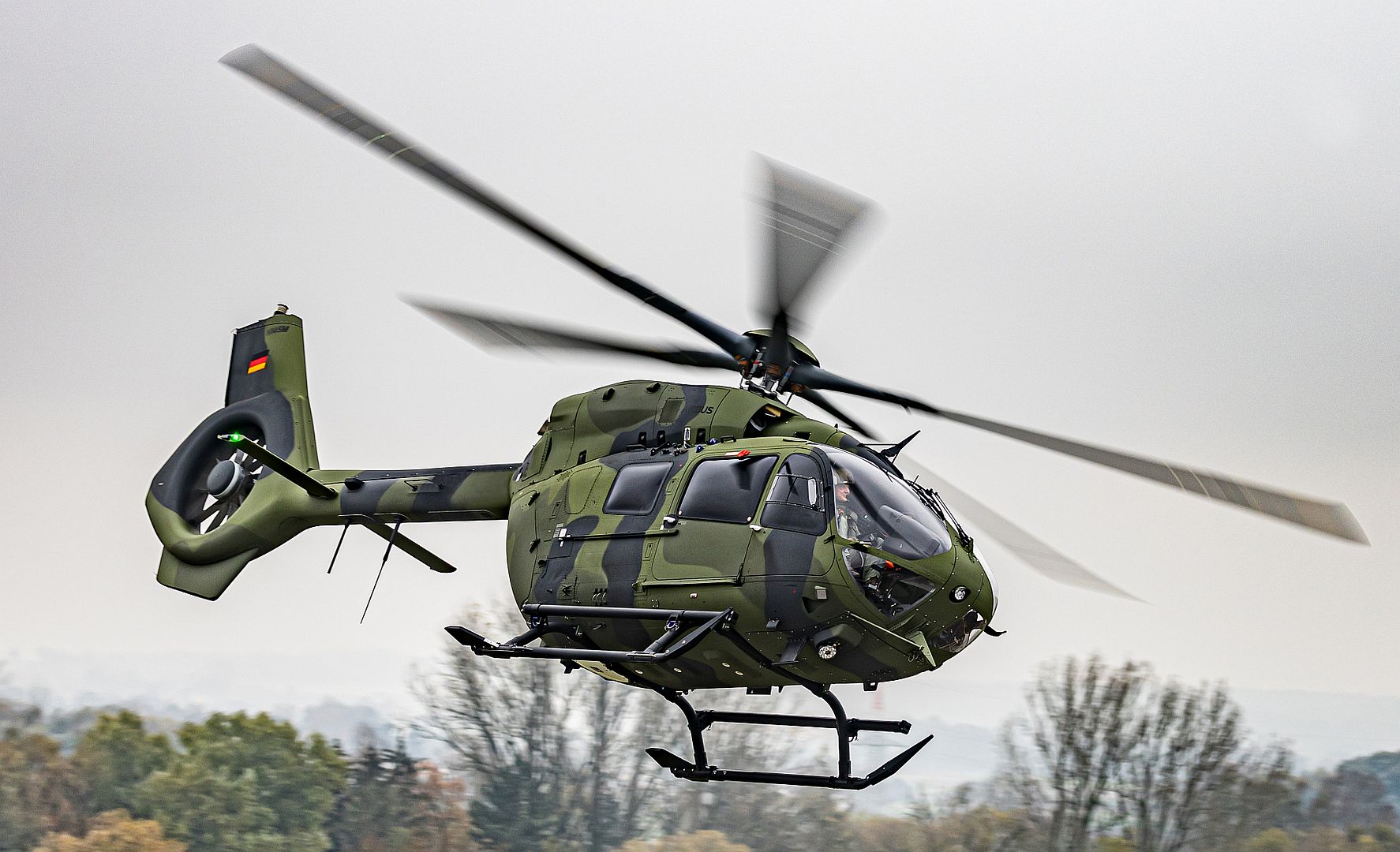
Royal Air Force and Royal Navy pilots will benefit from a cutting-edge cruise missile, following the first successful guided firing trial of the SPEAR missile.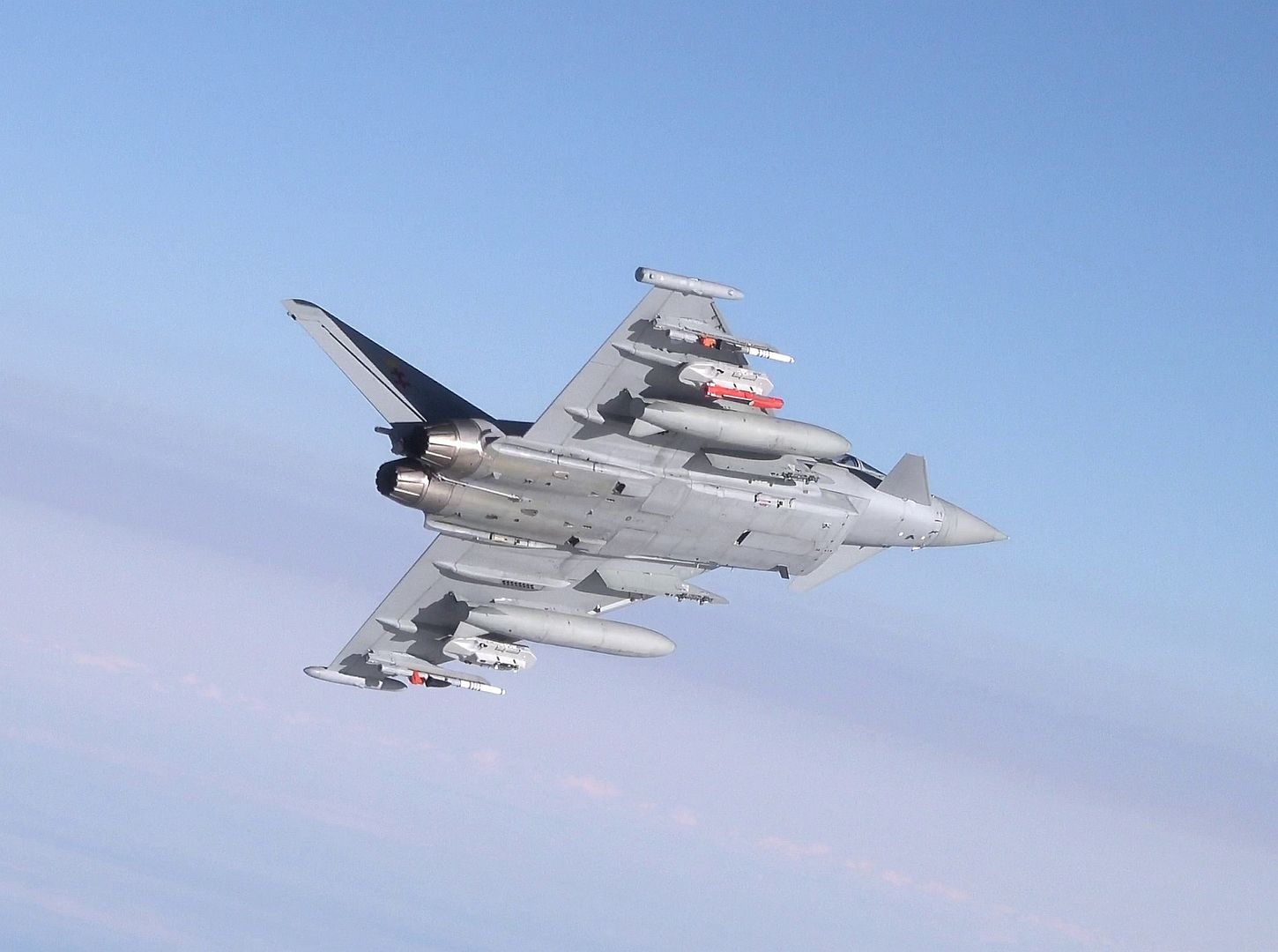
SPEAR, which is a new turbojet-powered miniature cruise missile, successfully completed the trial after being fired from a BAE Systems-operated Typhoon jet at Vidsel range in Sweden. This was the first time the weapons system had been launched from an aircraft, signifying a major leap forward in the programmes development.
Each missile can hit targets from 100km away and is designed to be used against mobile, relocatable, defended, or challenging targets. Once in service it will be fitted to the UK’s F-35B Lightning stealth fighter jets and allow the military to strike targets both from land and Queen Elizabeth-class aircraft carriers.
(Photos courtesy of the RAF)
-
 Main AdminU.S. Navy F/A-18F Super Hornet aircraft with Strike Fighter Squadron (VFA) 102, Carrier Air Wing (CVW) 5 land at Marine Corps Air Station Iwakuni, Japan, Nov. 17, 2024. Carrier Air Wing 5 aircraft and personnel return from being forward-deployed on the Nimitz-class aircraft carrier USS George Washington (CVN 73) providing local air superiority, all-weather offensive air-to-surface attack capabilities, to maintain a free and open Indo-Pacific. (U.S. Marine Corps photos by Lance Cpl. David Getz)
Main AdminU.S. Navy F/A-18F Super Hornet aircraft with Strike Fighter Squadron (VFA) 102, Carrier Air Wing (CVW) 5 land at Marine Corps Air Station Iwakuni, Japan, Nov. 17, 2024. Carrier Air Wing 5 aircraft and personnel return from being forward-deployed on the Nimitz-class aircraft carrier USS George Washington (CVN 73) providing local air superiority, all-weather offensive air-to-surface attack capabilities, to maintain a free and open Indo-Pacific. (U.S. Marine Corps photos by Lance Cpl. David Getz)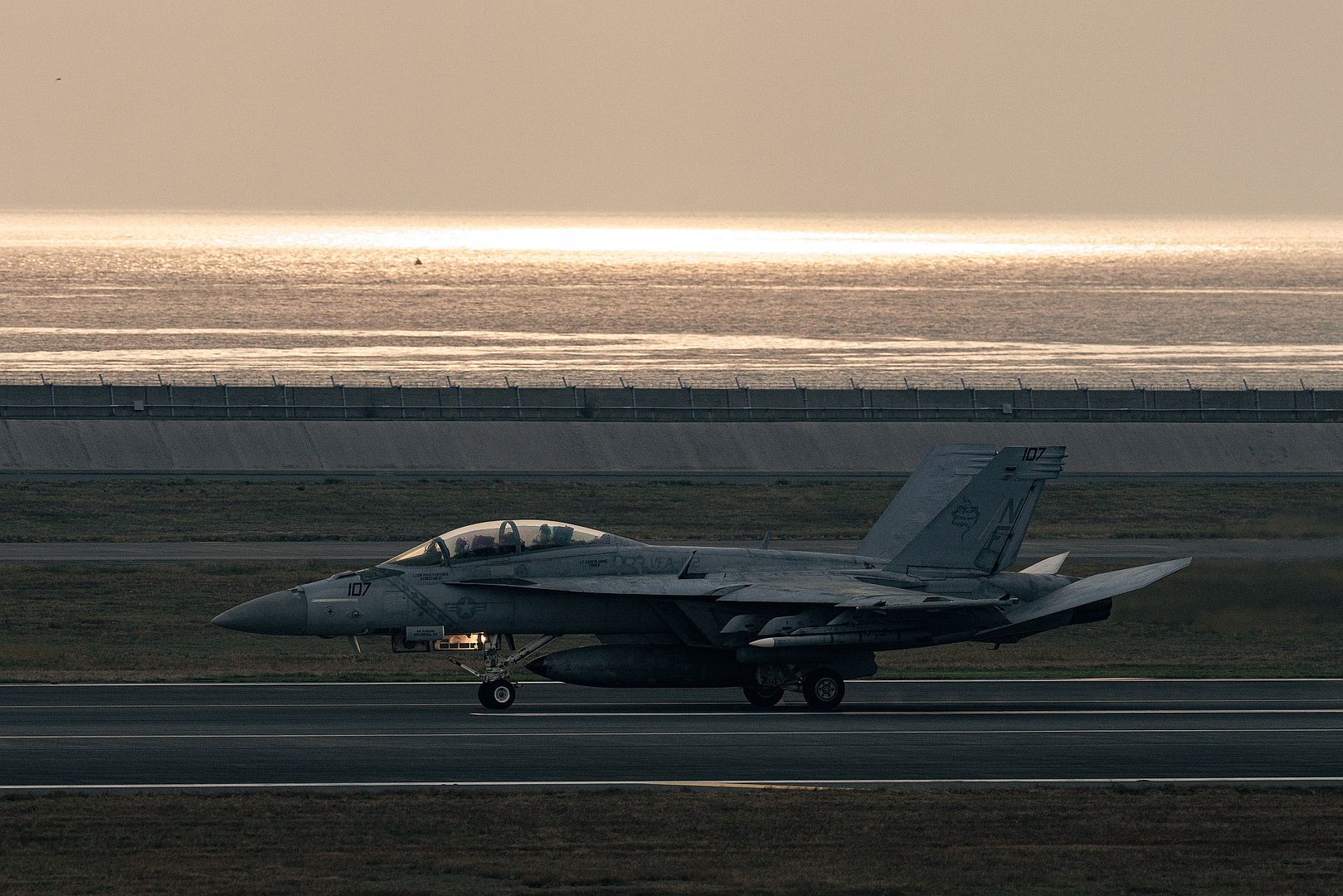
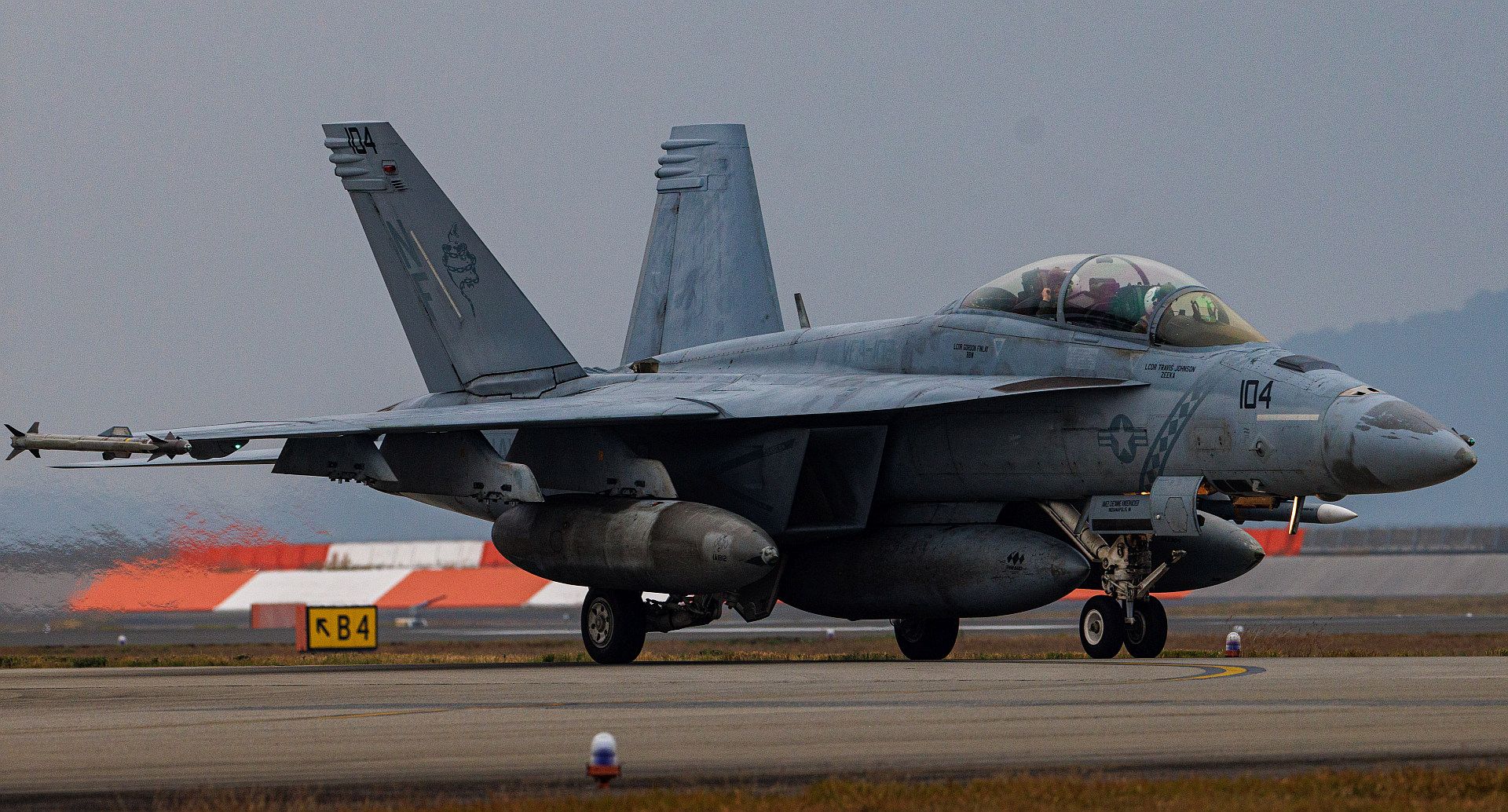
A U.S. Navy F-35C Lightning II aircraft with Strike Fighter Squadron (VFA) 147, Carrier Air Wing (CVW) 5 lands at Marine Corps Air Station Iwakuni, Japan, Nov. 17, 2024. Carrier Air Wing 5 aircraft and personnel return from being forward-deployed on the Nimitz-class aircraft carrier USS George Washington (CVN 73) providing local air superiority, all-weather offensive air-to-surface attack capabilities, to maintain a free and open Indo-Pacific. (U.S. Marine Corps photo by Lance Cpl. David Getz)
A U.S. Navy E/A-18G Growler aircraft with Electronic Attack Squadron (VAQ) 141, Carrier Air Wing (CVW) 5, lands at Marine Corps Air Station Iwakuni, Japan, Nov. 17, 2024. Carrier Air Wing 5 aircraft and personnel return from being forward-deployed on the Nimitz-class aircraft carrier USS George Washington (CVN 73) providing local air superiority, all-weather offensive air-to-surface attack capabilities to maintain a free and open Indo-Pacific. (U.S. Marine Corps photo by Lance Cpl. David Getz)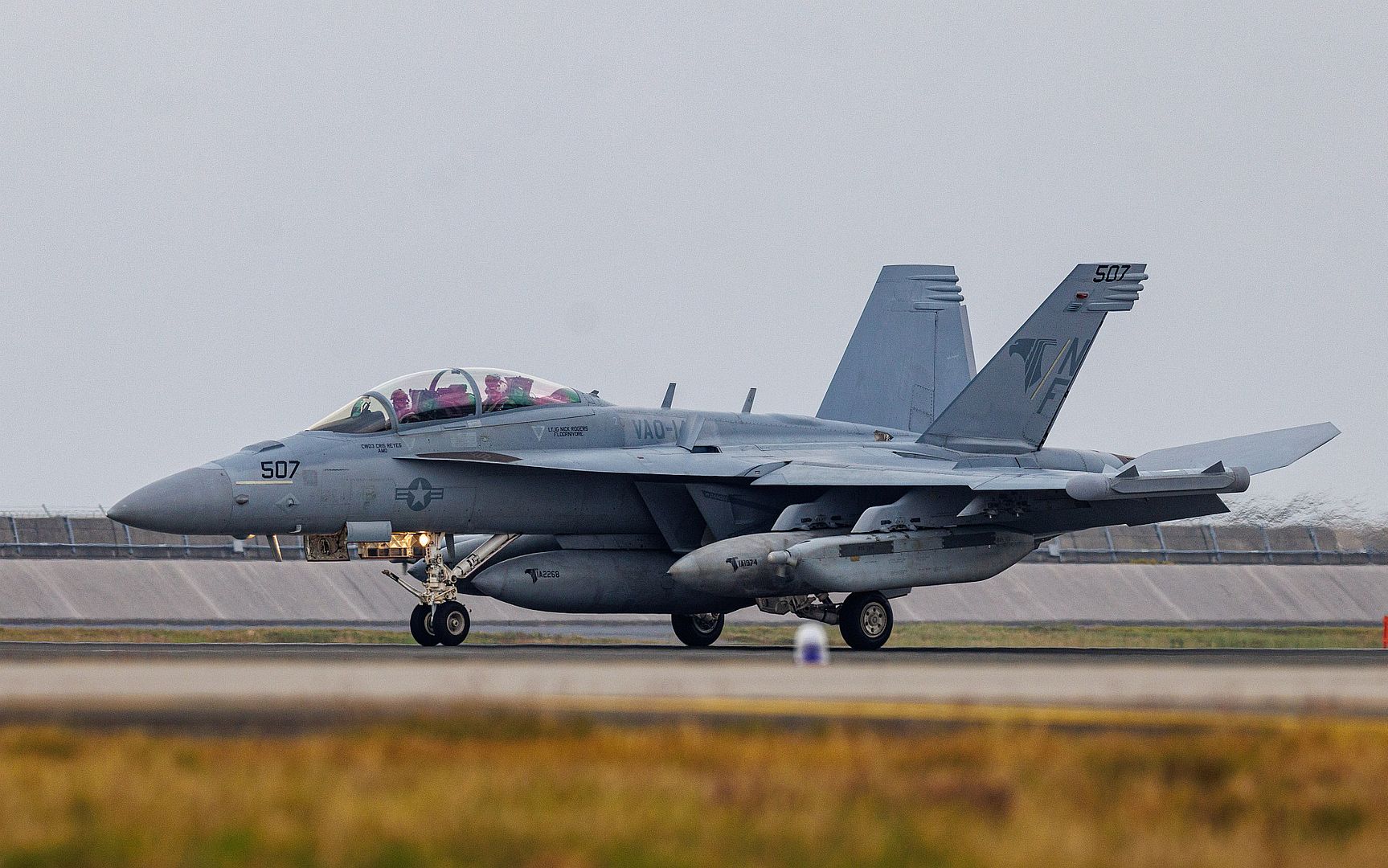
A U.S. Navy E-2D aircraft with Airborne Command and Control Squadron (VAW) 125, Carrier Air Wing (CVW) 5, lands at Marine Corps Air Station Iwakuni, Japan, Nov. 17, 2024. Carrier Air Wing 5 aircraft and personnel return from being forward-deployed on the Nimitz-class aircraft carrier USS George Washington (CVN 73) providing local air superiority, all-weather offensive air-to-surface attack capabilities to maintain a free and open Indo-Pacific. (U.S. Marine Corps photo by Lance Cpl. David Getz)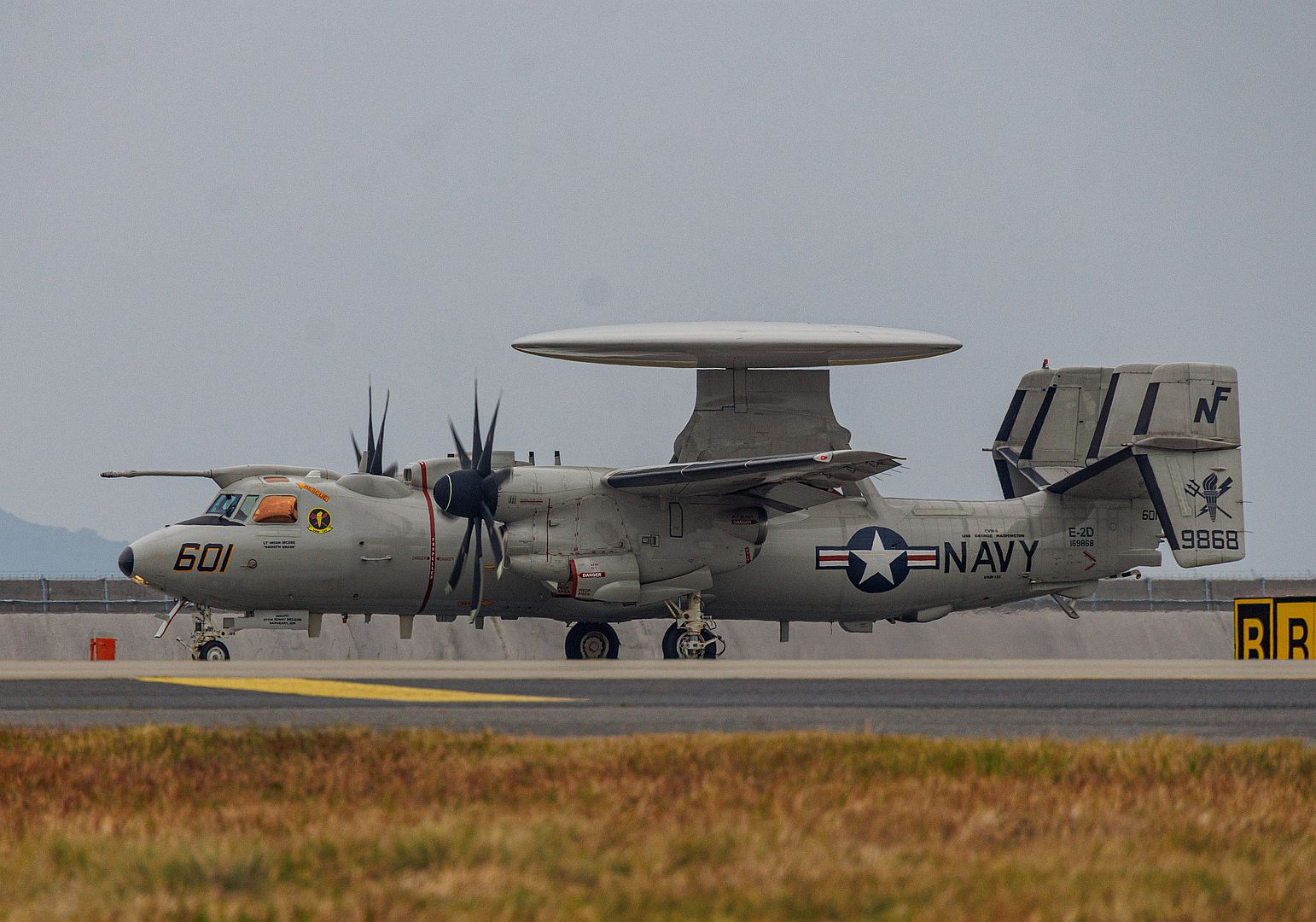
An A-10C Thunderbolt II aircraft, part of the Demonstration Team from Davis-Monthan Air Force Base, flies behind a KC-135 Stratotanker aircraft from the 171st Air Refueling Wing, Pennsylvania Air National Guard, Nov. 18, 2024. The A-10's needed refueling on their way back to Arizona after their last official demo event Nov. 17, 2024, at the Pittsburgh Steelers game. (U.S. Air National Guard photos by Tech. Sgt. Andrew Stover)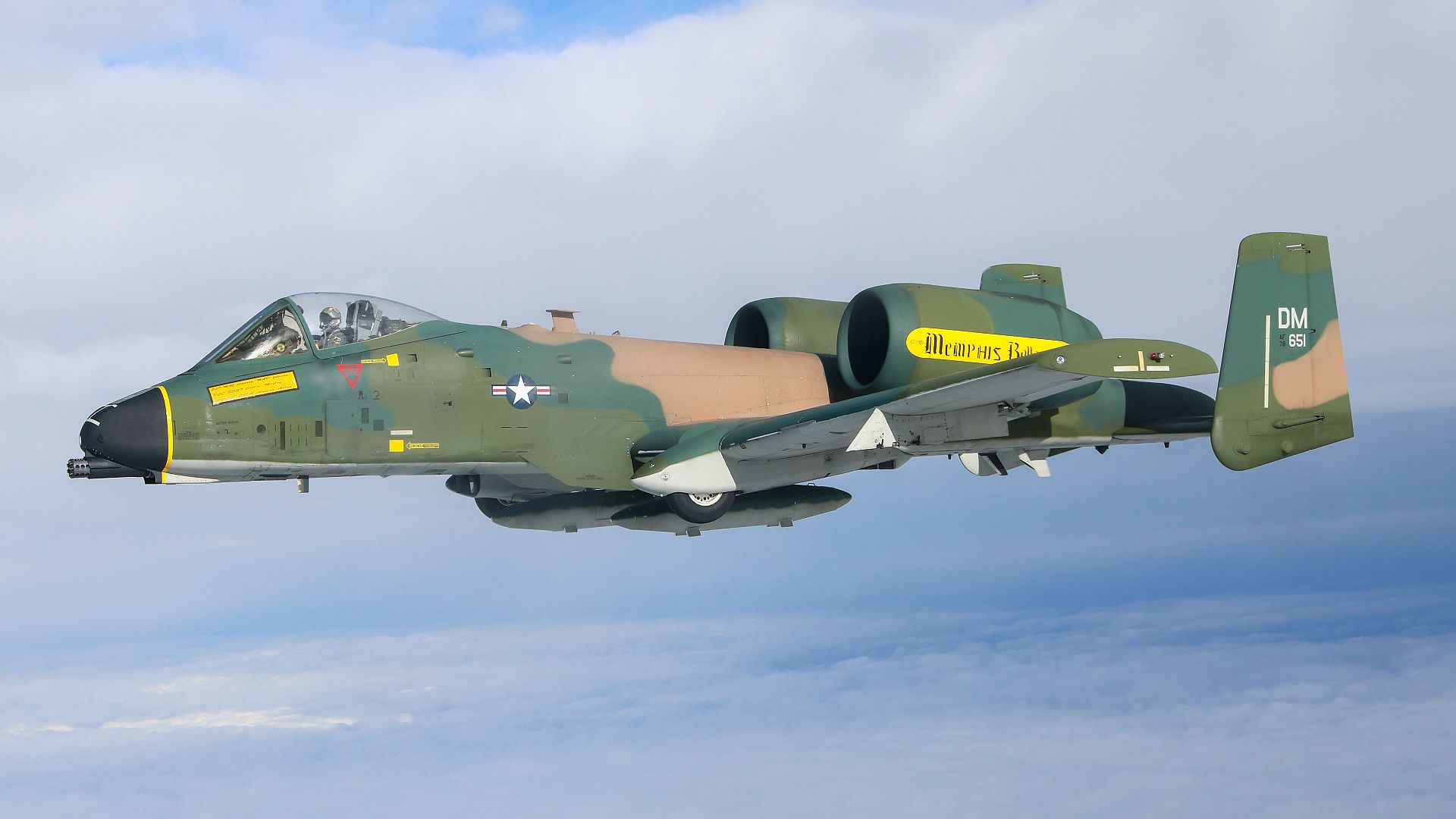

Nearly two years after being introduced into active service with the Brazilian Air Force (FAB), the F-39E Gripen concluded its participation in CRUZEX 2024, confirming FAB's projections.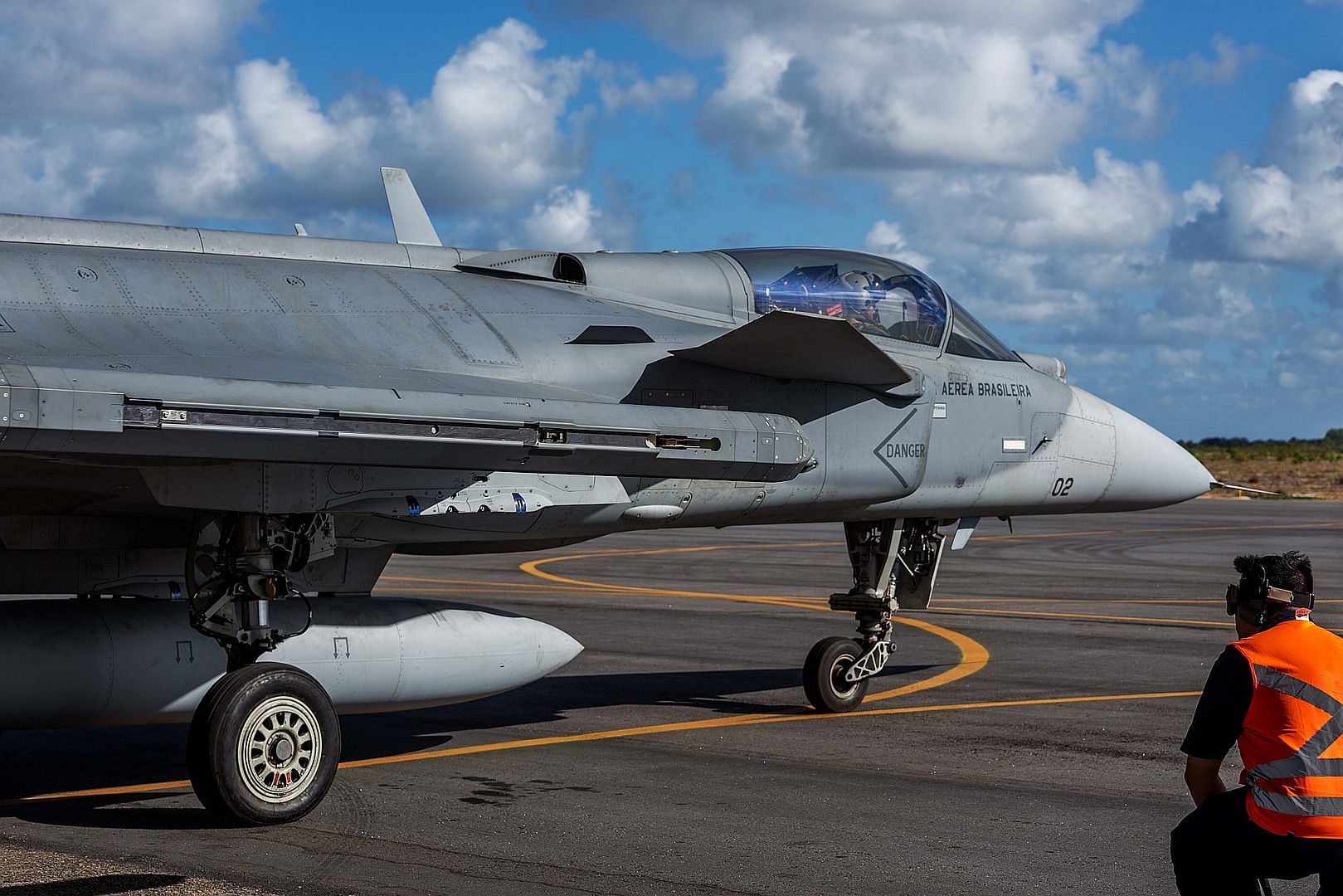
"Expectations were surpassed, especially regarding availability. We brought seven aircraft as planned and almost every day we had all seven fighters available on the flight line. The Composite Air Operations (COMAO) missions involved four F-39E Gripens in the morning, along with another smaller mission in the afternoon with two more aircraft," explained Lieutenant Colonel Ramon Lincoln Santos Fórneas, commander of the 1st Air Defence Group (1º GDA).
Whether acting as an Allied or an Opposing Force, the integration and performance of the systems were exceptional, showcasing the F-39E Gripen's capabilities as a modern weapons platform.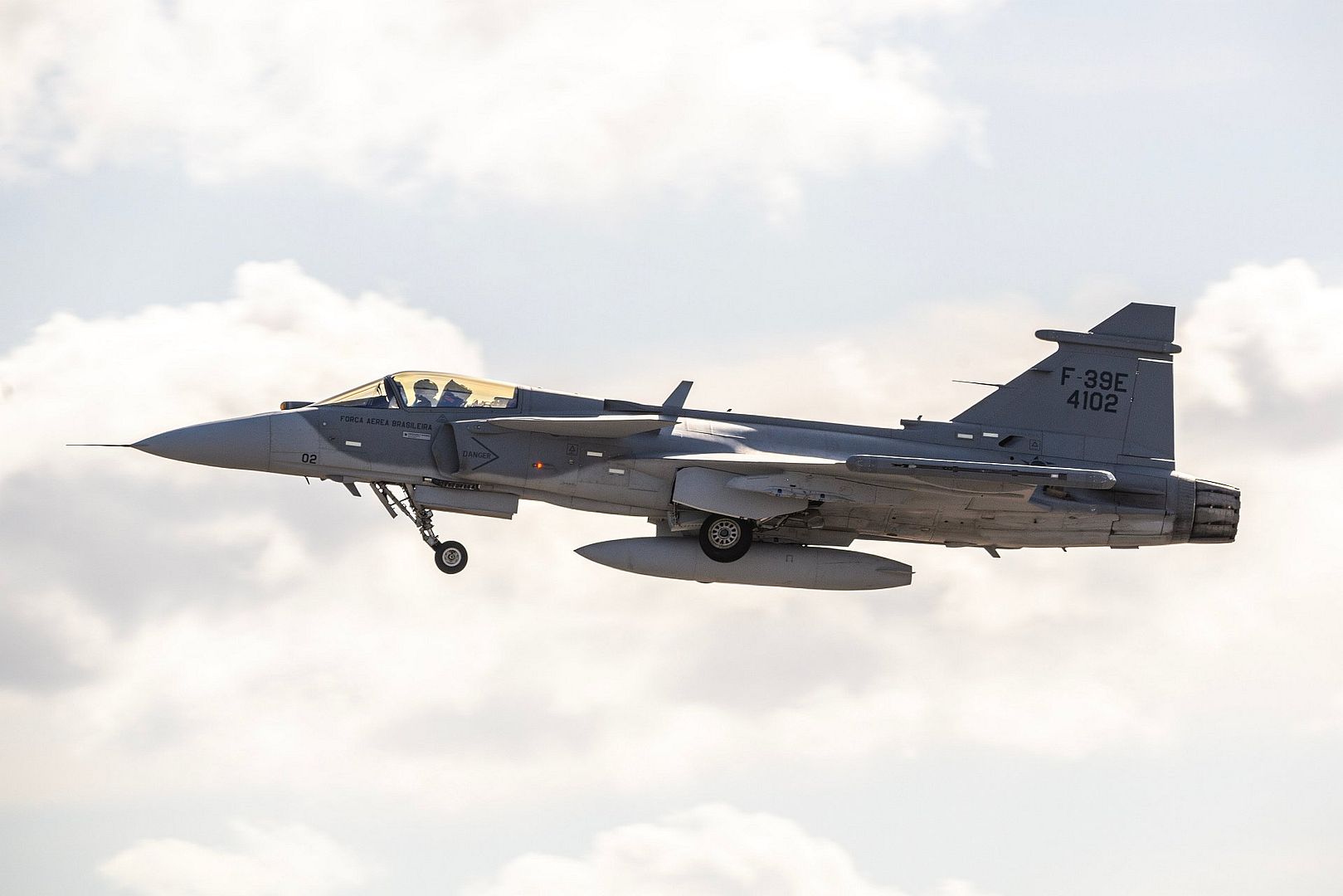
"The electronic warfare system, the threat detection, the Active Electronically Scanned Array (AESA) radar, and the passive Infra-Red Search and Track (IRST) targeting sensor all worked perfectly. We were able to simulate missile launches with excellent results," added Lieutenant Colonel Fórneas.
The fighter’s interaction with other aircraft in the same formation also went smoothly, providing air superiority and protection for transport and attack aircraft formations during the Composite Air Operations (COMAO), which involved dozens of aircraft flying simultaneously in the same airspace.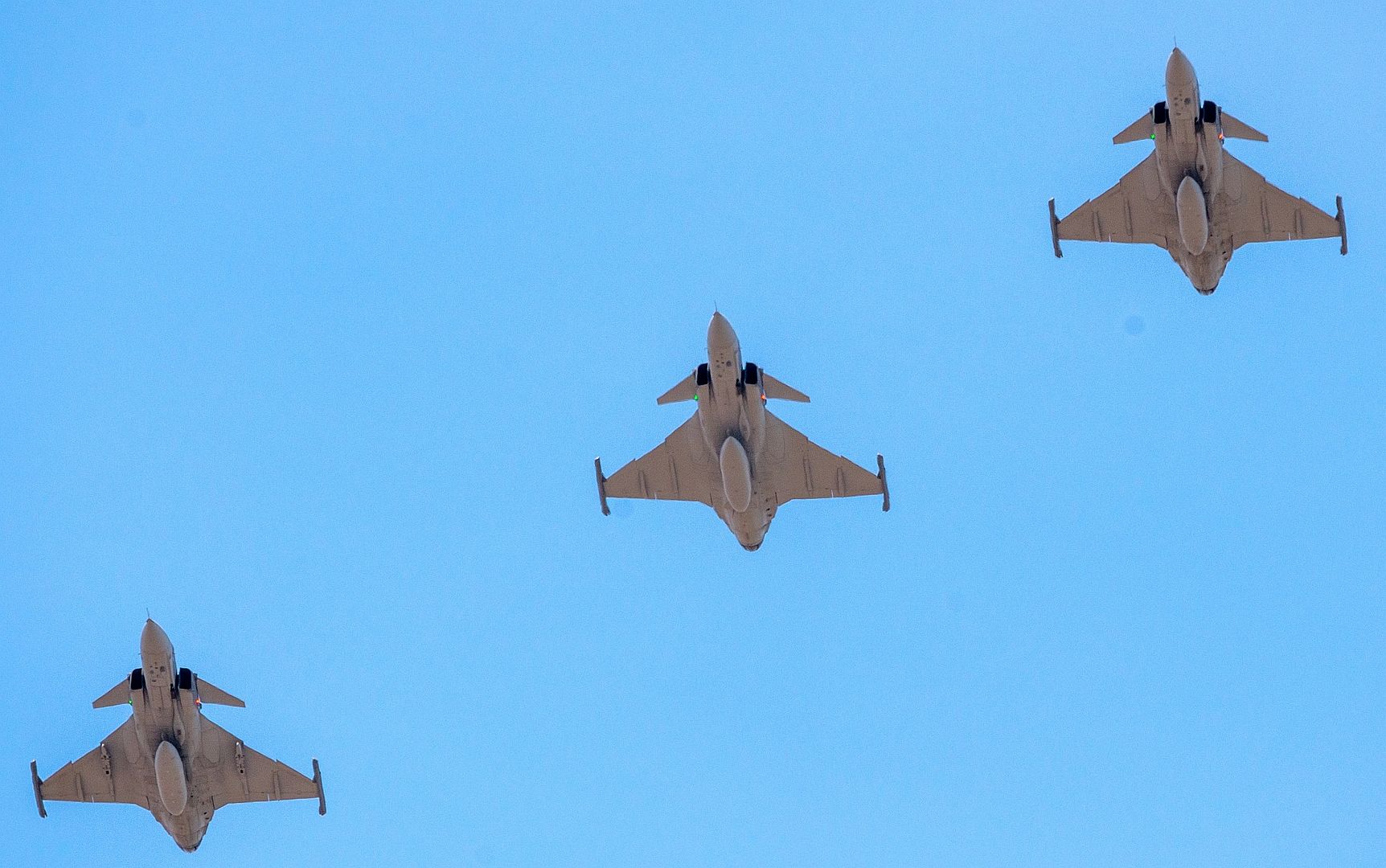
WICHITA, Kan. (November 19, 2024) — Textron Aviation today announced it delivered the first of two multi-mission Beechcraft King Air 360CHW aircraft to the Peruvian Air Force. The King Air 360CHW is cargo door equipped and fitted for heavy weight operation.
“The King Air 360CHW delivered to the Peruvian Air Force for aeromedical evacuation (MEDEVAC) can also execute troop and cargo transport, command and control and many other missions,” said Bob Gibbs, vice president, Special Mission Sales. “From the coast and the highlands to the Amazon rainforest of Peru, the versatile King Air is well suited to operate in diverse, austere and remote locations.”
Delivery of a second aeromedical evacuation-equipped King Air 360CHW is expected in 2025.
Endless Special Missions Possibilities
When government, military and commercial customers want airborne solutions for critical missions, they turn to Textron Aviation. The company’s aviation solutions provide the high performance and flight characteristics required to address the unique challenges of special missions operations. With unparalleled quality, versatility and low operating costs, Textron Aviation products are ideal for air ambulance; intelligence, surveillance and reconnaissance (ISR); utility transport; aerial survey; flight inspection; training and a number of other special operations.
SAN DIEGO – 19 November 2024 – On Nov. 13, 2024, General Atomics Aeronautical Systems, Inc. (GA-ASI), completed its final qualification test for its new 200-horsepower heavy fuel engine at its El Mirage, California, flight facility. The Heavy Fuel Engine (HFE) 2.0 is a highly reliable low-maintenance engine with a 40 percent increase in service life providing longer maintenance-free operational periods. The engine will provide the horsepower and electrical power required to meet the demanding performance needs of the new Gray Eagle 25M for Multi-Domain Operations (MDO).
The three-week qualification test of the HFE 2.0 engine is aligned with the Federal Aviation Administration’s endurance test requirements (FAA 14 CFR 33.49) as the FAA’s primary performance standard for engines to be used in commercial aviation. Over the last 18 months, HFE 2.0 excelled in strenuous durability testing that included 2,450 full power cycles simulating high stress conditions during three extensive test profiles of 200, 400, and 651 hours. Additionally, the engine completed 50 hours of flight testing across the flight envelope.
“This test is the culmination of the extensive durability and flight test program for the HFE 2.0 engine,” said GA-ASI President David R. Alexander. “It’s been great to see the outstanding test results that have validated the design and development of the HFE 2.0 engine we have worked on so passionately for the past seven years and to bring this world-class engine to the Gray Eagle fleet.”
GA-ASI and its General Atomics Europe affiliate partnered with global leaders in high-performance engines — supported by propulsion technology innovator Cosworth — to develop an engine on the company’s internally funded research and development program. GA-ASI also brought in General Atomics Electromagnetic Systems to design and build the engine’s dual brushless generator, which will dramatically reduce field maintenance and is designed to be a drop-in replacement for the existing generator. The enhanced generator will deliver over 50 percent more electrical power to support newly available payloads for the MDO mission.
After completion of the FAA engine endurance test, next steps call for the U.S. Army certification process to allow authorization of the HFE 2.0 for use on the existing fleet of GA-ASI’s Gray Eagle Extended Range (GE ER) Unmanned Aircraft System (UAS) as a replacement for the 180-horsepower engine that is reaching its end of life. HFE 2.0 is also the cornerstone of the modernized Gray Eagle 25M (GE 25M) UAS currently being produced under a U.S. Army-funded program to support future MDO UAS missions.
About GA-ASI
General Atomics Aeronautical Systems, Inc. (GA-ASI), an affiliate of General Atomics, is a leading designer and manufacturer of proven, reliable RPA systems, radars, and electro-optic and related mission systems, including the Predator® RPA series and the Lynx® Multi-mode Radar. With more than eight million flight hours, GA-ASI provides long-endurance, mission-capable aircraft with integrated sensor and data link systems required to deliver persistent situational awareness. The company also produces a variety of sensor control/image analysis software, offers pilot training and support services, and develops meta-material antennas.
For more information, visit www.ga-asi.com
-
 Main AdminA U.S. Marine drags a refueling hose to an F-35 Lightning II aircraft during Exercise Desert Hammer 25-1 while conducting forward area refueling point training at Davis-Monthan Air Force Base, Arizona, Nov. 14, 2024. The F-35s, assigned to the 62nd Fighter Squadron at Luke Air Force Base, Arizona, were refueled as part of Exercise Desert Hammer 25-1. (U.S. Air Force photo by Senior Airman William Finn V)
Main AdminA U.S. Marine drags a refueling hose to an F-35 Lightning II aircraft during Exercise Desert Hammer 25-1 while conducting forward area refueling point training at Davis-Monthan Air Force Base, Arizona, Nov. 14, 2024. The F-35s, assigned to the 62nd Fighter Squadron at Luke Air Force Base, Arizona, were refueled as part of Exercise Desert Hammer 25-1. (U.S. Air Force photo by Senior Airman William Finn V)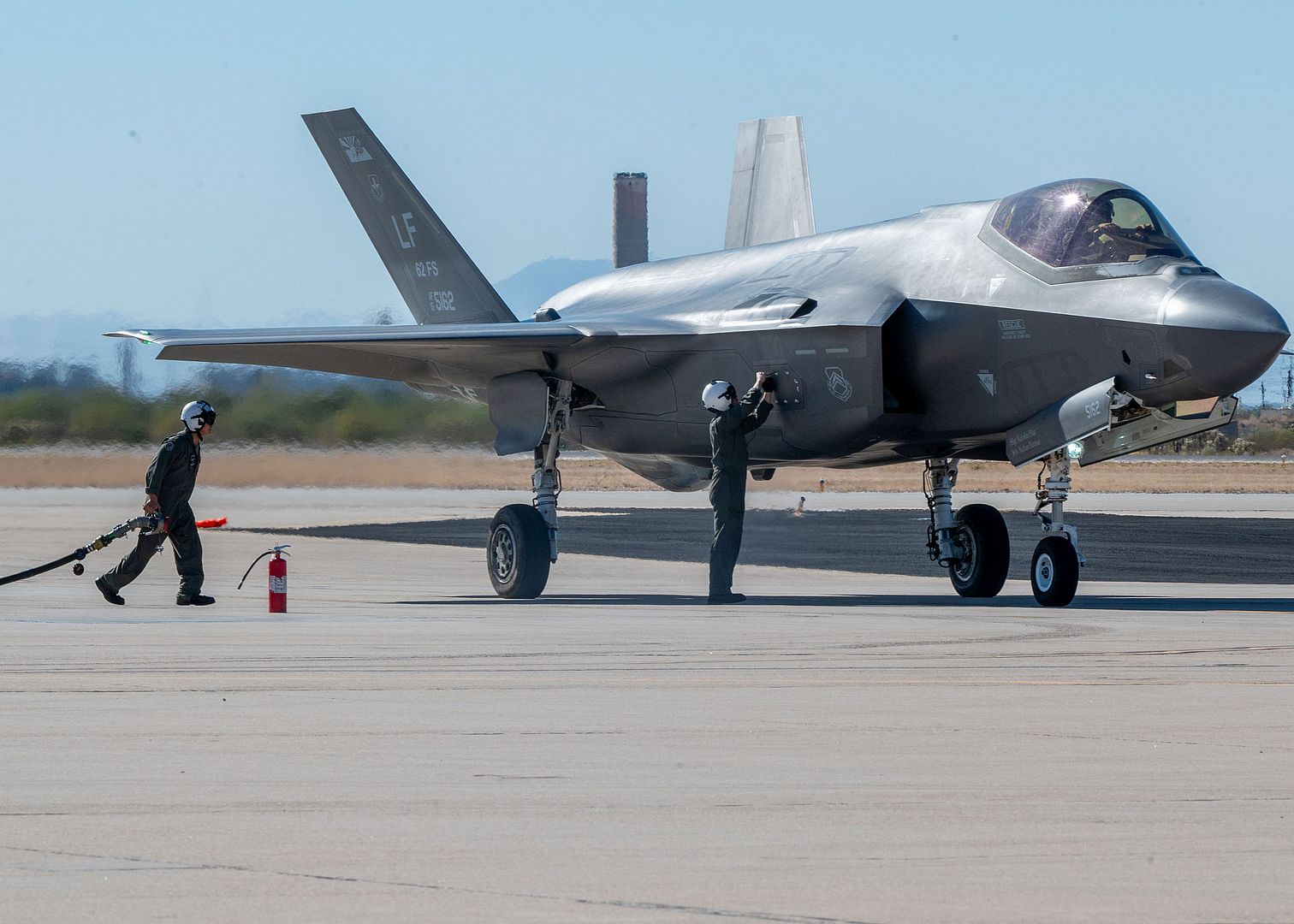
U.S. CENTRAL COMMAND AREA OF RESPONSIBILITY – U.S. Marine Corps F-35C Lightning II aircraft, assigned to Marine Fighter Attack Squadron (VMFA) 314 conducted the first F-35C combat air strikes for the platform, Nov. 9-10.
VMFA 314, assigned to Carrier Air Wing (CVW) 9 aboard the Nimitz-class aircraft carrier USS Abraham Lincoln (CVN 72), conducted multiple strikes on Houthi weapons storage facilities within Houthi-controlled territories in Yemen. The facilities housed conventional weapons, including anti-ship missiles. The Iranian-backed Houthis used these weapons to target U.S. and international military and civilian vessels navigating international waters in the Red Sea and Gulf of Aden.
“The F-35C demonstrated its warfighting advantage by transiting contested airspace and striking targets in the heart of Houthi territory over multiple days,” stated Lt. Col. Jeffrey "Wiki" Davis, commanding officer of VMFA-314. “My Marines are honored to be first to fight with the F-35C.”
The F-35C is a fifth-generation, long-range stealth fighter jet used by the U.S. Navy, Marine Corps and Air Force, and is a multi-role aircraft able to perform a variety of missions, including air-to-air combat, air-to-ground strikes, reconnaissance and electronic warfare.
"The offensive and defensive capabilities of the F-35C absolutely enhance our air wing's striking arm," said Capt. Gerald "Dutch" Tritz, commander, CVW 9. "The now battle-tested Air Wing of the Future has proven itself a game changer across all carrier air wing missions."
Other variants of the aircraft include the F-35A and the F-35B. The F-35B first saw combat in 2018 when units assigned to the Essex Amphibious Ready Group conducted airstrikes against the Taliban in Afghanistan and ISIS in Syria. Air Force F-35A’s first combat mission was completed the year after against ISIS targets in Iraq.
The “Black Knights” of VMFA-314, based out of Miramar, Calif., transitioned from the F-18 to the F-35C in 2020, making them the first fleet squadron in both the Navy and Marine Corps to operate the 5th Generation fighter aircraft. VMFA 314 was also the first operational Marine squadron to fly the F-4 Phantom and F-18 Hornet.
VMFA 314, part of 3rd Marine Aircraft Wing, is the only deployed F-35C squadron in the Marine Corps.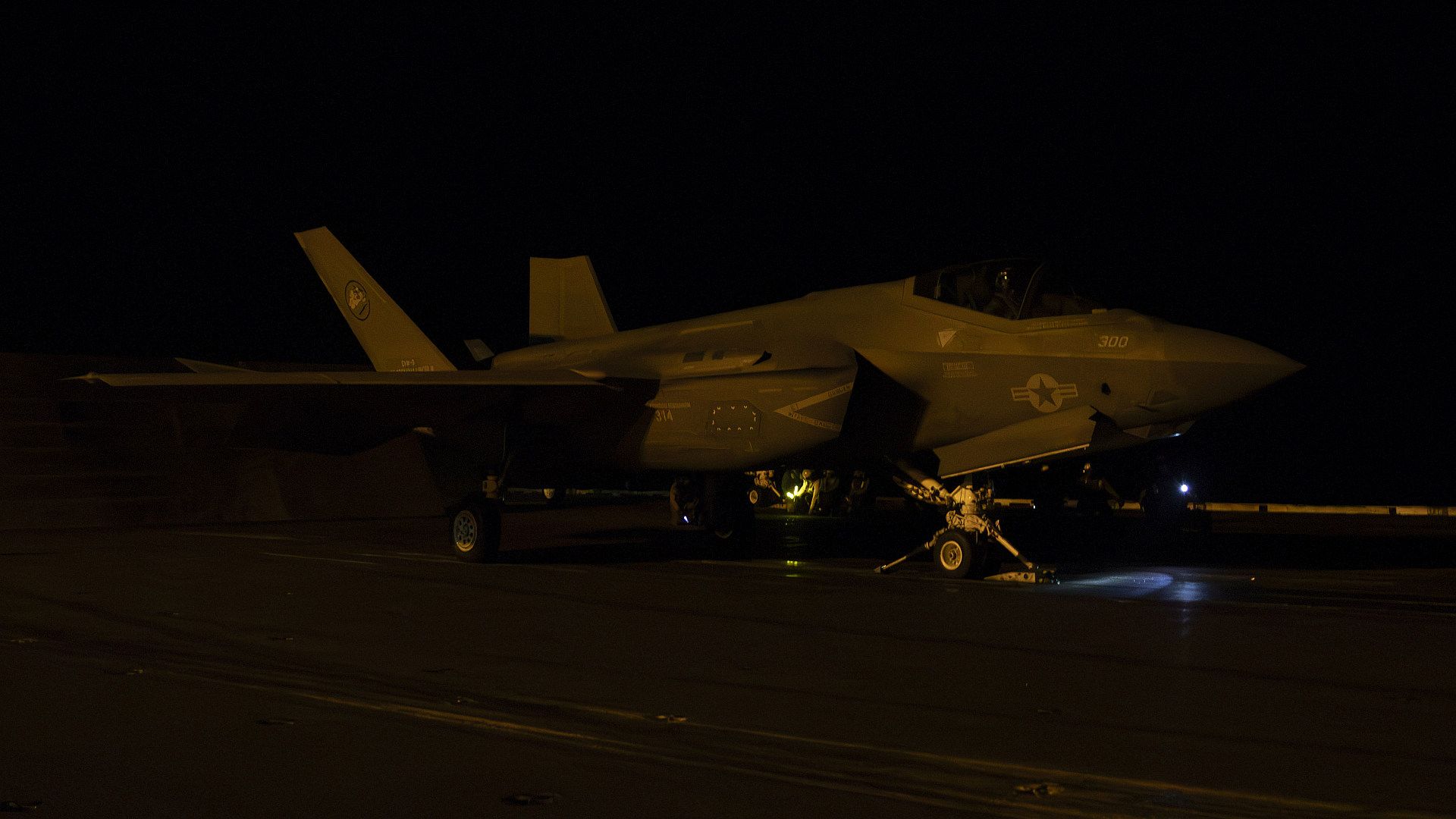
Commercial Aircraft Corporation of China, Ltd. (COMAC) held a product conference on November 12th, 2024 during the 15th China International Aviation & Aerospace Exhibition (Airshow China), announcing that ARJ21 aircraft got a commercial name C909, and unifying the names of its aircraft products as "COMAC + Model". At this point, the names of the three commercial aircraft products of COMAC are "COMAC C909", "COMAC C919" and "COMAC C929", respectively.
As a "good partner of the trunk liner", since C909 aircraft was put into commercial operation in 2016, a total of 150 aircraft have been delivered, safely carrying more than 17 million passengers. COMAC has continually promoted product improvement and optimization to unceasingly improve the performance, the crew operation experience and the cabin comfortability of C909 aircraft. Now, C909 aircraft is available in a variety of cabin layouts, including a two-class layout with 78 seats, an all economy-class layout with 90 seats, and a high-density economy-class layout with 95 or 97 seats; has excellent take-off and landing performance and crosswind resistance at airports with short and narrow runways in severe cold, high temperature and plateau conditions; and has strong adaptability to the operating environment in border areas of China and overseas regions such as Southeast Asia and Africa. C909 aircraft is suitable for relying on regional airports or sub-hub airports to build route networks and supplement transport capacity for hub airports. In addition, C909 aircraft can carry out commercial flight using Sustainable Aviation Fuel (SAF) with a mixing ratio of up to 50% to meet the diversified demands of customers.
With the comprehensive transformation of the trunk liner program from development phase to industrialization phase, large-scale and serialized development is steadily advanced, and more and more China-made commercial aircraft are put into route operation. COMAC's unifying the names of aircraft products is conducive to shaping the image of serialized products and further enhancing product identification and brand influence. COMAC will continue to deliver commercial aircraft products which are safer, more economic, more comfortable and more environmental-friendly, and inject more COMAC wisdom and strength into the development of the global air transport industry.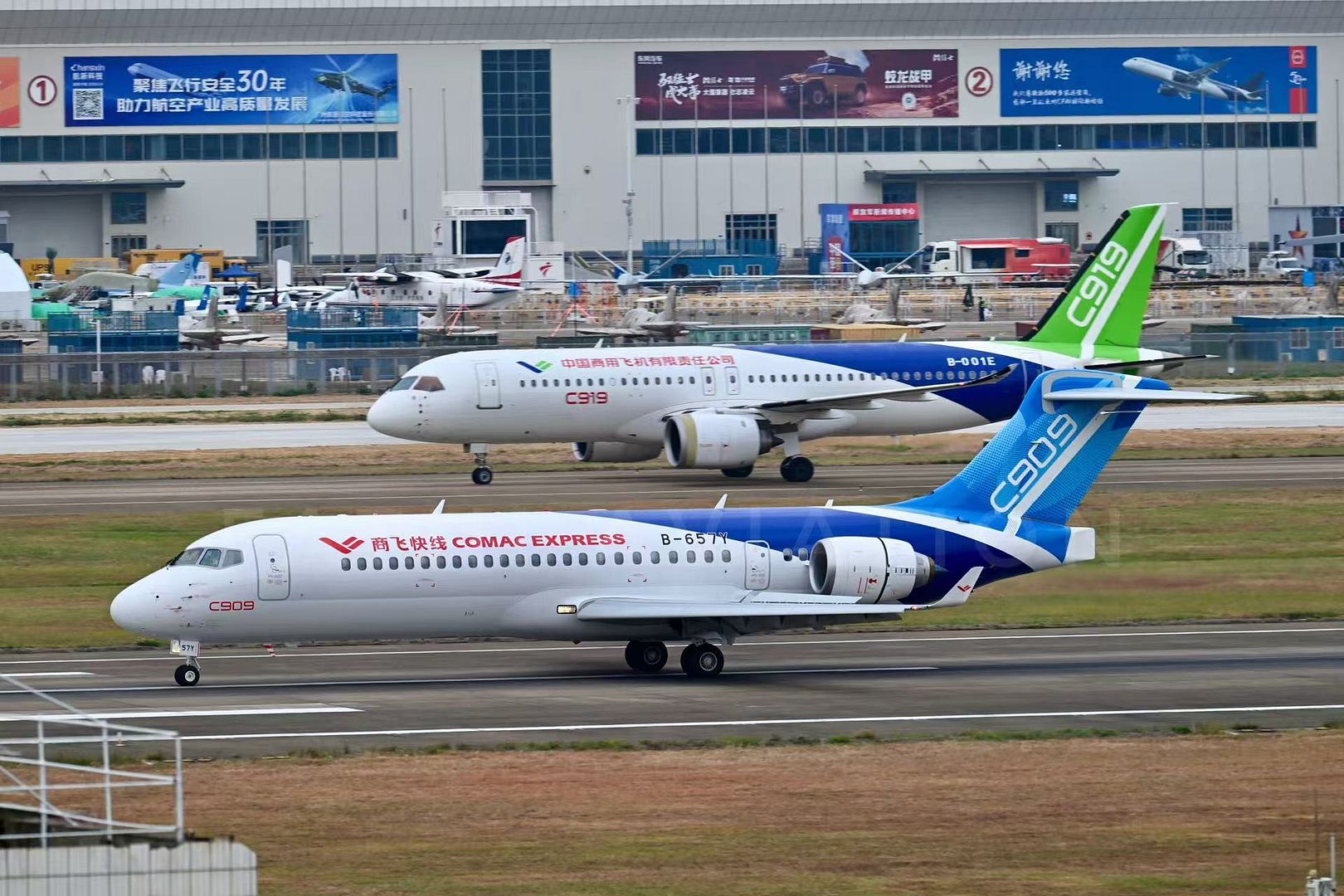
BAE Systems will deliver and integrate next-generation active control sidesticks on JetZero’s new blended-wing body aircraft, which is set to accelerate the path to a sustainable future in aviation.
Active control sidesticks give immediate and intuitive feedback directly into the pilot’s hands, which enables them to safely make use of the aircraft’s full flight envelope. Another significant benefit of this technology is the ability to link the controls electronically from pilot to pilot across the cockpit. This link enables both pilots to feel the forces and see the movement generated by the other. Active control sticks also require less complexity, weight, and volume than mechanically linked control sticks.
“This order is another significant step for BAE Systems in the aviation market and furthers the company’s pursuit of a greener tomorrow,” said Adam Taylor, business development & capability director at BAE Systems. “As the aerospace industry works diligently to lower emissions, we are proud to be part of JetZero’s project to help further the industry’s sustainability vision.”
Finalising supplier contracts for the flight control systems is a significant milestone on our journey from design, to test, to demonstration,” said Dan da Silva, chief operating officer for JetZero. “It’s just the latest example of the steady progress JetZero is making toward building this airplane. BAE’s reputation for excellence is well deserved, and we’re so pleased to see their shared enthusiasm and belief in the blended wing airplane we’re building at JetZero.”
BAE Systems is a world leader in active inceptor technology with more than 30 years of experience. This technology has logged more than 1.4 million flight hours, flying on 16 different commercial and military aircraft around the world, including the first flights of the Embraer C-390 Millennium, Gulfstream G500 and G600, Lockheed Martin F-35, Boeing AH-64 Apache and Sikorsky CH-53K King Stallion. Work on the JetZero program will be performed at the company’s facility in Rochester, UK.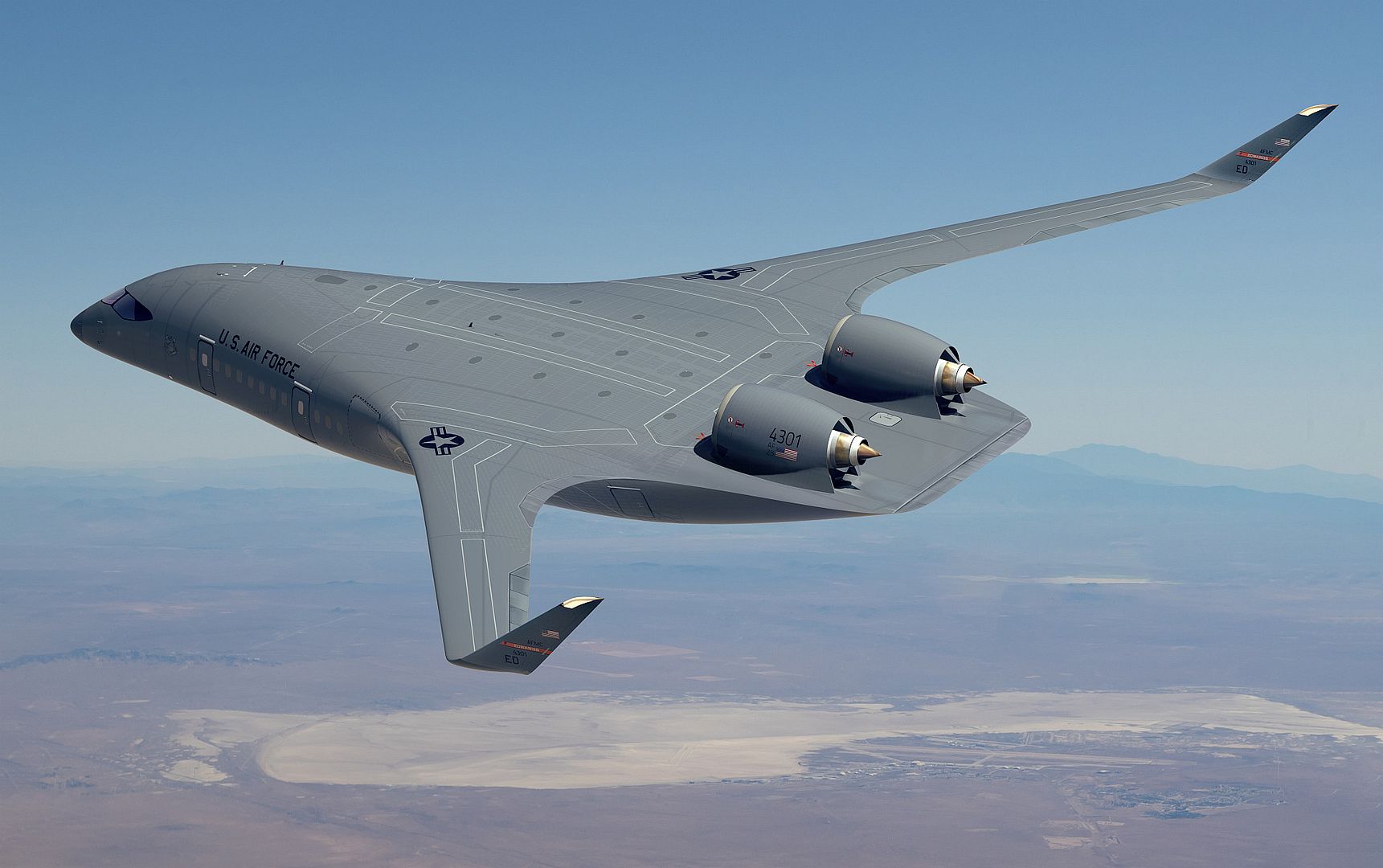
In October, Italian Eurofighter Typhoons from Task Force Air 36th Wing, based in Šiauliai, Lithuania, practised, for the first time , an air-to-ground training activity at Cudgel shooting range.
(Photo courtesy of the Aeronautica Militare)
-
 Main AdminA U.S. Marine Corps MQ-9A Reaper unmanned aircraft system with Marine Unmanned Aerial Vehicle Training Squadron (VMUT) 2 taxis at Marine Corps Air Station Cherry Point, North Carolina, Nov. 21, 2024. VMUT-2 serves as the Marine Corps' MQ-9A Reaper Fleet Replacement Squadron, whose primary mission is to train unmanned aerial systems officers and enlisted sensor operators in their respective military occupational specialties. (U.S. Marine Corps photos by Chief Warrant Officer 2 Akeel Austin)
Main AdminA U.S. Marine Corps MQ-9A Reaper unmanned aircraft system with Marine Unmanned Aerial Vehicle Training Squadron (VMUT) 2 taxis at Marine Corps Air Station Cherry Point, North Carolina, Nov. 21, 2024. VMUT-2 serves as the Marine Corps' MQ-9A Reaper Fleet Replacement Squadron, whose primary mission is to train unmanned aerial systems officers and enlisted sensor operators in their respective military occupational specialties. (U.S. Marine Corps photos by Chief Warrant Officer 2 Akeel Austin)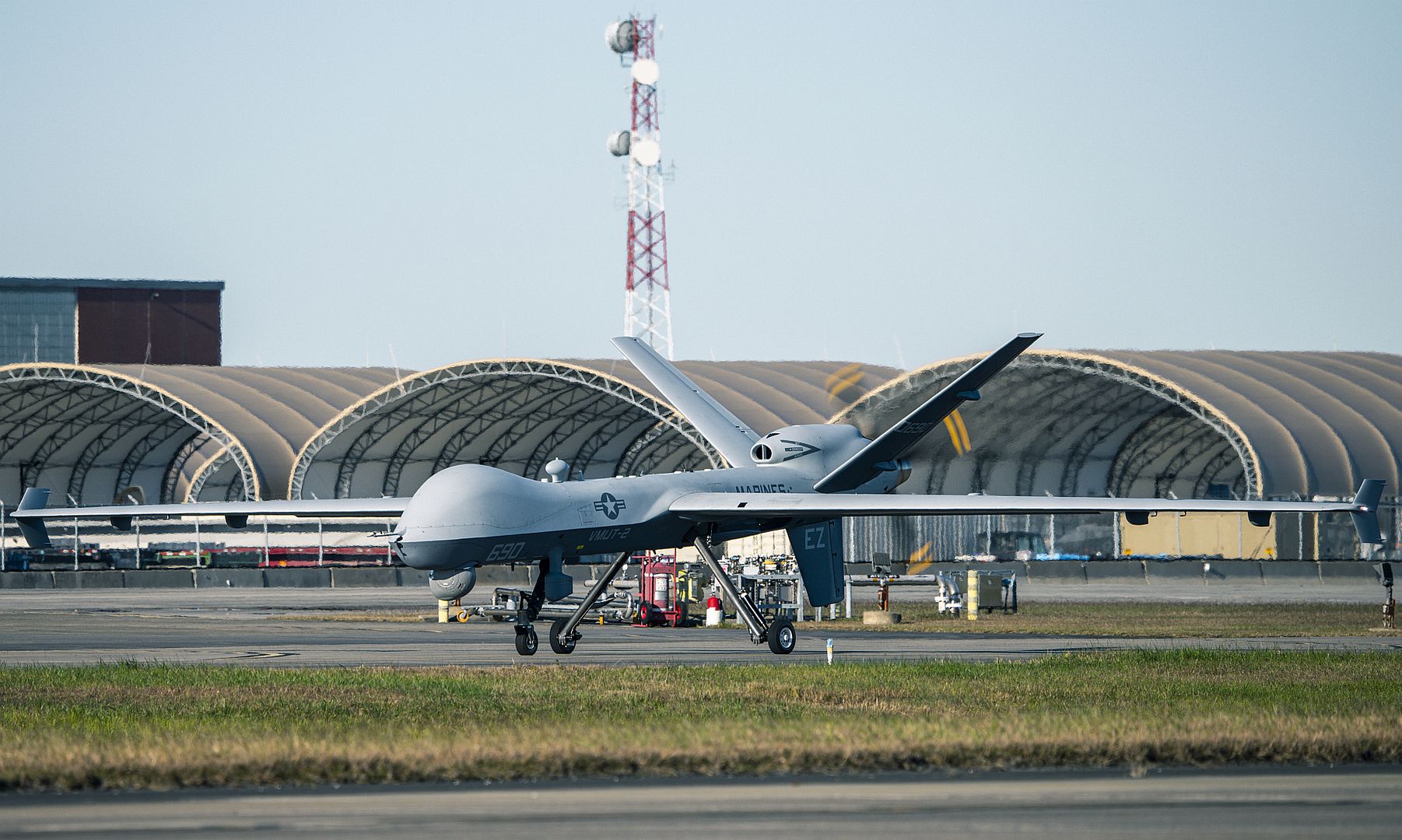
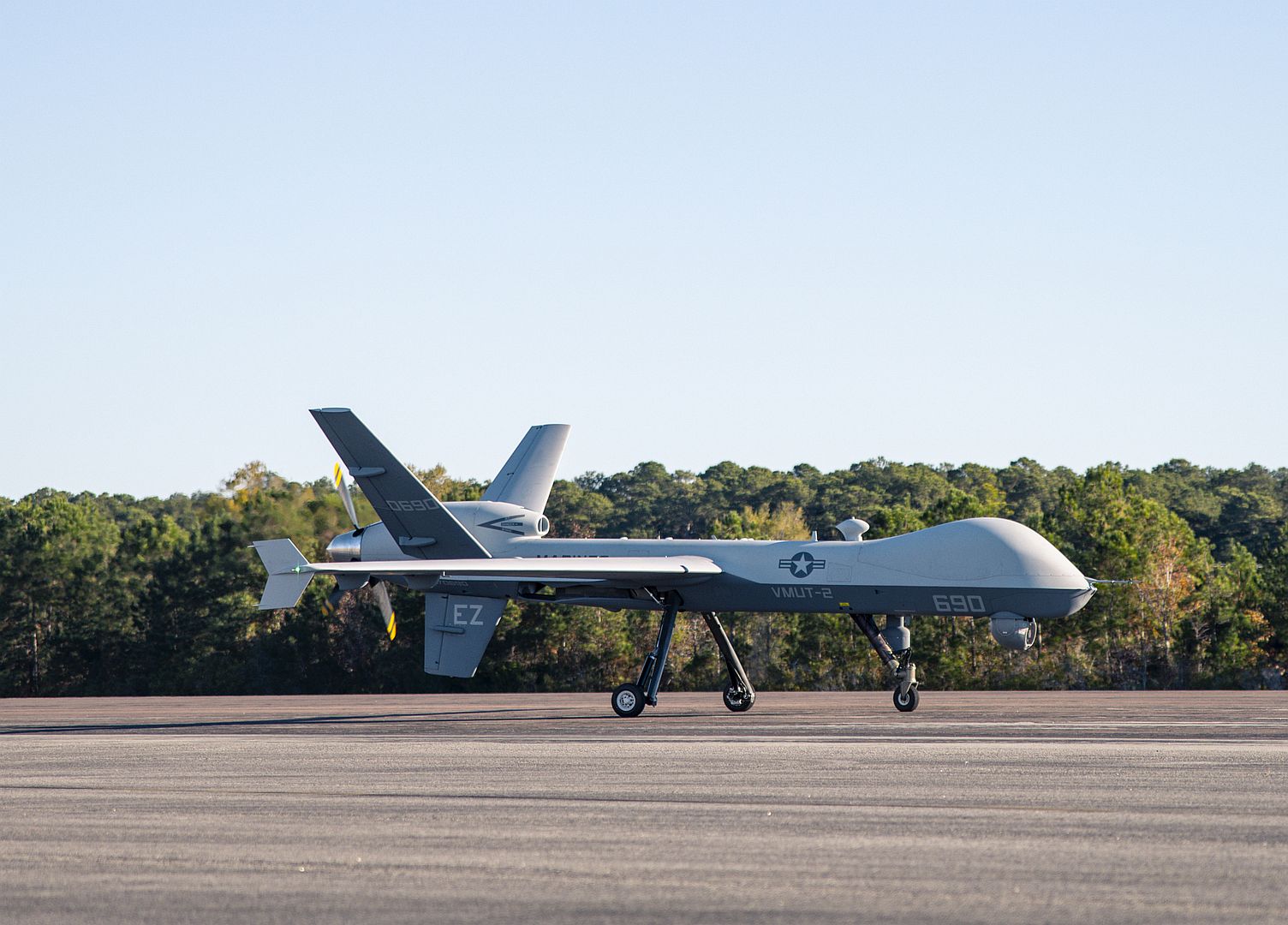
A U.S. Air Force F-16 Fighting Falcon flies over the U.S. Central Command area of responsibility November 13, 2024. The F-16 delivers airpower with an all-weather capability, enabling it to conduct missions and defend the region during adverse conditions. (Photo by Staff Sgt. William Rosado)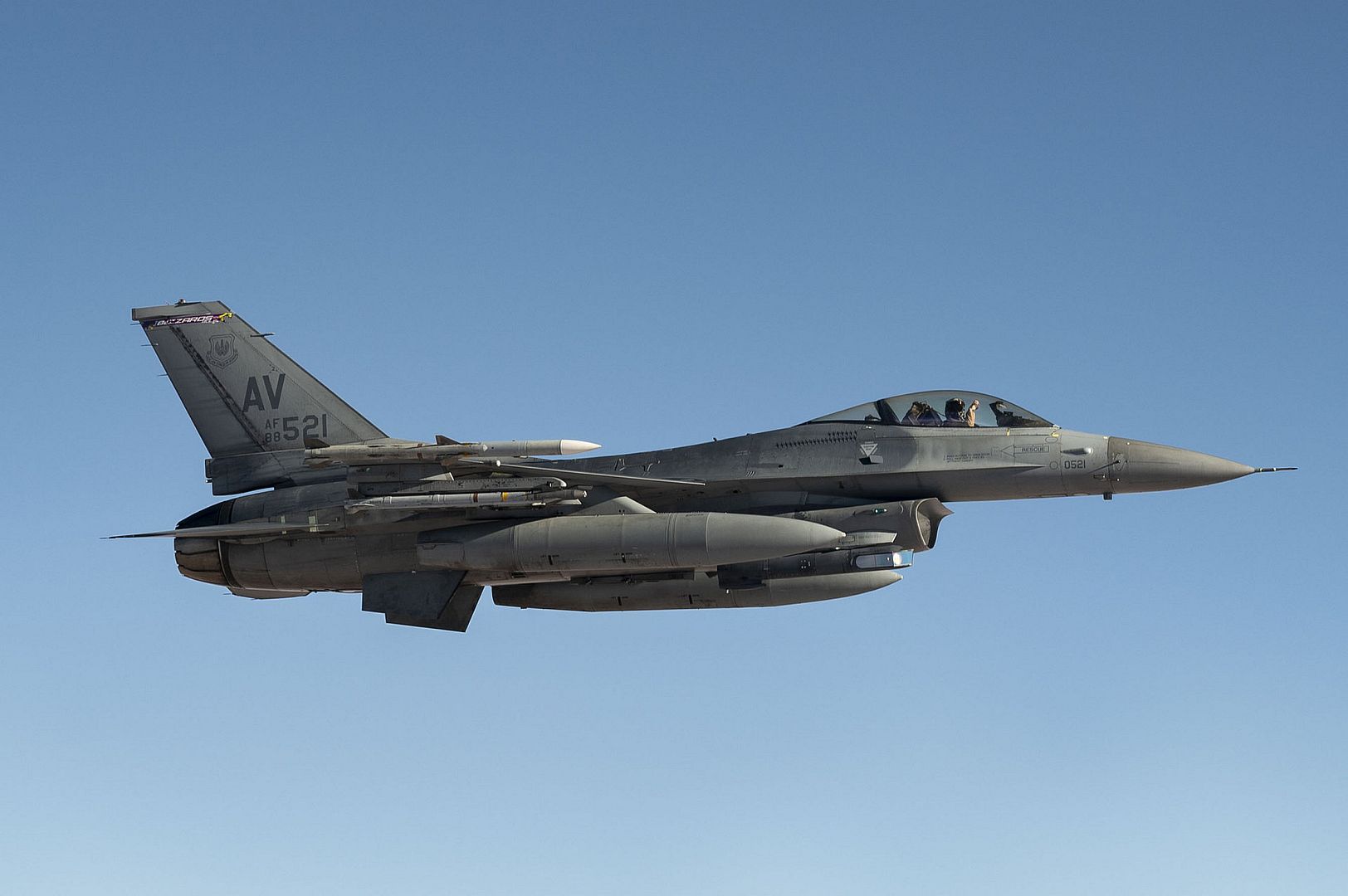
A U.S. Air Force F-16 Fighting Falcon prepares to be refueled over the U.S. Central Command area of responsibility November 13, 2024. The Fighting Falcon conducts missions within the AOR to compete strategically and maintain a status of partner of choice in the region. (Photo by Staff Sgt. William Rosado)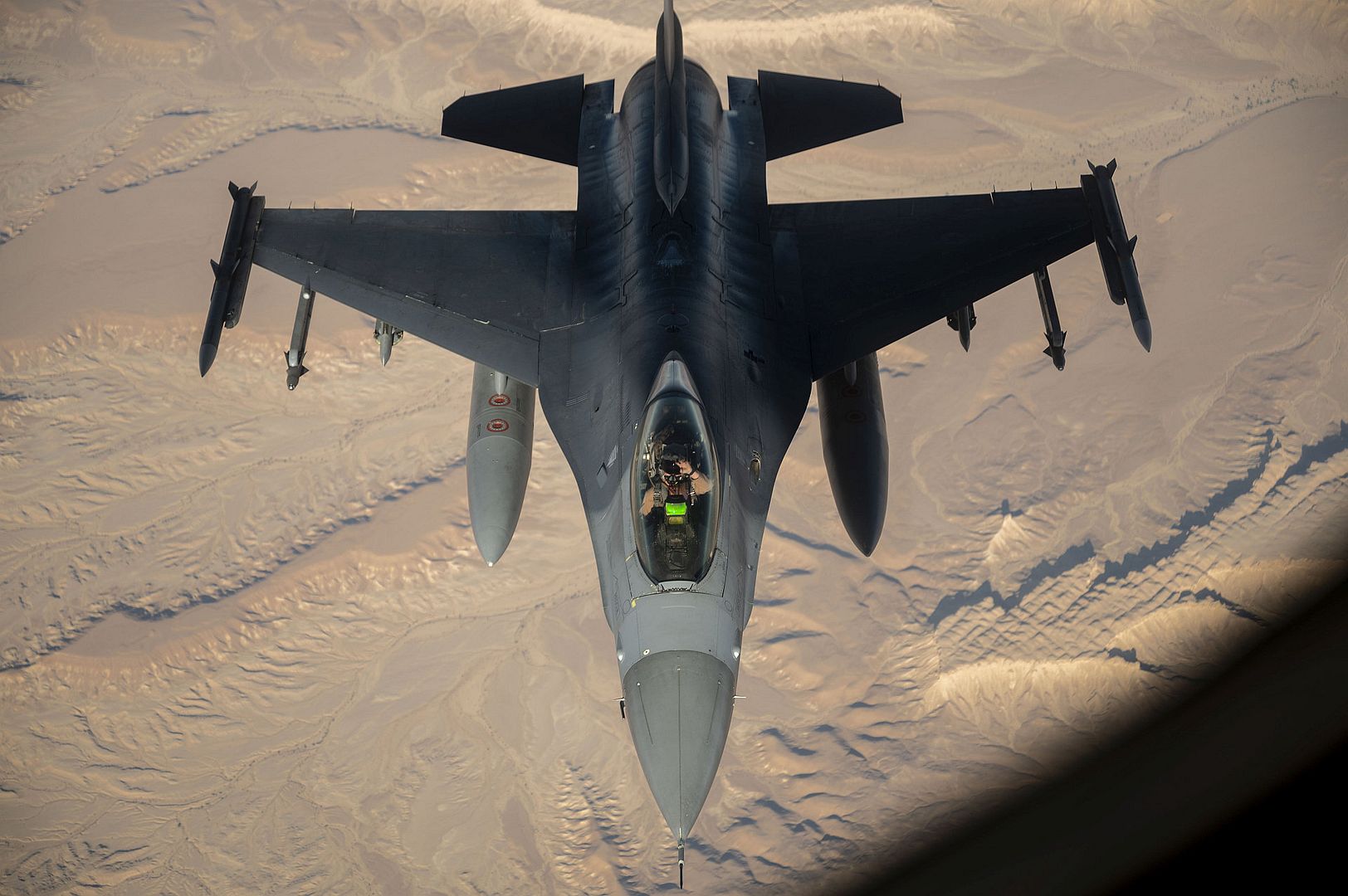
Aviation Electrician's Mate Airman Gleb Bear, from Middletown, Ohio, assigned to the Saberhawks of Helicopter Maritime Strike Squadron, signals to a Royal Canadian Air Force CH-148 Cyclone as it lands on the flight deck of Nimitz-class aircraft carrier USS George Washington (CVN 73) while underway in the Philippine Sea, Nov. 16, 2024. George Washington is 7th Fleet’s premier forward-deployed aircraft carrier, a long-standing symbol of the United States’ commitment to maintaining a free and open Indo-Pacific region, while operating alongside Allies and partners across the U.S. Navy’s largest numbered fleet. (U.S. Navy photo by Mass Communication Specialist 3rd Class August Clawson)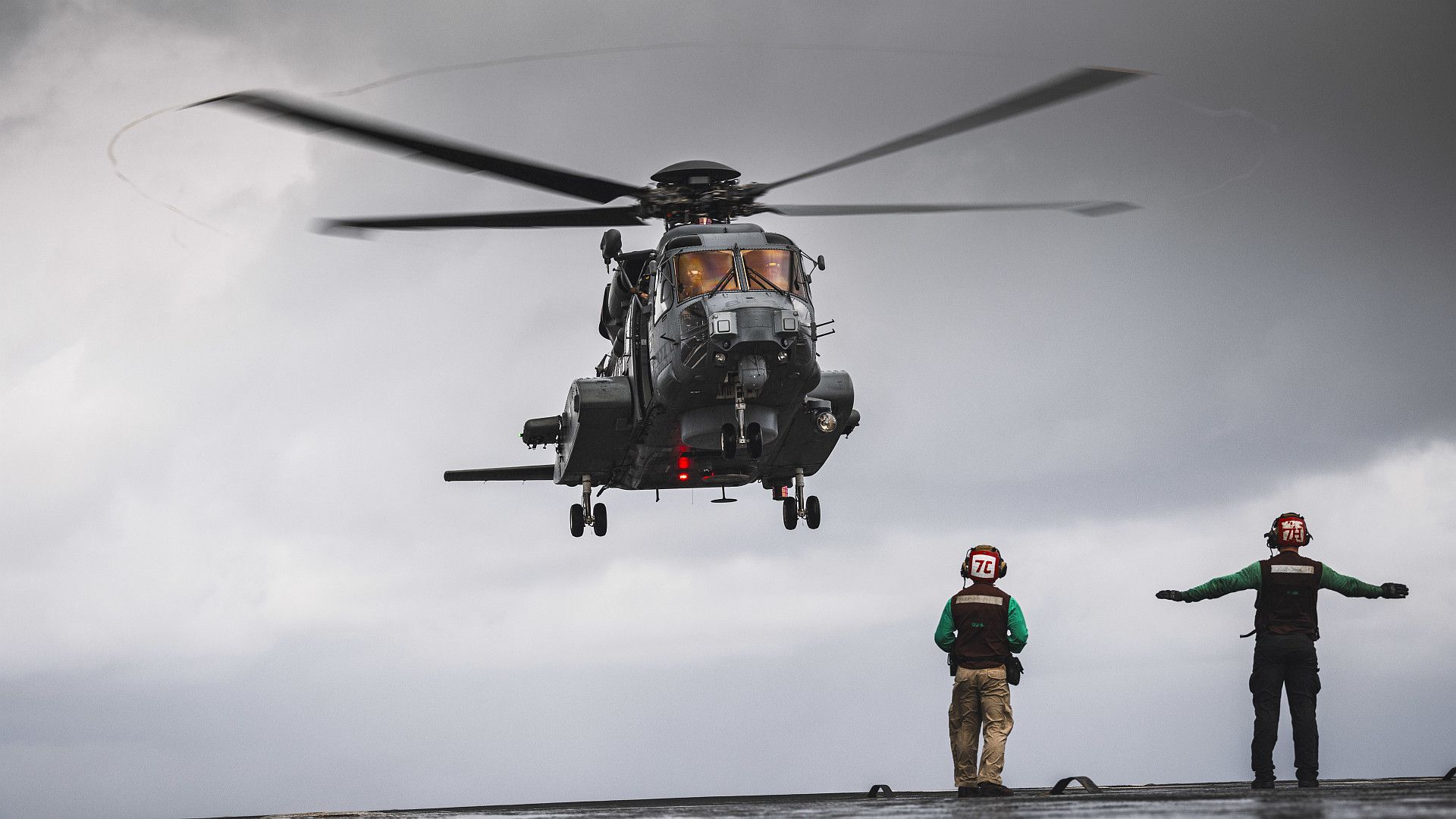
FORT WORTH, Texas, Nov. 21, 2024 /PRNewswire/ -- The Government of Romania confirmed today its intent to procure 32 Lockheed Martin 5th Generation F-35 Lightning II aircraft by signing a Letter of Offer and Acceptance (LOA) through a U.S. government Foreign Military Sale. This decision marks a significant milestone in Romania's defense strategy and its commitment to maintaining a robust and advanced military force.
"We are pleased to welcome Romania into the F-35 enterprise," said Lt. Gen Mike Schmidt, director and program executive officer of the F-35 Joint Program Office. "The integration of the F-35 Lightning II aircraft into the Romanian Air Force will significantly strengthen NATO's deterrence capabilities by providing unmatched strategic, operational, and tactical advantages. The F-35 Joint Program Office is dedicated to continuing a strong relationship with Romania, ensuring a successful transition and providing comprehensive support for their pilots and maintainers as we move forward together on this great effort."
The F-35 plays a crucial role in 21st Century Security® by deterring threats and disrupting adversaries' plans. By its very presence, the F-35 enhances the safety of nations operating it and protects freedom around the world.
"For nearly 30 years, Romania and Lockheed Martin have been defense and security partners," said Bridget Lauderdale, vice president and general manager, F-35 Lightning II Program, Lockheed Martin. "The acquisition of the F-35 further fortifies Romania's national security and deterrent capability."
"The F-35's growing presence across Europe demonstrates alliance-based deterrence and is setting the foundation for NATO and allied nations' next generation air power capability," said Mara Motherway, vice president, Strategy and Business Development, Lockheed Martin.
The F-35 offers the most cost-effective solution for Romania, combining unprecedented operational capability with an affordable and efficient global sustainment network. This partnership promises technological advancements, reinforcing Romania's position in the global defense landscape. It also represents a significant leap in defense technology and international collaboration.
The Romania Air Force's F-35s will integrate seamlessly with existing F-16 fleets, enhancing the unique, powerful capabilities of each aircraft and establishing a fortified defense profile. Last year, Lockheed Martin and the governments of Romania and the Netherlands established the European F-16 Training Center (EFTC) in Romania. The partnerships in place at the EFTC deliver tailored training at an accelerated pace, ensuring Romanian pilots are fully prepared to execute their missions safely and effectively.
The F-35 is the most advanced, connected fighter aircraft in the world, providing unmatched 5th Generation capabilities and strengthening allied deterrence for the U.S. and its allies. To date, 20 global customers have chosen the F-35 for its advanced, connected capabilities to strengthen 21st Century Security®, enhance global partnerships and power economic growth. More than 1,000 F-35s are currently operational around the globe, generating more than 940,000 flight hours. F-35s operate from 33 bases worldwide, including 10 nations operating on home soil. As adversaries advance and legacy aircraft age, the F-35 is critical to maintaining air dominance for decades to come.
About Lockheed Martin
Lockheed Martin is a global defense technology company driving innovation and advancing scientific discovery. Our all-domain mission solutions and 21st Century Security® vision accelerate the delivery of transformative technologies to ensure those we serve always stay ahead of ready. More information at Lockheedmartin.com.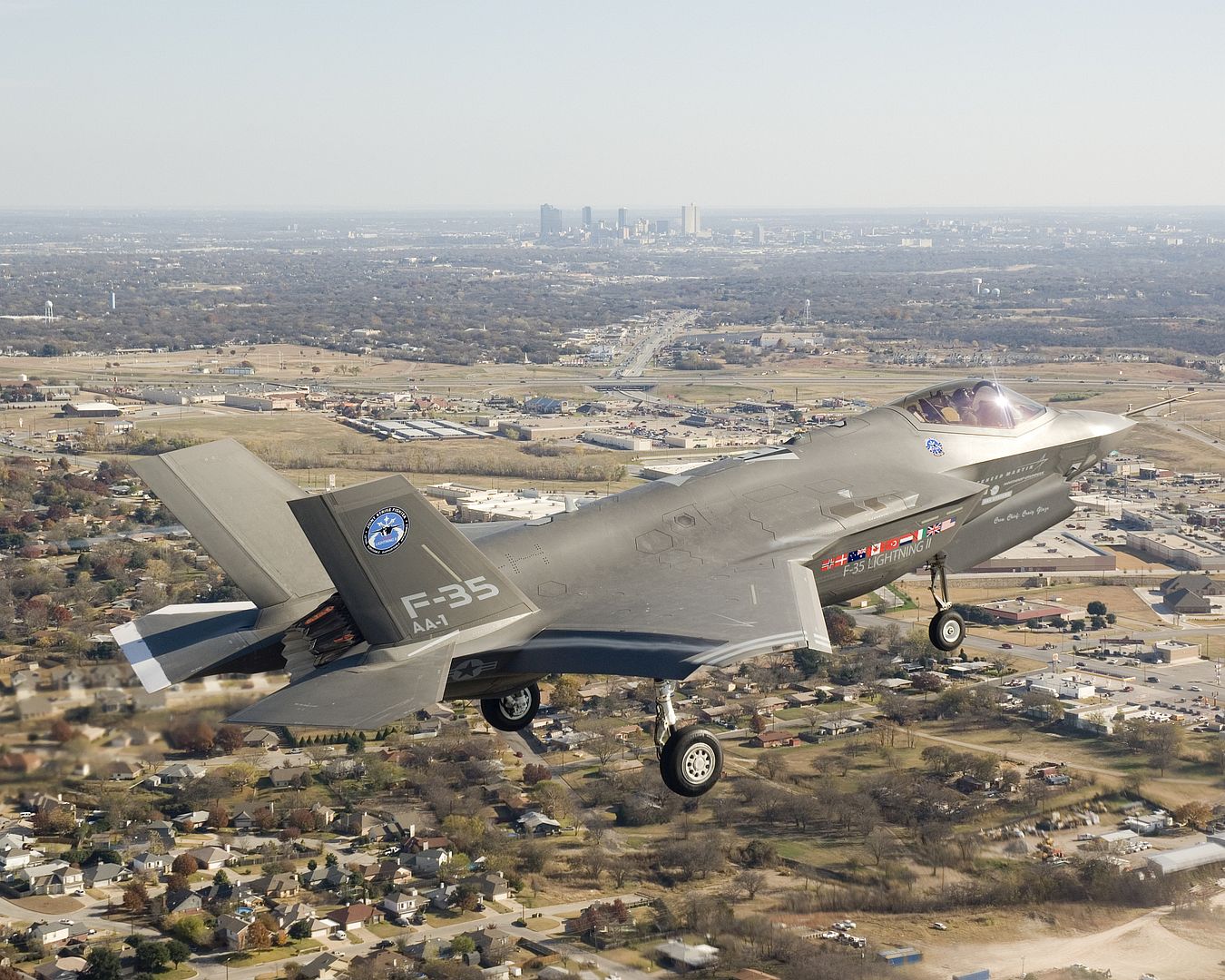
November 21, 2024
Bombardier today announced that its industry-leading Global 7500 business jet has soared to new record-setting heights, adding to its already impressive speed record performances with more than 75 records in the books – a truly incredible accomplishment.(1) The new records include Miami to São Paulo, Tokyo to Los Angeles, Tokyo to San Jose, Jeddah to London and Los Angeles to Auckland. These accomplishments build on earlier records, including an 8,225 nautical mile flight in October 2019 from Sydney, Australia to Detroit, Michigan, the longest flight ever recorded in business aviation.
“These blazing new speed records continue to show that the Global 7500 is the proven, undisputed leader in its category and the business aircraft with amazing performance, bringing our customers to far-flung destinations quickly and reliably,” said Jean-Christophe Gallagher, Executive Vice President, Aircraft Sales and Bombardier Defense. “What’s even more impressive about these records is they are flown as part of routine aircraft movements, including some missions that have passengers onboard. We have on more than one occasion been thrilled to have customers and prospects be aboard for the record setting city pairs.”
The Global 7500 features a top speed of Mach 0.925 and a baseline range of 7,700 nautical miles (14,260 km), making it the ultimate record-setting time machine. The impressive performance attributes of the aircraft were on full display with some of the new records, including Tokyo to Hong Kong in just 3 hours and 40 minutes; New Delhi to Tokyo in just 7 hours; and Los Angeles to Auckland in 11 hours and 55 minutes.
The aircraft’s unique Smooth Flĕx Wing is like an in-air shock absorber, designed with a sophisticated slats and flap system that generates exceptional lift on takeoff and approach, maximizing aerodynamic efficiency and boosting performance while improving safety and offering the industry’s smoothest ride. It also reduces fuel burn, lowers emissions and produces excellent short-field and high-speed performance – the type of journey its discerning customers expect.
And while the Global 7500 sets the bar high when it comes to performance, it’s also an exquisite home office in the sky – a productive business tool offering customers all the accoutrements of their preferred work environment.
The incredible attributes of the Global 7500 aircraft will be enhanced even more with the introduction of the Global 8000 (2) aircraft, announced in 2022. Bombardier’s flagship for a new era is anticipated to have an industry-leading range of 8,000 nautical miles and a top speed of Mach 0.94, making it the ultimate all-in-one business aircraft. It is also expected to have a low cabin altitude of less than 2,900 feet when flying at 41,000 ft.
Manufacturing for Bombardier’s Global 8000 aircraft is currently underway at Bombardier manufacturing sites in Canada, the U.S. and Mexico, and the program is progressing to plan toward entry into service in 2025.
In anticipation of the planned entry-into-service of the Global 8000 business jet, an upgrade is currently available for purchase by existing Global 7500 aircraft customers through one of Bombardier’s aircraft service centres. Benefits of the upgrade will include enhancing the aircraft’s top speed, increasing its range and providing passengers with exceptionally low cabin altitudes.
-
 Main AdminA U.S. Air Force KC-46A Pegasus assigned to the 133rd Expeditionary Air Refueling Squadron flies within the U.S. Central Command area of responsibility, Nov. 15, 2024. The KC-46 is the Air Force’s newest aerial refueling platform, which started its first operational deployment to the USCENTCOM AOR in early October. (Photo by Airman 1st Class Zeeshan Naeem)
Main AdminA U.S. Air Force KC-46A Pegasus assigned to the 133rd Expeditionary Air Refueling Squadron flies within the U.S. Central Command area of responsibility, Nov. 15, 2024. The KC-46 is the Air Force’s newest aerial refueling platform, which started its first operational deployment to the USCENTCOM AOR in early October. (Photo by Airman 1st Class Zeeshan Naeem)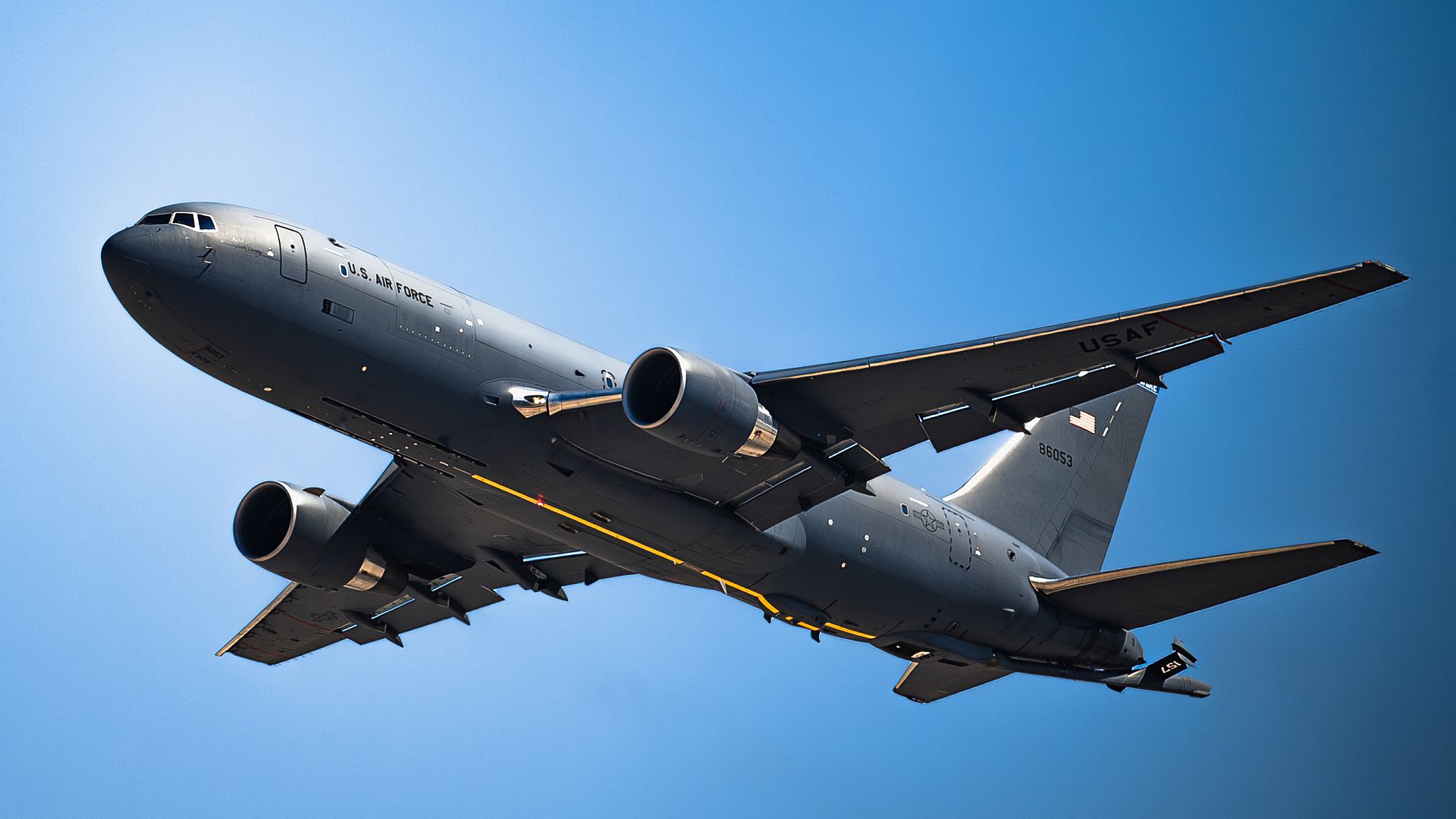
Two Royal Air Force Eurofighter Typhoons fly in formation with a U.S. Air Force B-52H Stratofortress within the U.S. Central Command area of responsibility Nov. 18, 2024. The deployment of the long-range heavy bombers into the USCENTCOM theater demonstrates the United States’ dedication to deterring aggression and maintaining stability in the region alongside allies and partners. (Photos by Staff Sgt. Gerald Willis)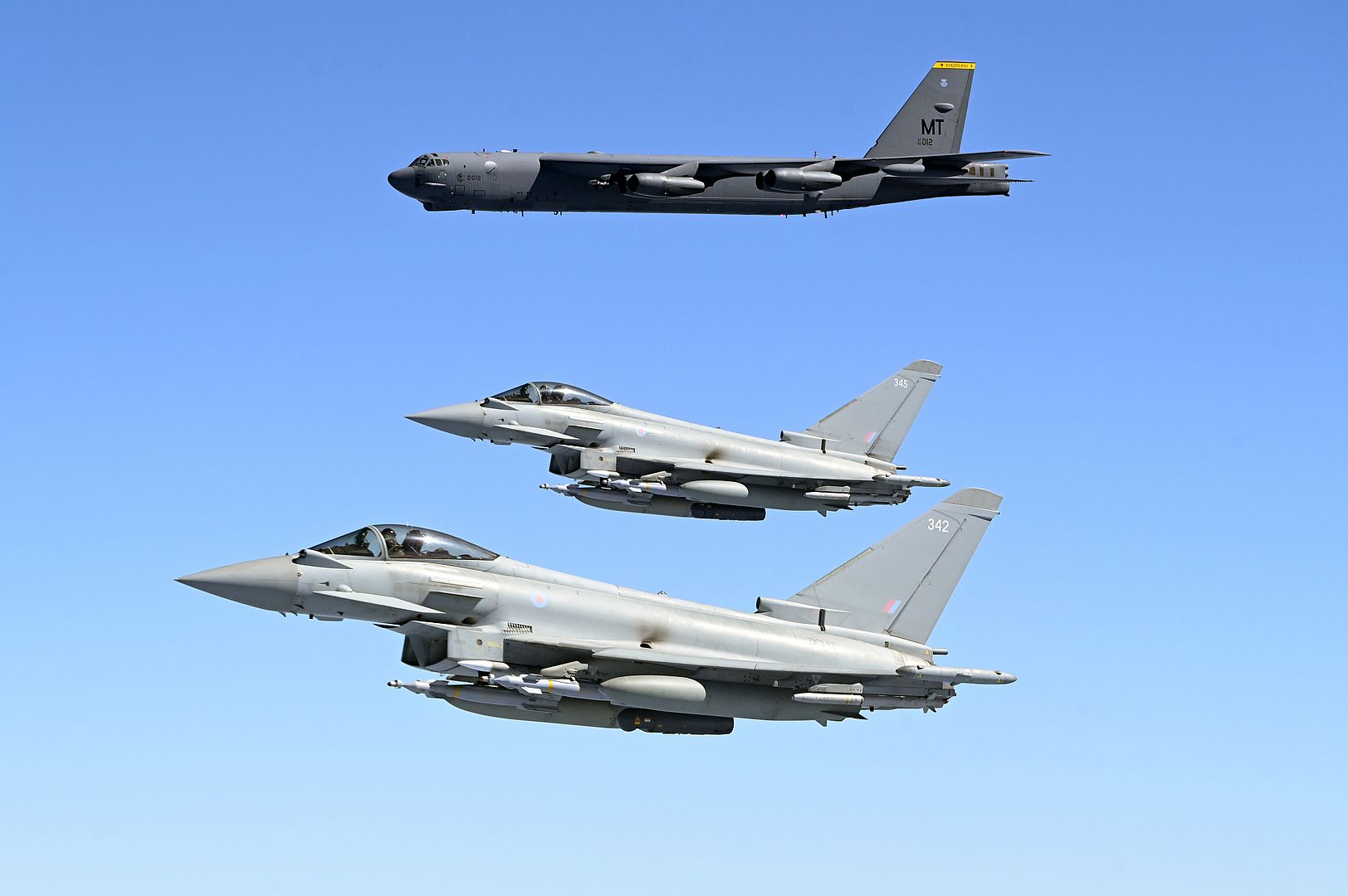

(Below courtesy of the RAF)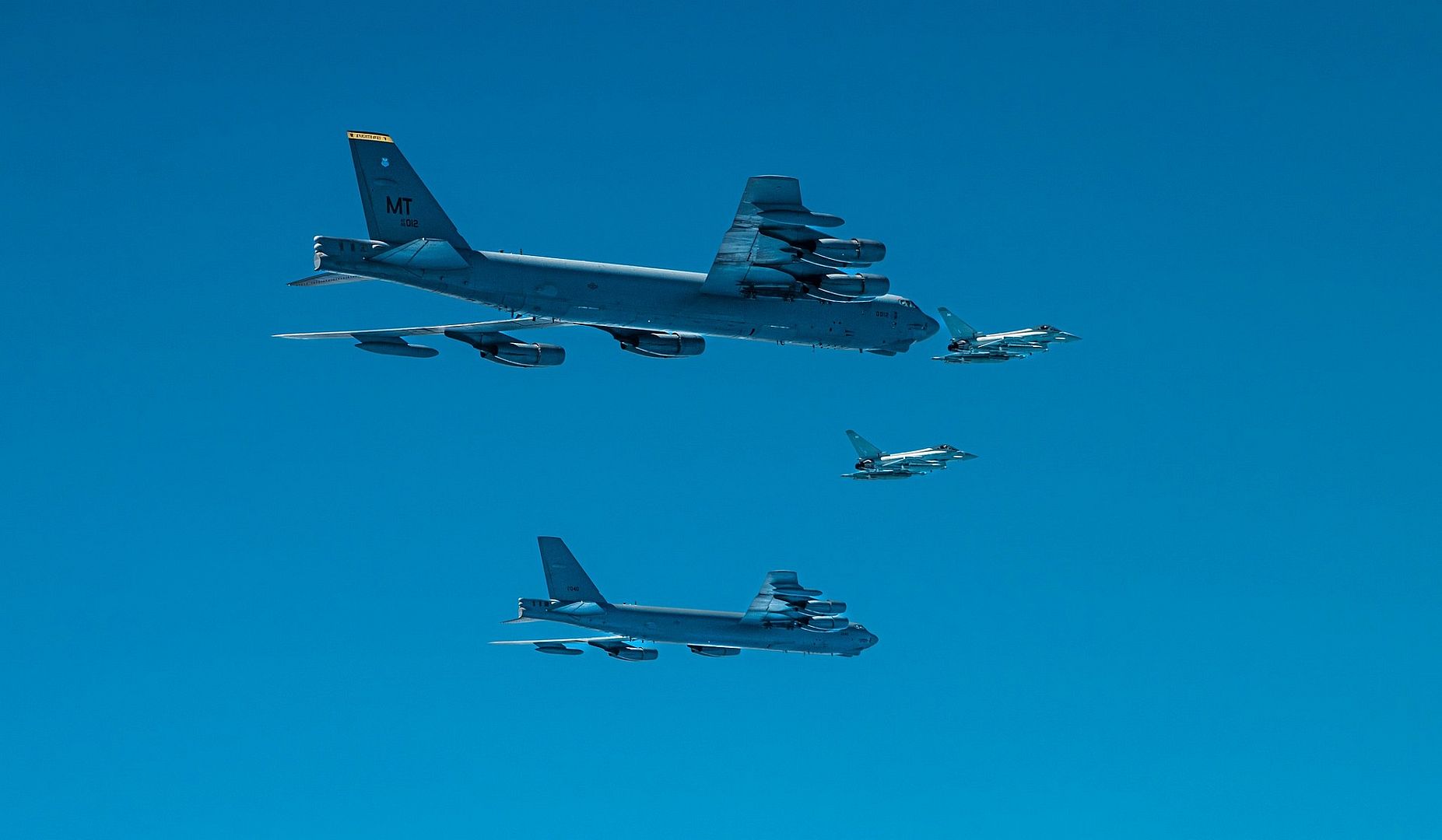
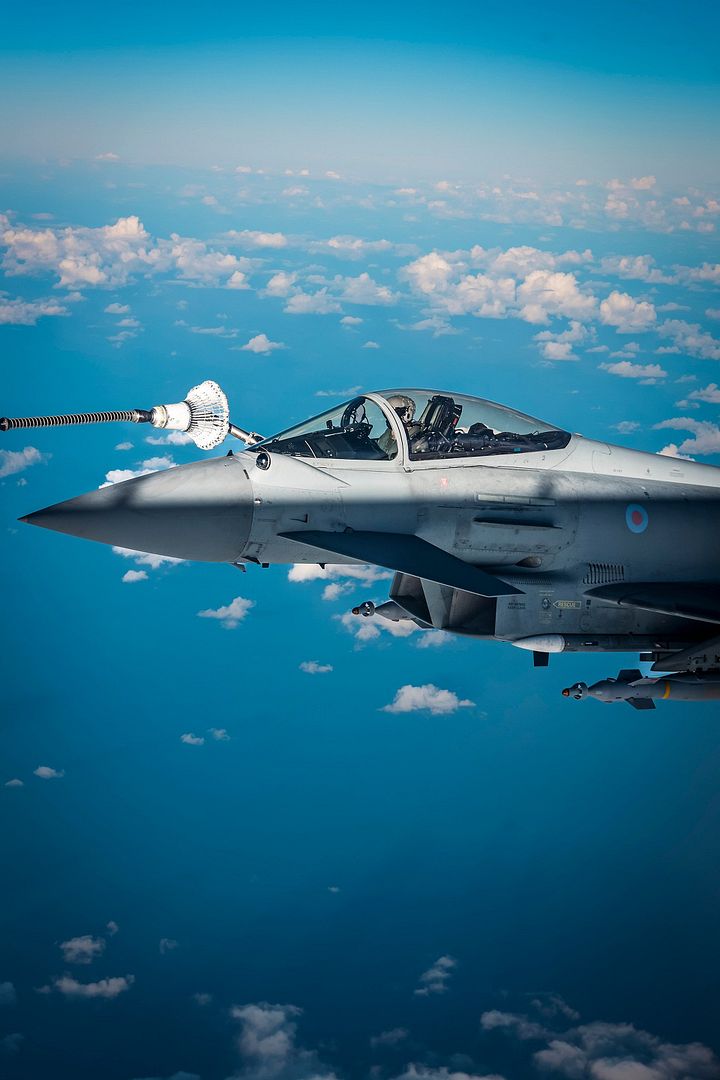
IOWA CITY, Iowa, Nov. 21, 2024 /PRNewswire/ -- Lockheed Martin Skunk Works® (NYSE: LMT), in partnership with Lockheed Martin's Demonstrations and Prototypes organization and the University of Iowa's Operator Performance Laboratory (OPL), showcased a crewed-uncrewed teaming mission where an airborne battle manager issued real-time commands to AI-controlled aircraft through a touchscreen pilot vehicle interface (PVI).
In a series of flight tests, the Skunk Works and OPL teams simulated an offensive counter air mission where an airborne, human "battle manager" aboard an L-39 Albatros assigned targets to two AI-controlled L-29 Delfin jets, which then worked together to defeat two mock enemy jets using simulated mission systems and weapons.
"The work we're doing with the University of Iowa's OPL is foundational for the future of air combat, where a family of crewed and uncrewed systems will work together to execute complex missions," said John Clark, vice president and general manager, Lockheed Martin Skunk Works. "We're excited to leverage our diverse skillsets to advance all elements of this new way of operating."
These flight tests build on previous experiments that demonstrated AI-controlled air-to-ground jamming and geolocation. This year, the tests shifted to AI in air-to-air combat, where AI sends commands directly to the planes' autopilots. This is the third test of this type and the first to include a real-time human battle manager overseeing the AI's actions.
Skunk Works is dedicated to enabling crewed-uncrewed teaming to optimize operational flexibility, abbreviate data-to-decision timelines and improve pilot safety. We continue to invest in collaborative enablers to keep our customers ahead of emerging threats.
About Lockheed Martin
Lockheed Martin is a global defense technology company driving innovation and advancing scientific discovery. Our all-domain mission solutions and 21st Century Security® vision accelerate the delivery of transformative technologies to ensure those we serve always stay ahead of ready. More information at Lockheedmartin.com.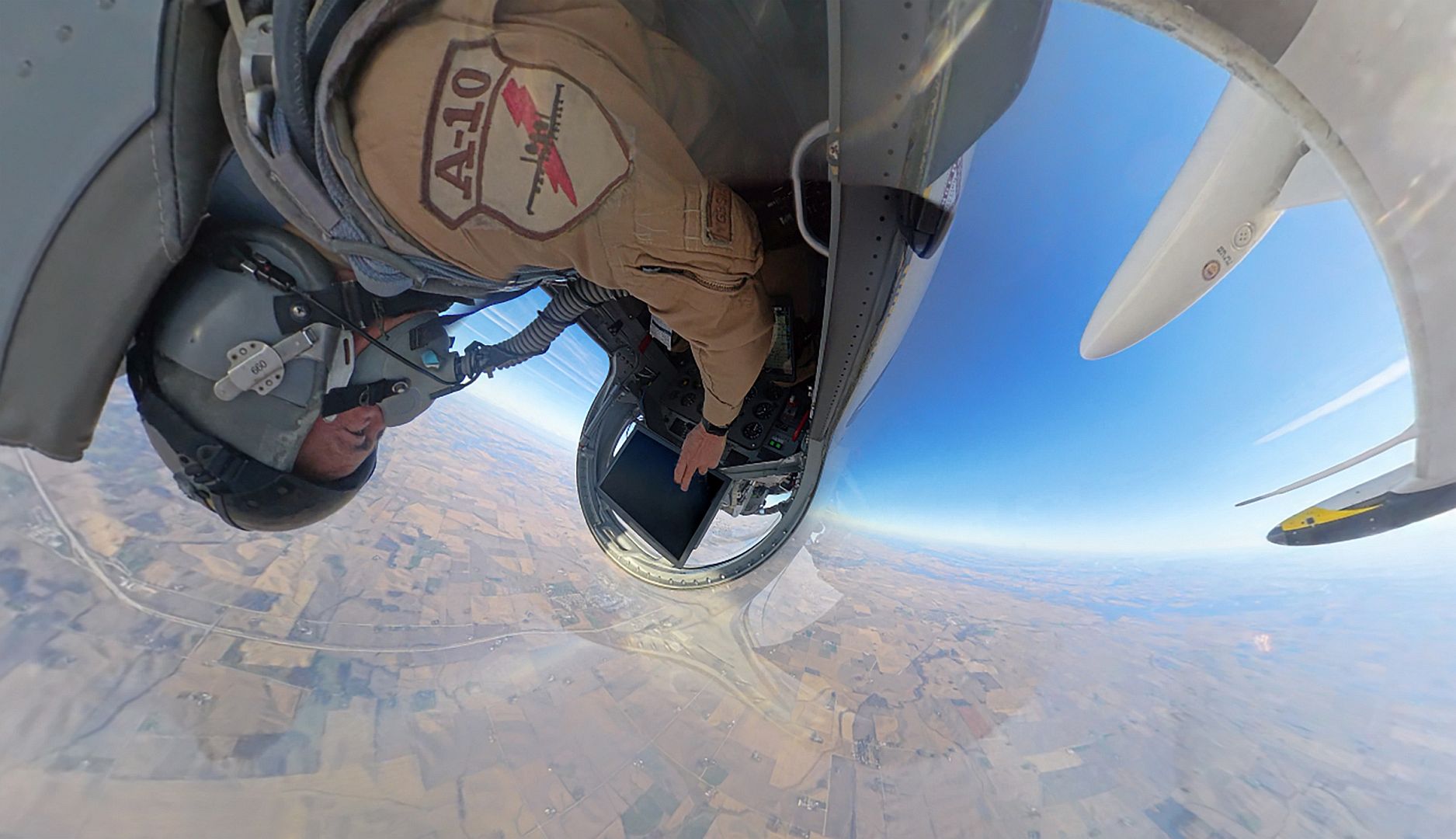
EVERETT, Wash., Nov. 21, 2024―Boeing [NYSE: BA] will build 15 additional KC-46A Pegasus tankers under a Lot 11 contract award from the U.S. Air Force valued at $2.38 billion. In all, Boeing has 168 KC-46A multi-mission aerial refuelers on contract globally, providing advanced capability advantages for the joint force and allies.
“We appreciate our continued partnership with the U.S. Air Force,” said Lynn Fox, vice president and KC-46 program manager. “This is another big milestone for our team, and we look forward to delivering the world’s most advanced multi-mission aerial refuelers for years to come.”
The KC-46A continues to demonstrate its unparalleled capabilities having flown more than 100,000 flight hours and offloaded more than 200 million pounds of fuel to receivers globally. In October, the Pegasus made its inaugural full-scale operational deployment after the U.S. Air Force Air Mobility Command approved the KC-46A for global combat operations in 2022.
In July, the Air Force awarded Boeing a contract to upgrade the mission readiness and performance of the KC-46A tanker. This builds on the 2023 Block 1 upgrade, further enhancing the tanker’s advanced communications, data connectivity and situational awareness for aircraft survivability and operational advantage in contested environments.
Since 2019, Boeing has delivered 89 KC-46As to the U.S. Air Force and four to the Japan Air Self-Defense Force.
# # #
As a leading global aerospace company, Boeing develops, manufactures and services commercial airplanes, defense products and space systems for customers in more than 150 countries. As a top U.S. exporter, the company leverages the talents of a global supplier base to advance economic opportunity, sustainability and community impact. Boeing's diverse team is committed to innovating for the future, leading with sustainability, and cultivating a culture based on the company's core values of safety, quality and integrity. Join our team and find your purpose at boeing.com/careers.
(Photo by Airman 1st Class Zeeshan Naeem)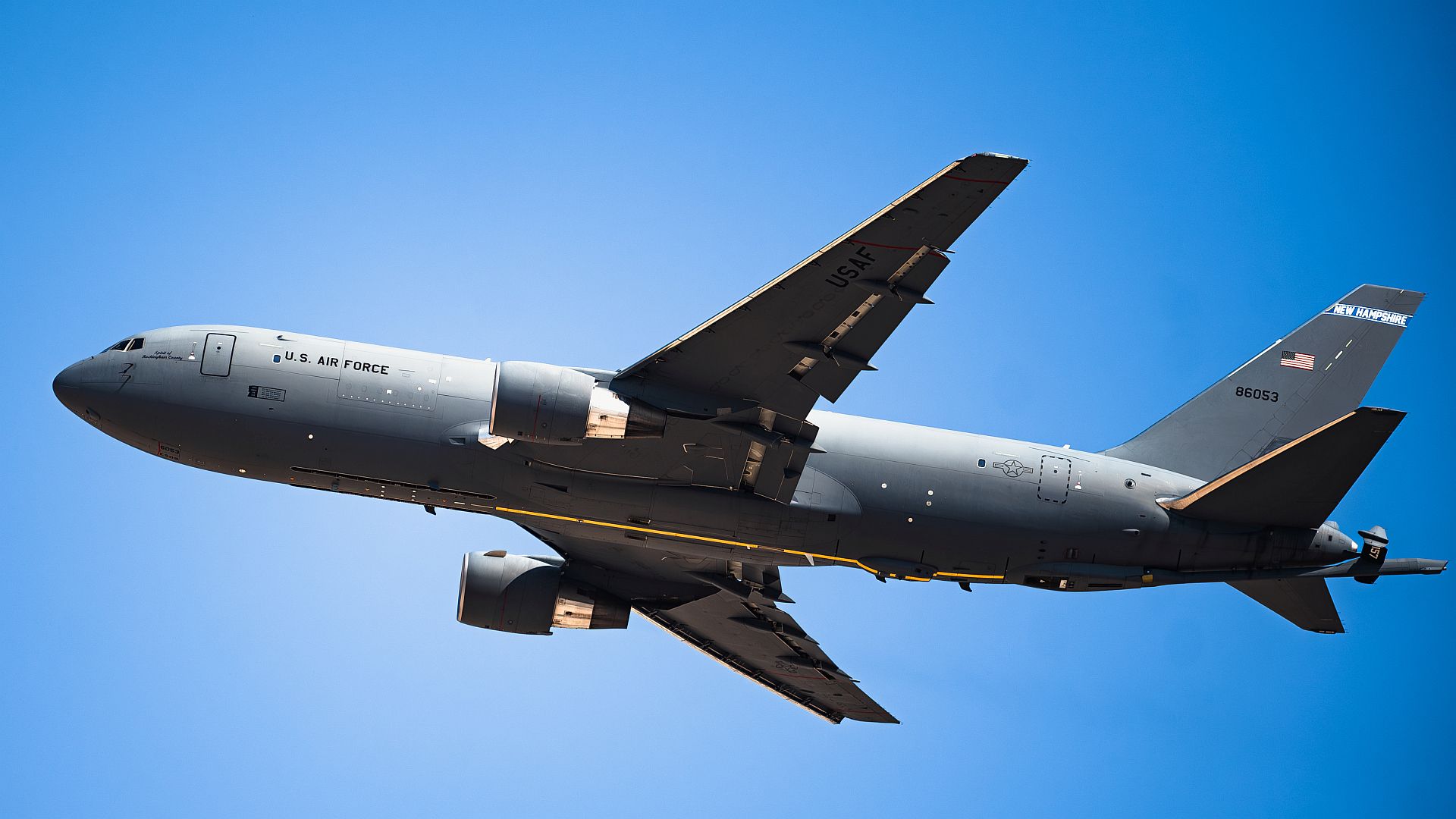
WICHITA, Kan. (November 21, 2024) — Textron Aviation Inc., a Textron Inc. (NYSE:TXT) company, today announced a two-aircraft purchase agreement with AIR Marshall Islands Inc. (AMI) for its twin-engine, large-utility turboprop, the Cessna SkyCourier. The two aircraft – both passenger variants - will be used to support travel throughout the communities within the Marshall Islands.
“The Cessna SkyCourier is an excellent choice to support the mission of AIR Marshall Islands. With its low operating costs and maximum cabin flexibility, the SkyCourier is a real game-changer in regional connectivity,” said Lannie O’Bannion, senior vice president, Global Sales and Flight Operations, Textron Aviation. “This order is an excellent example of the SkyCourier’s unmatched capabilities for a variety of mission profiles, and also highlights Textron Aviation’s commitment to delivering innovative solutions to meet the evolving needs of the aviation industry.”
AIR Marshall Islands is a commercially operated airline owned by the Government of the Republic of the Marshall Islands (RMI). It is based in Majuro, the capital city of the country, which is located in the South Pacific.
“AIR Marshall Islands is thrilled to add the Cessna SkyCourier to our fleet,” said Captain Albon Jelke, general manager & CEO of AIR Marshall Islands, Inc. “This exciting development is a major milestone in our efforts to modernize our aircraft, allowing us to provide more reliable and efficient flights across the Marshall Islands. Our new SkyCouriers are perfectly designed to reach the remote atolls and islands, ensuring that essential air services are accessible to both our local communities and visitors.”
The Cessna SkyCourier is meticulously designed to deliver unparalleled performance, unwavering reliability and cost-effective maintenance. With the ability to be operated by a single pilot and a generous payload capacity, the SkyCourier is the ultimate solution for air freight, passenger and special mission needs. The aircraft is highly adaptable and can effortlessly adjust configurations to effectively complete any mission, ensuring a significant return on investment.
About the Cessna SkyCourier
The Cessna SkyCourier twin-engine, high-wing turboprop offers a combination of performance and lower operating costs for air freight, commuter and special mission operators. It’s available in both freighter and passenger variants, as well with a Combi configuration or gravel kit for maximum flexibility.
The freighter variant is sized to handle up to three LD3 shipping containers with an impressive 6,000 pounds of payload capability. The 19-passenger variant includes crew and passenger doors for smooth boarding, as well as large cabin windows for natural light and views. Both configurations offer single-point pressure refueling to enable faster turnarounds.
The SkyCourier is powered by two wing-mounted Pratt & Whitney Canada PT6A-65SC turboprop engines and features the McCauley Propeller C779, a heavy-duty and reliable 110-inch aluminum four-blade propeller, which is full feathering with reversible pitch, designed to enhance the performance of the aircraft while hauling tremendous loads. The SkyCourier is operated with Garmin G1000 NXi avionics and has a maximum cruise speed of more than 200 ktas and a 900 nautical-mile maximum range.
Post a reply
- Go to Previous topic
- Go to Next topic
- Go to Welcome
- Go to Introduce Yourself
- Go to General Discussion
- Go to Screenshots, Images and Videos
- Go to Off topic
- Go to Works in Progress
- Go to Skinning Tips / Tutorials
- Go to Skin Requests
- Go to IJAAF Library
- Go to Luftwaffe Library
- Go to RAF Library
- Go to USAAF / USN Library
- Go to Misc Library
- Go to The Ops Room
- Go to Made in Germany
- Go to Campaigns and Missions
- Go to Works in Progress
- Go to Juri's Air-Raid Shelter
- Go to Campaigns and Missions
- Go to Works in Progress
- Go to Skinpacks
- Go to External Projects Discussion
- Go to Books & Resources
